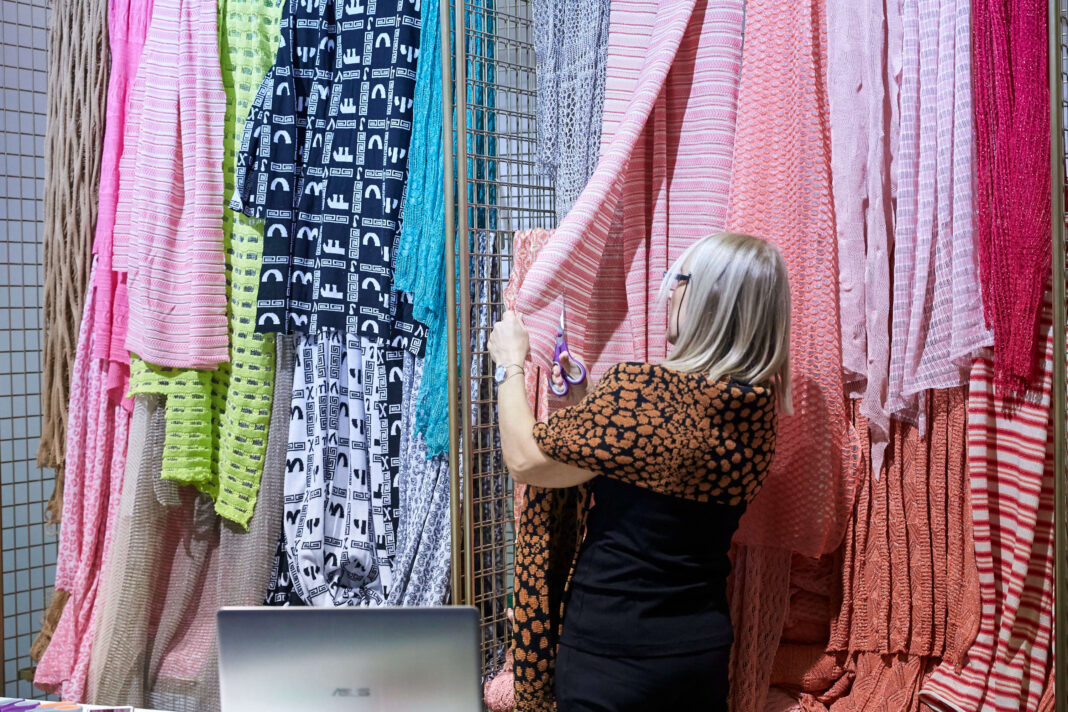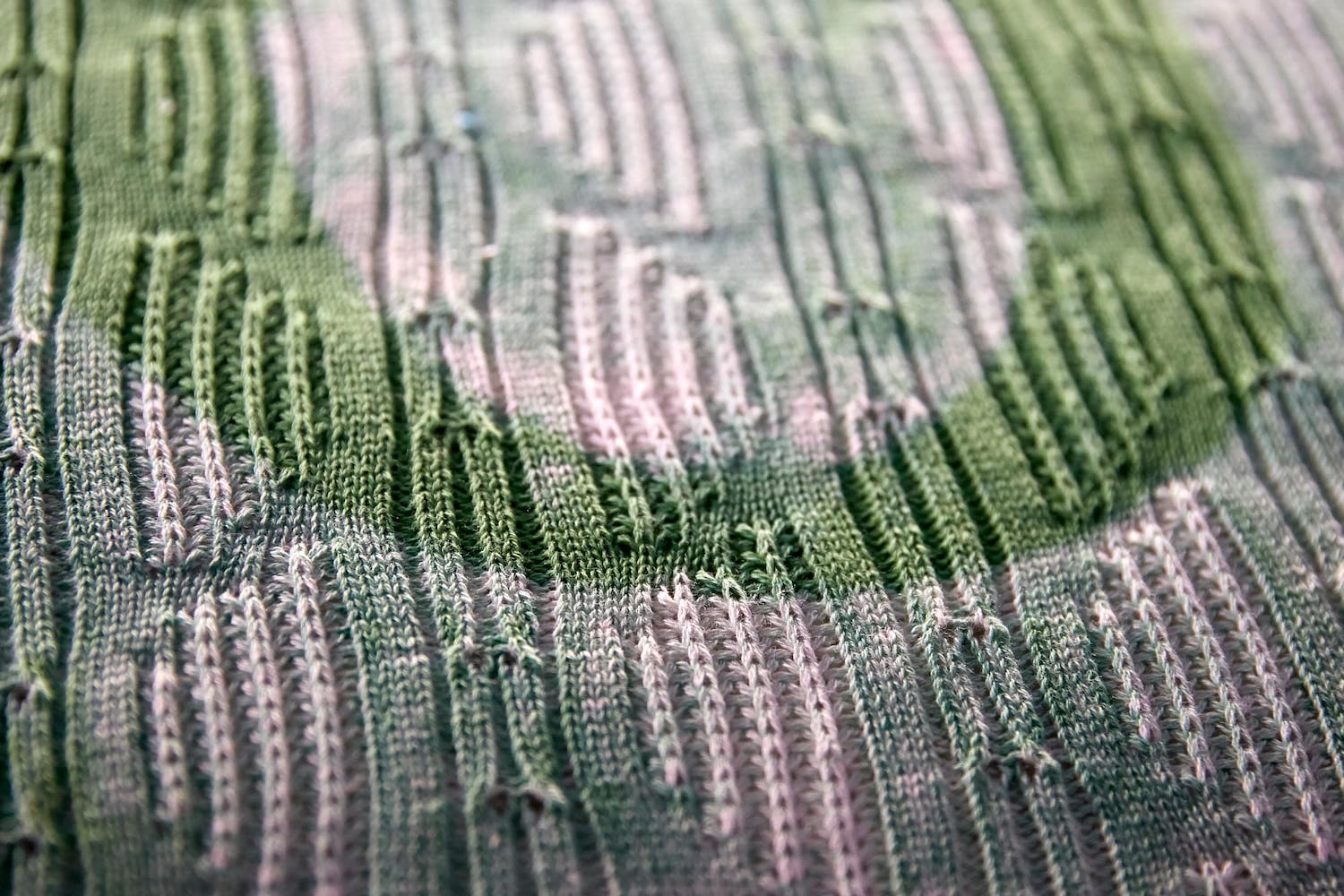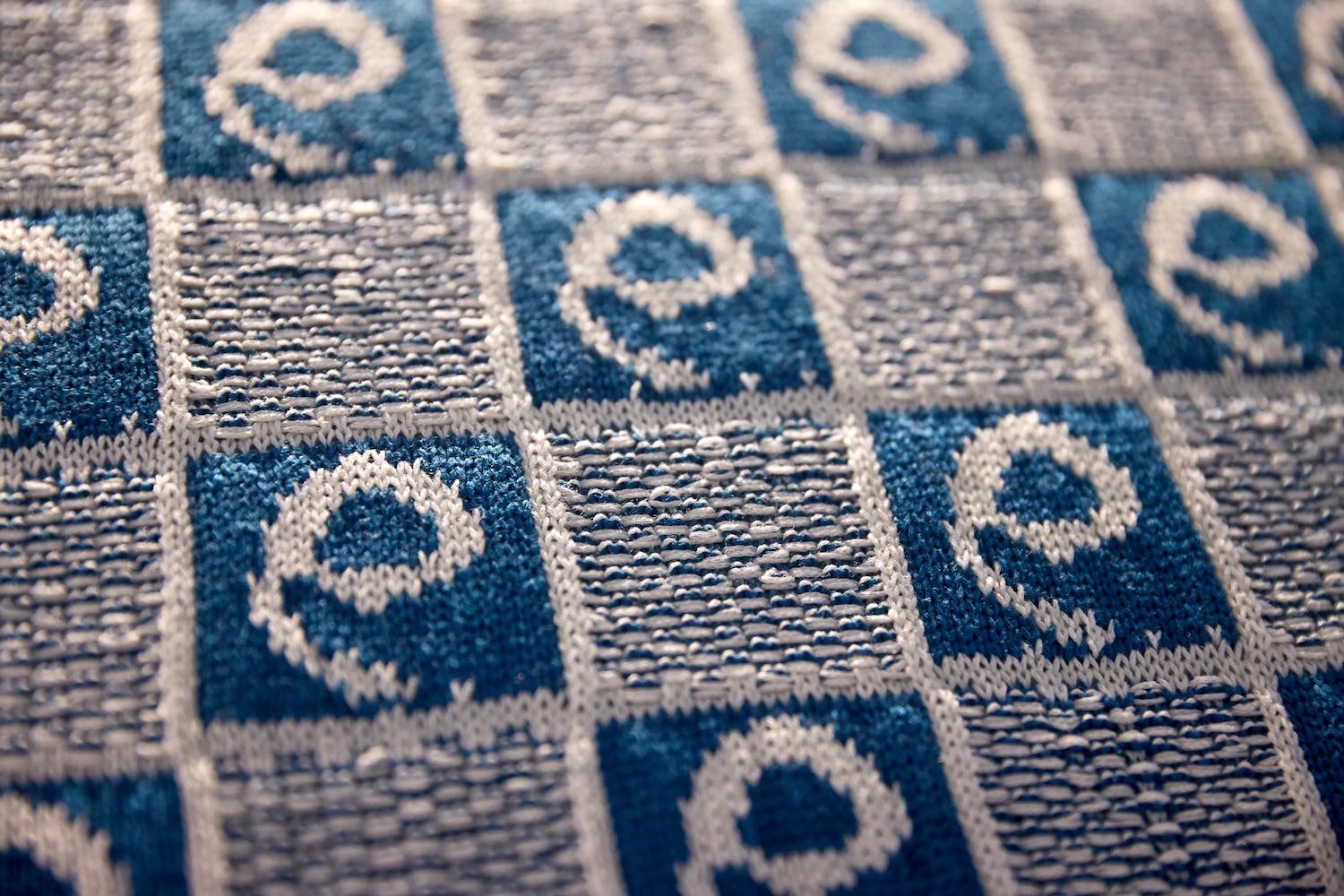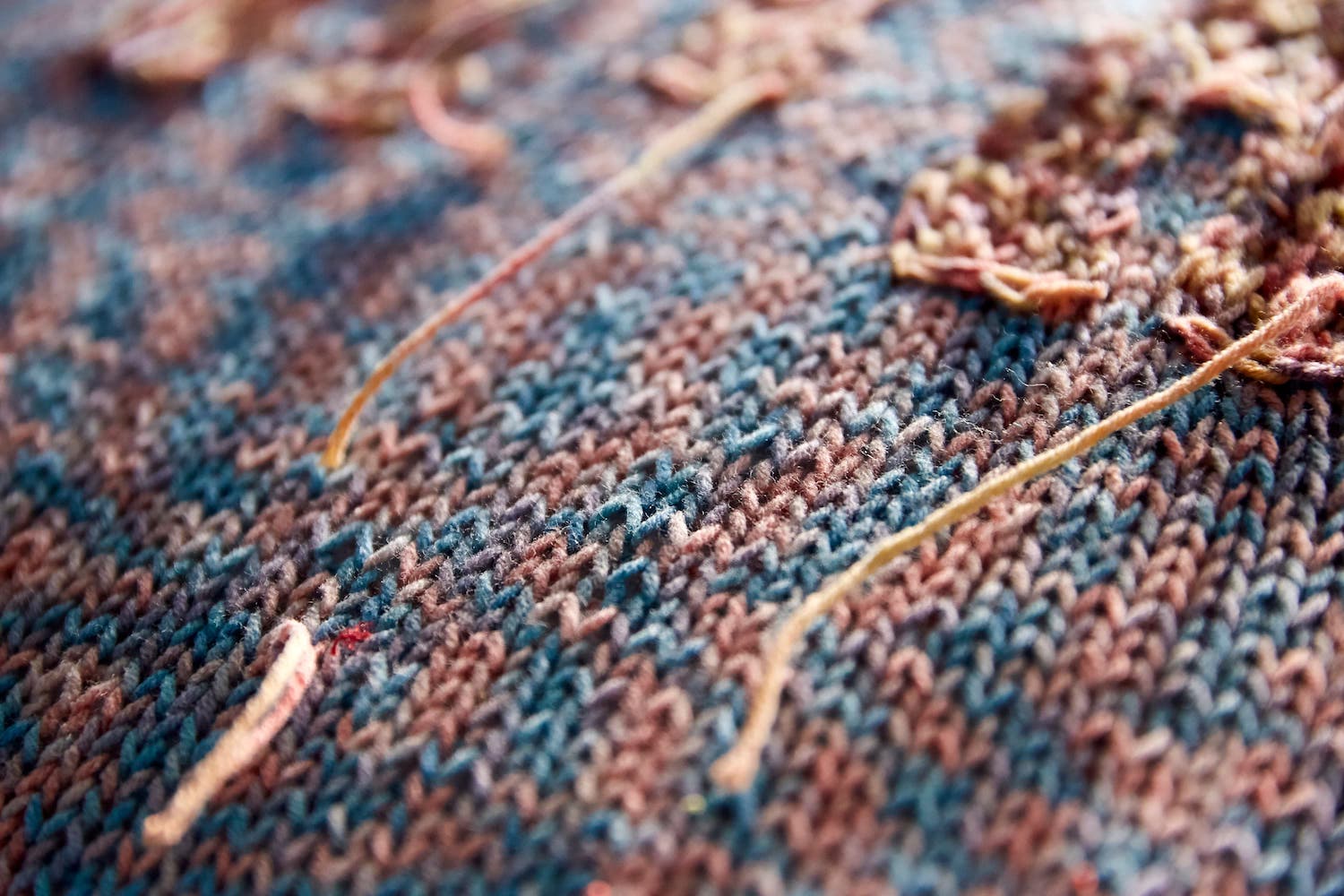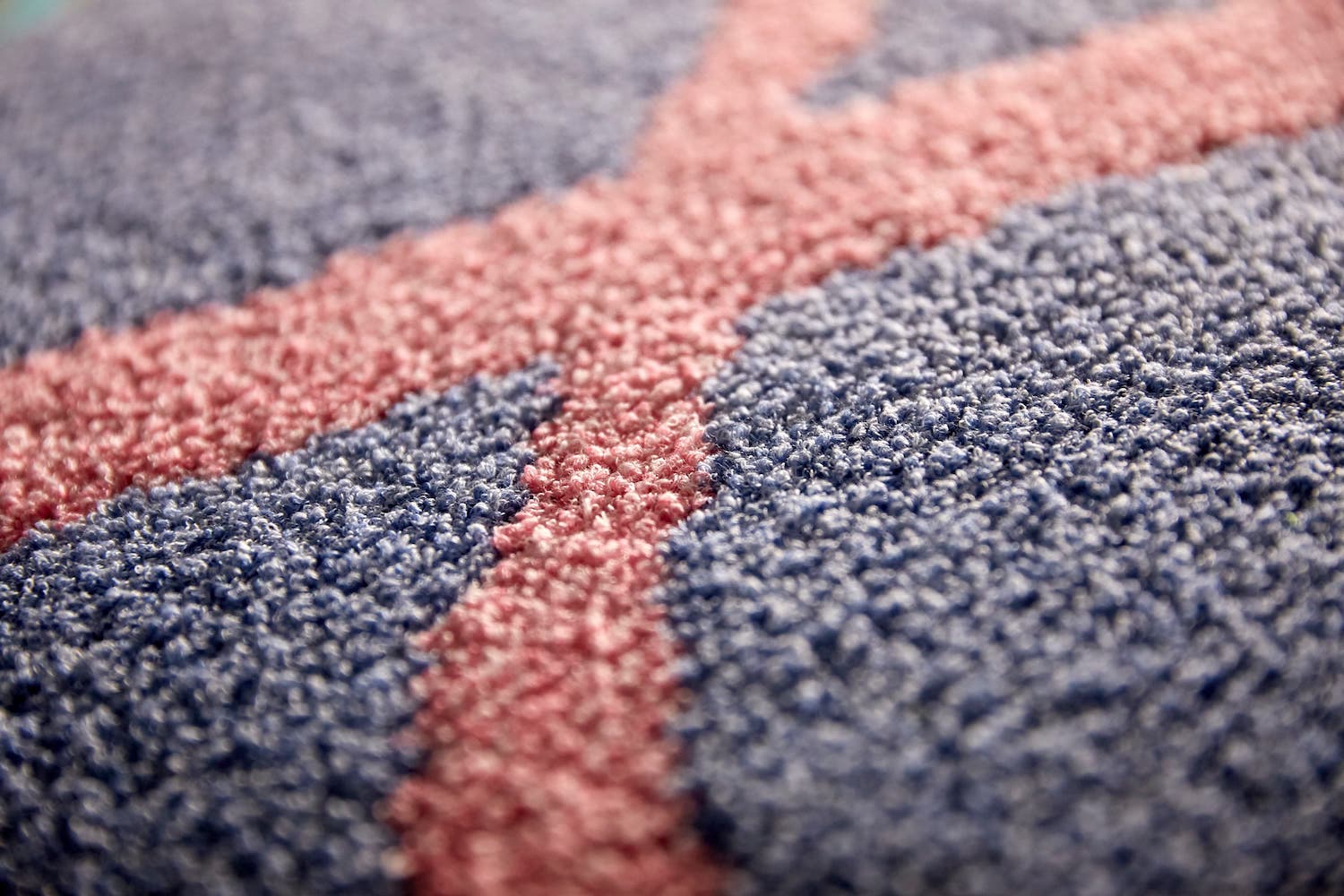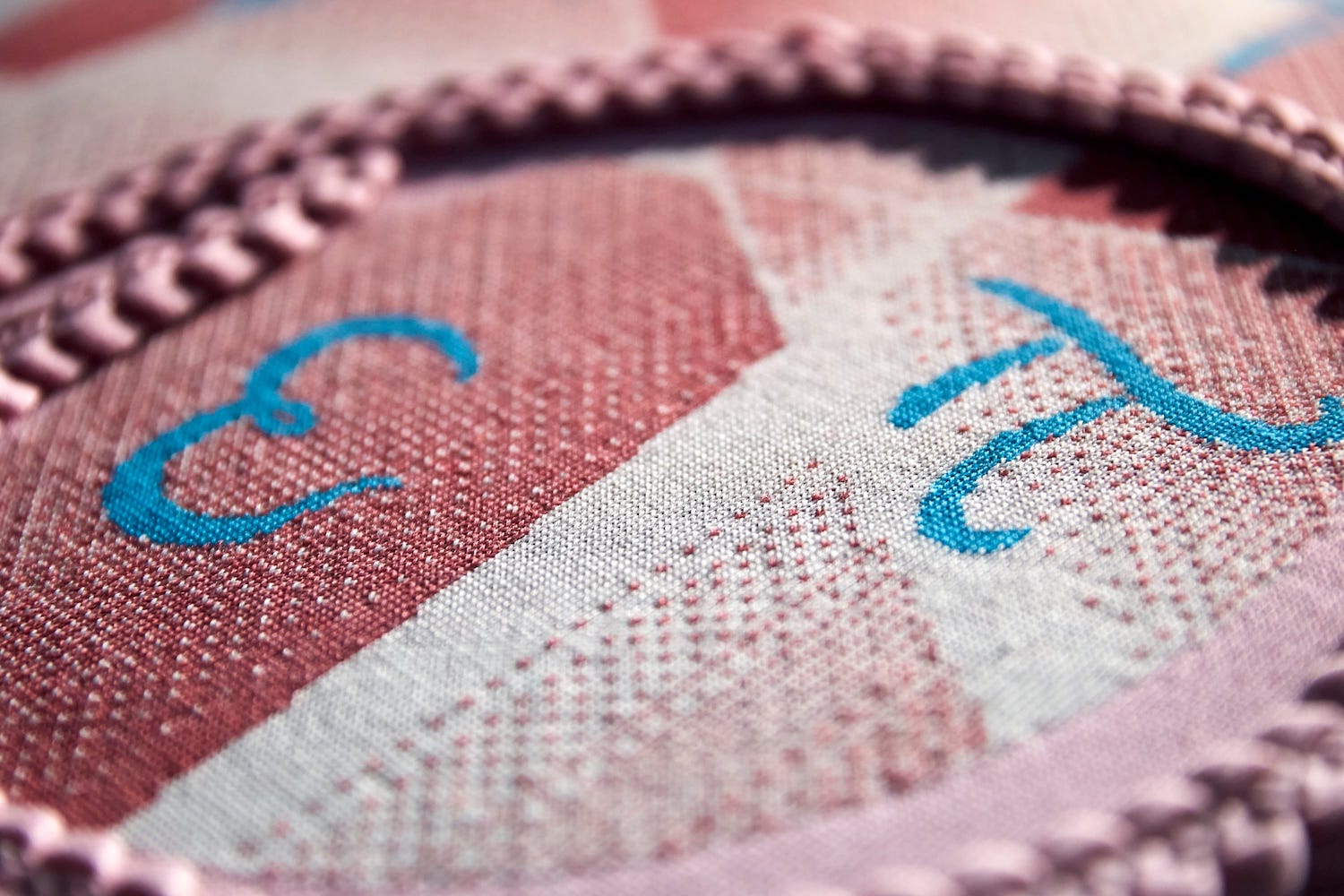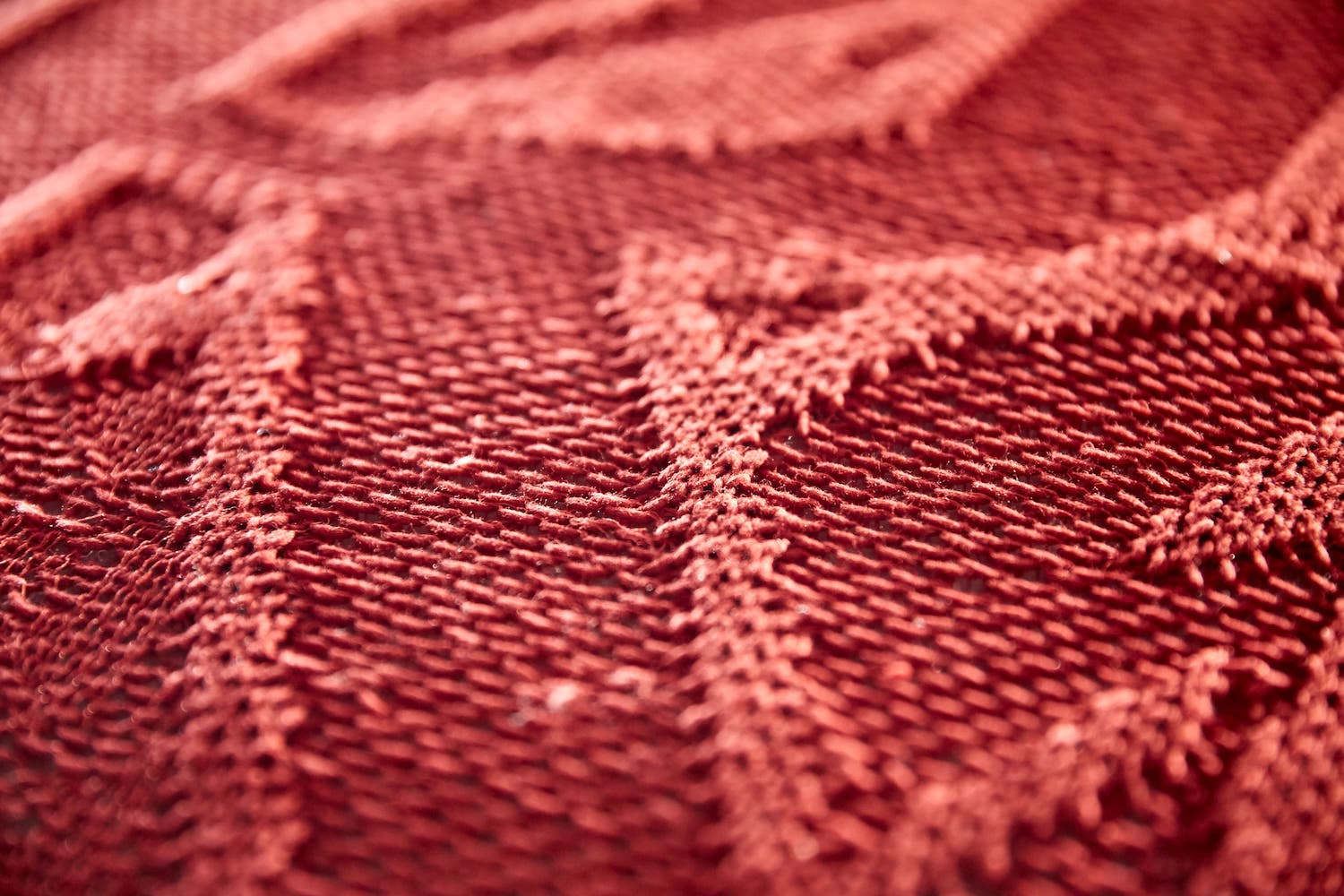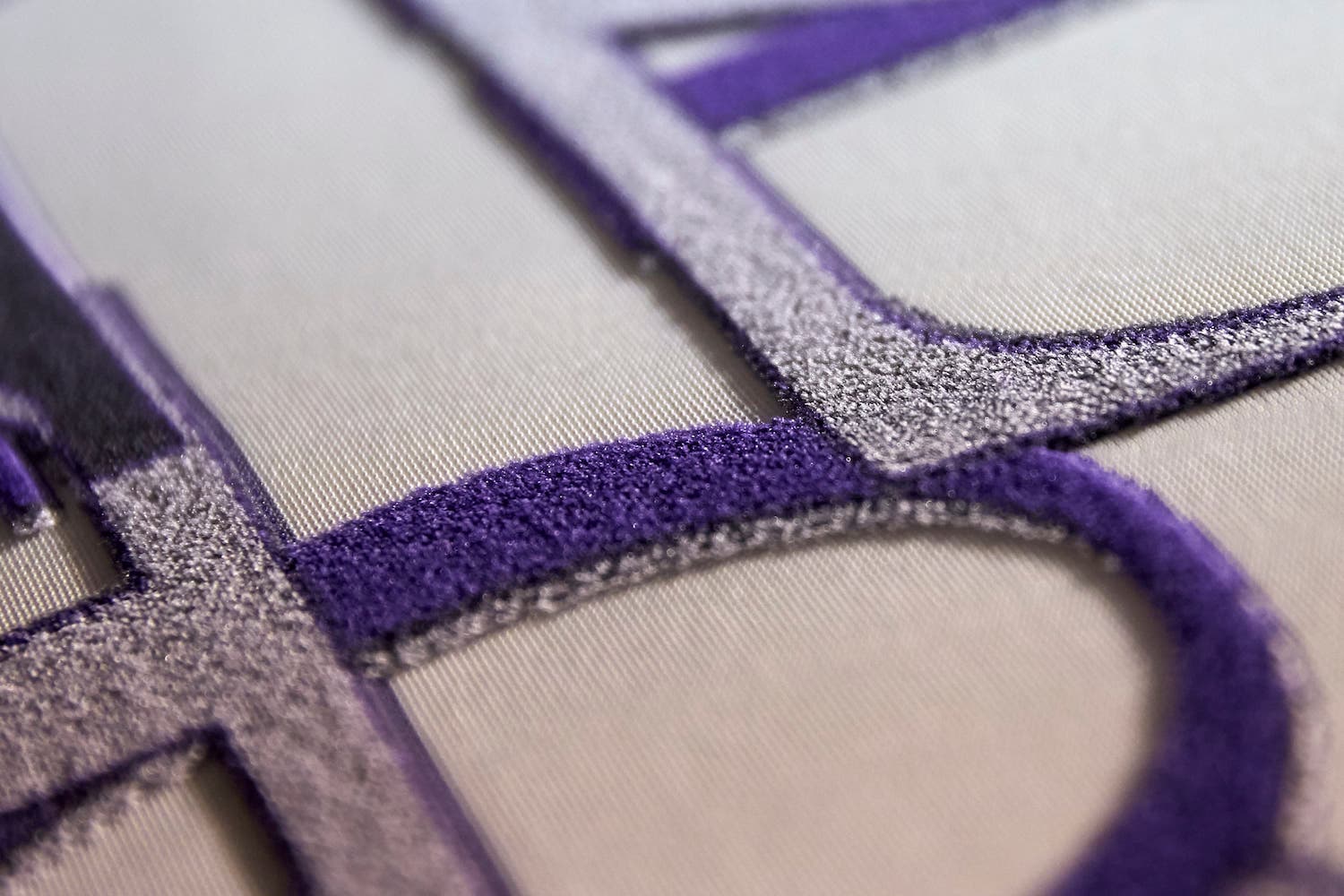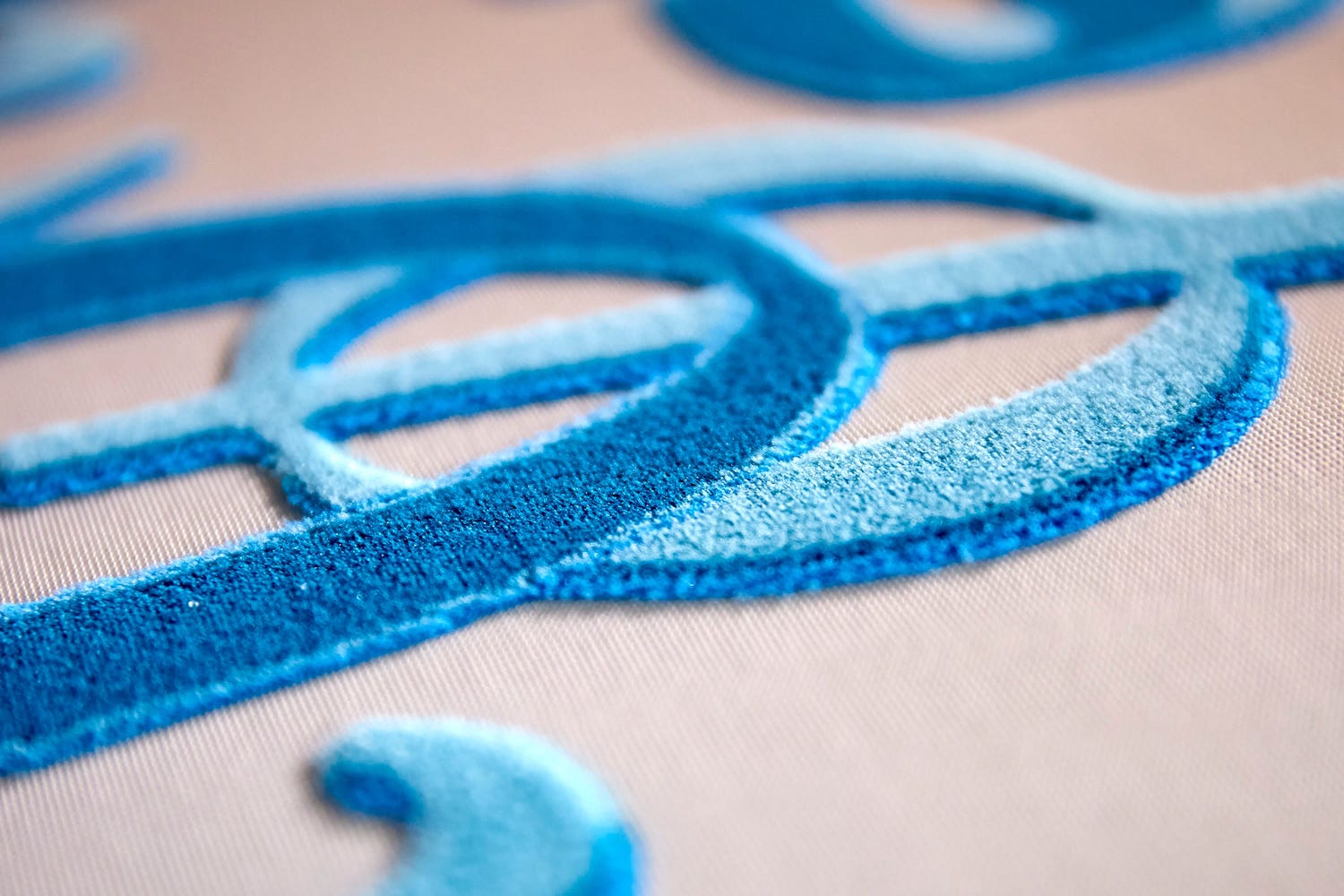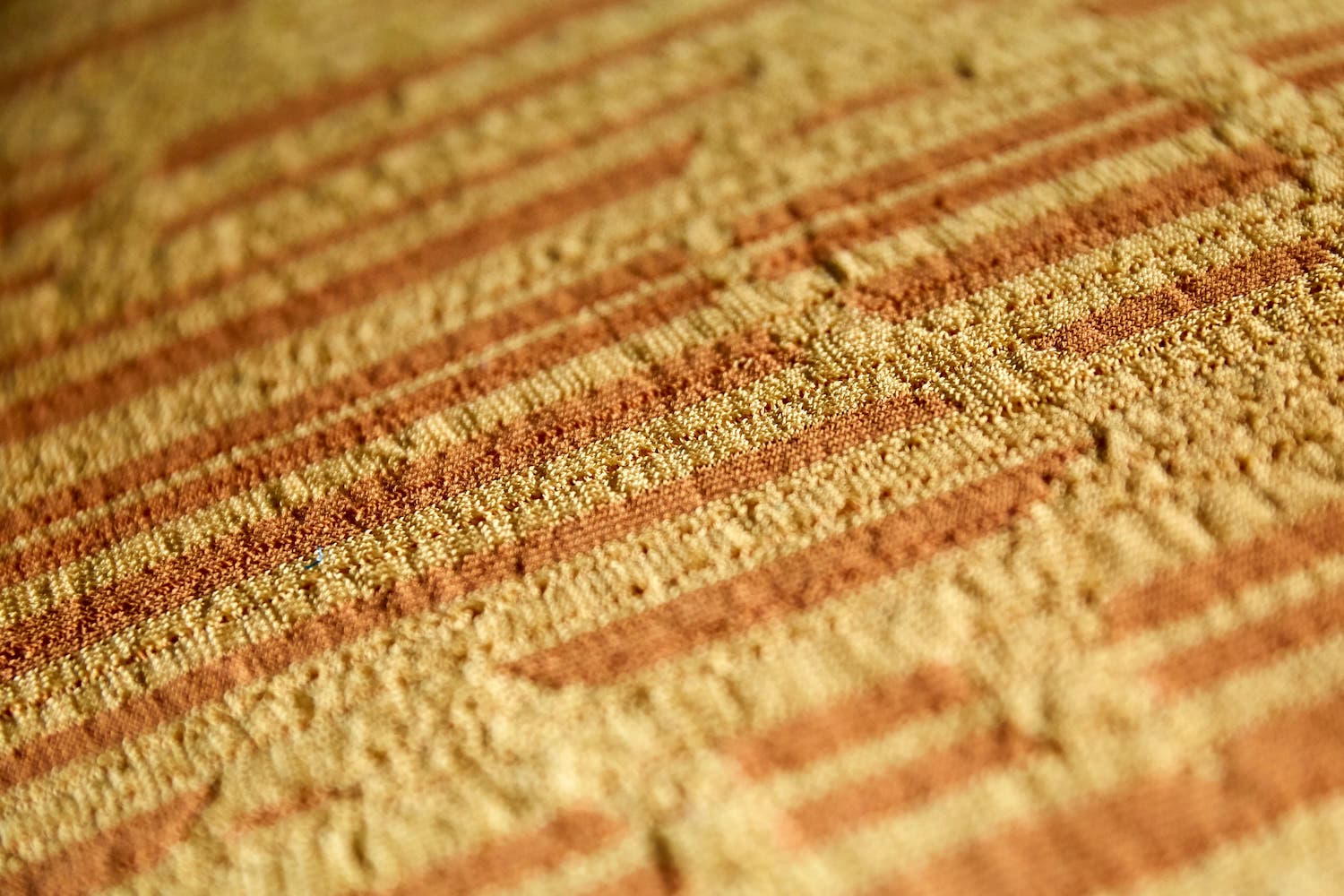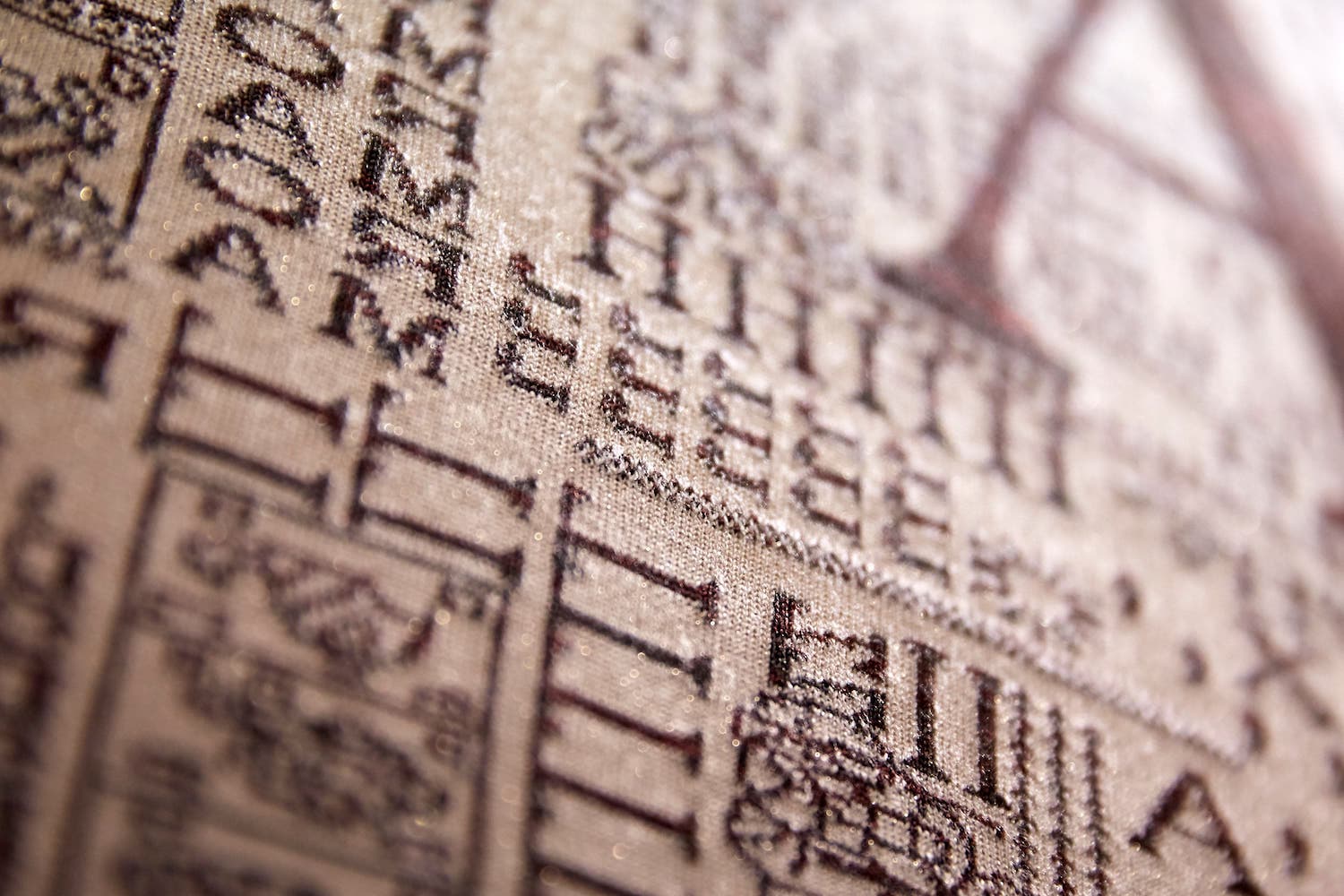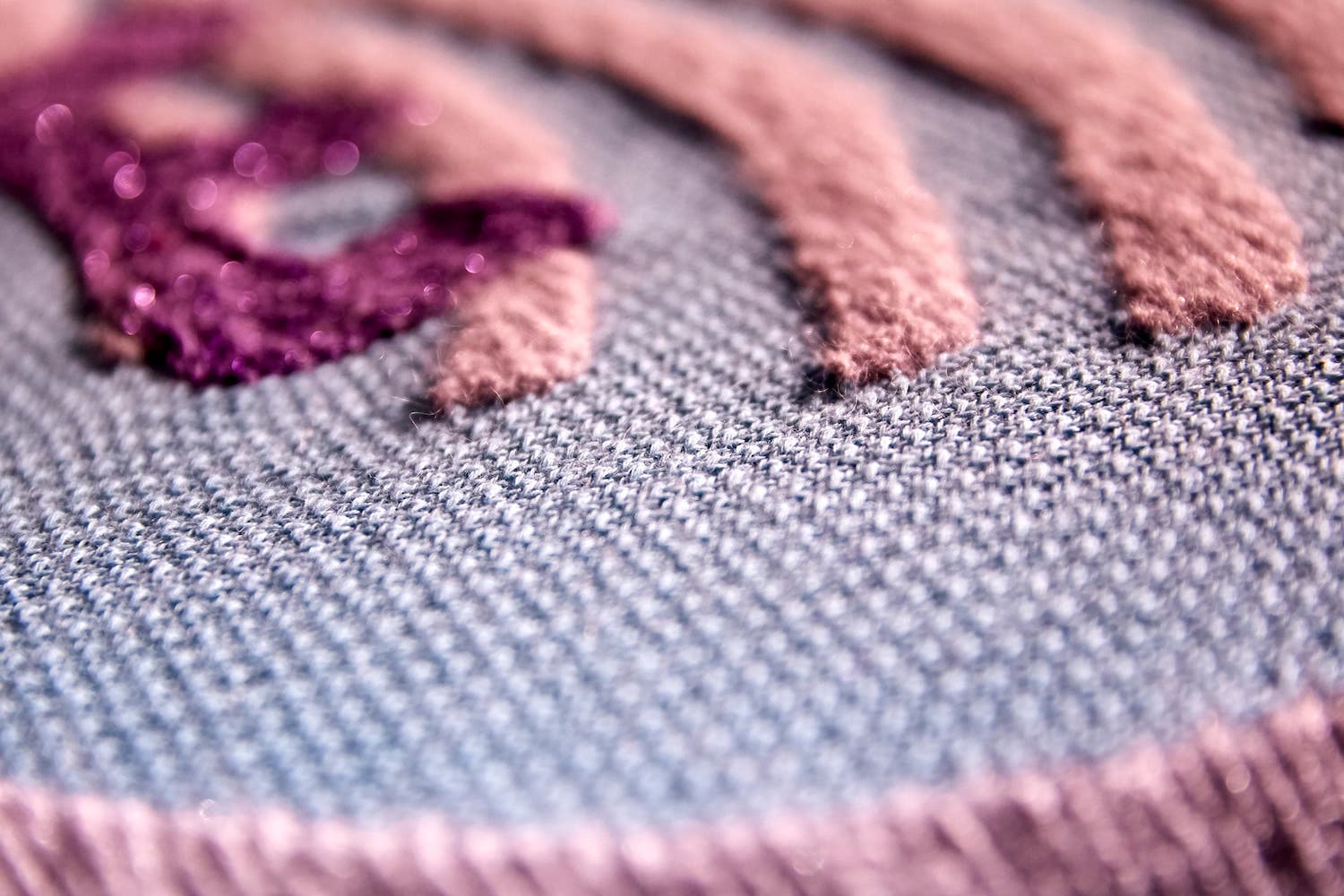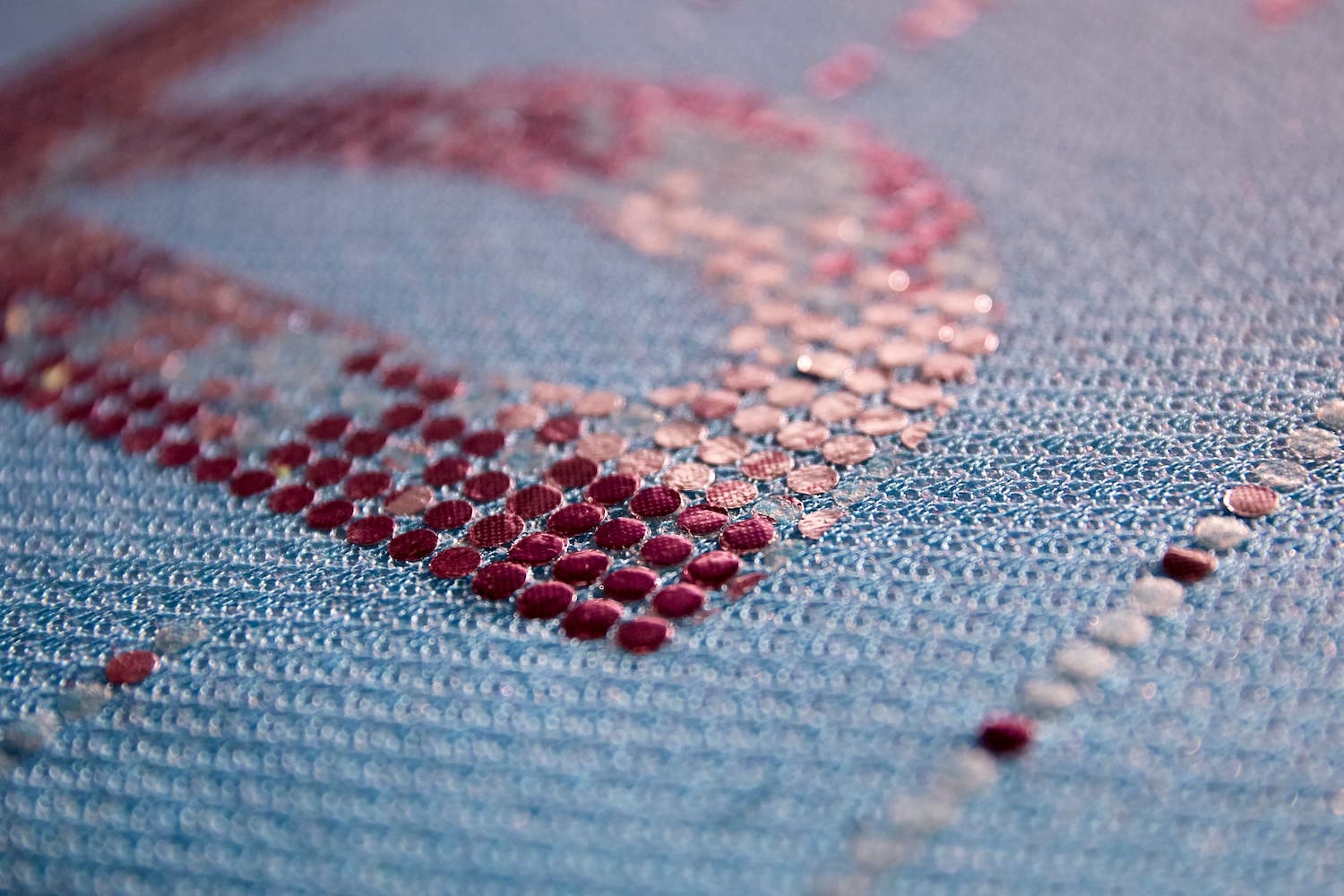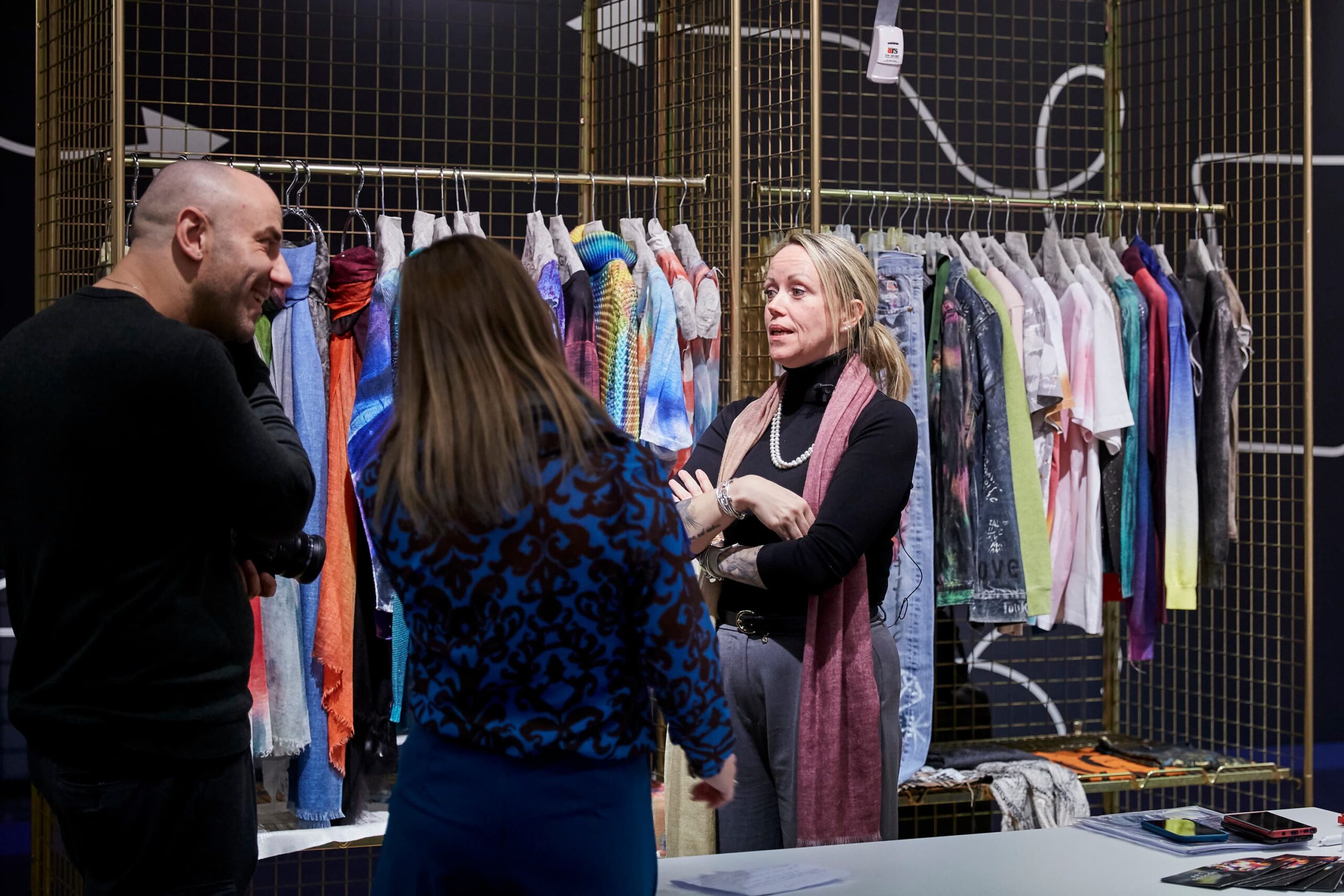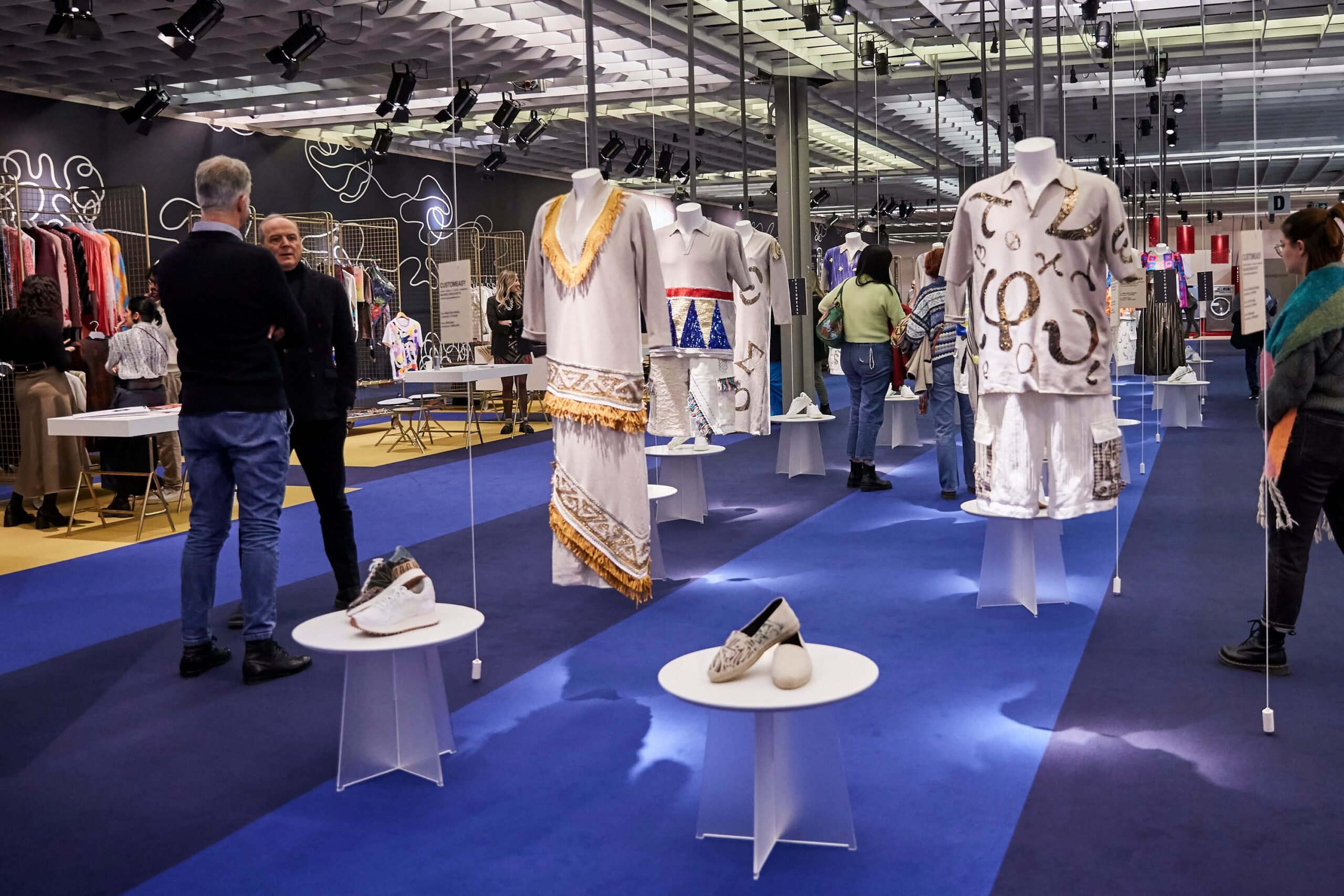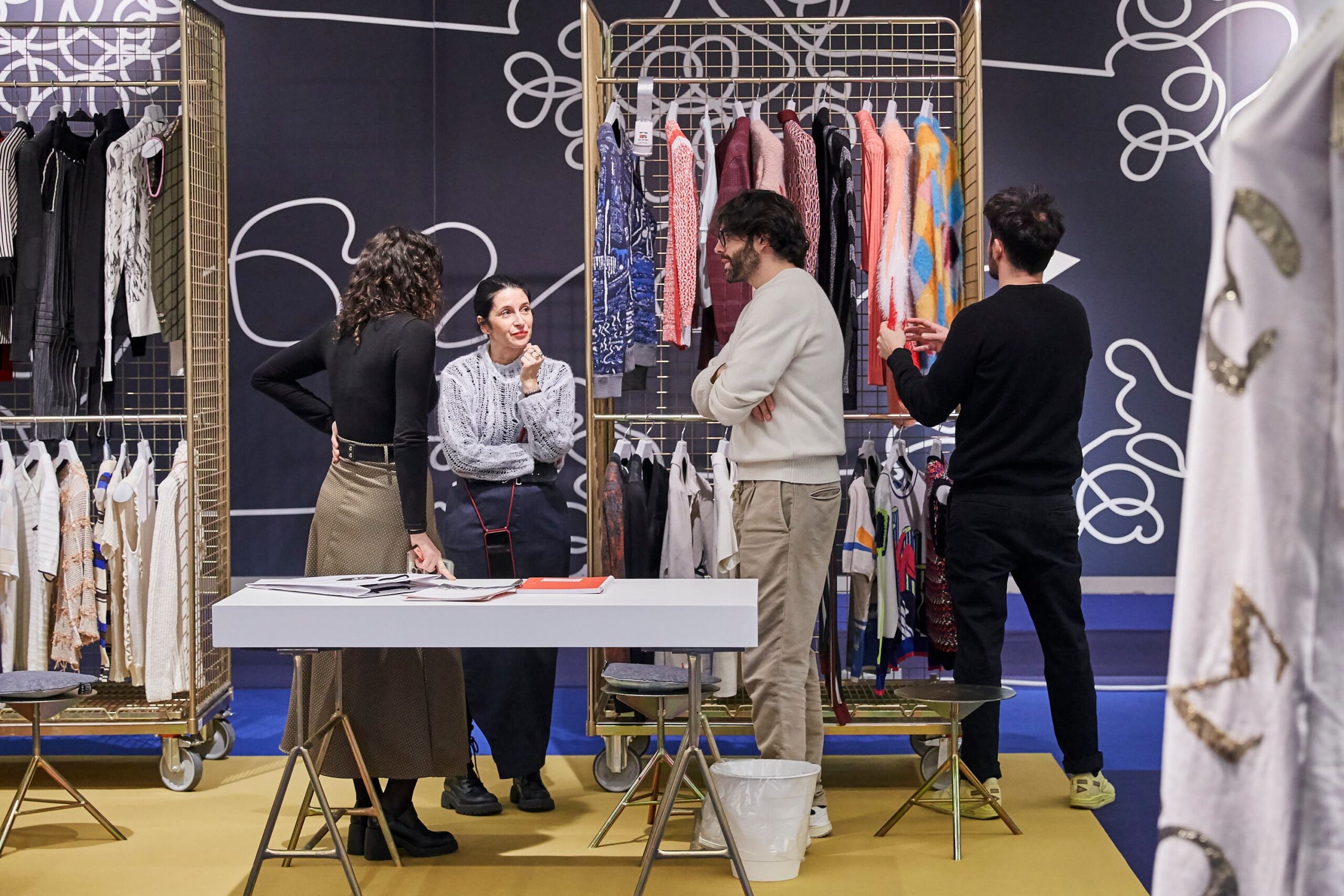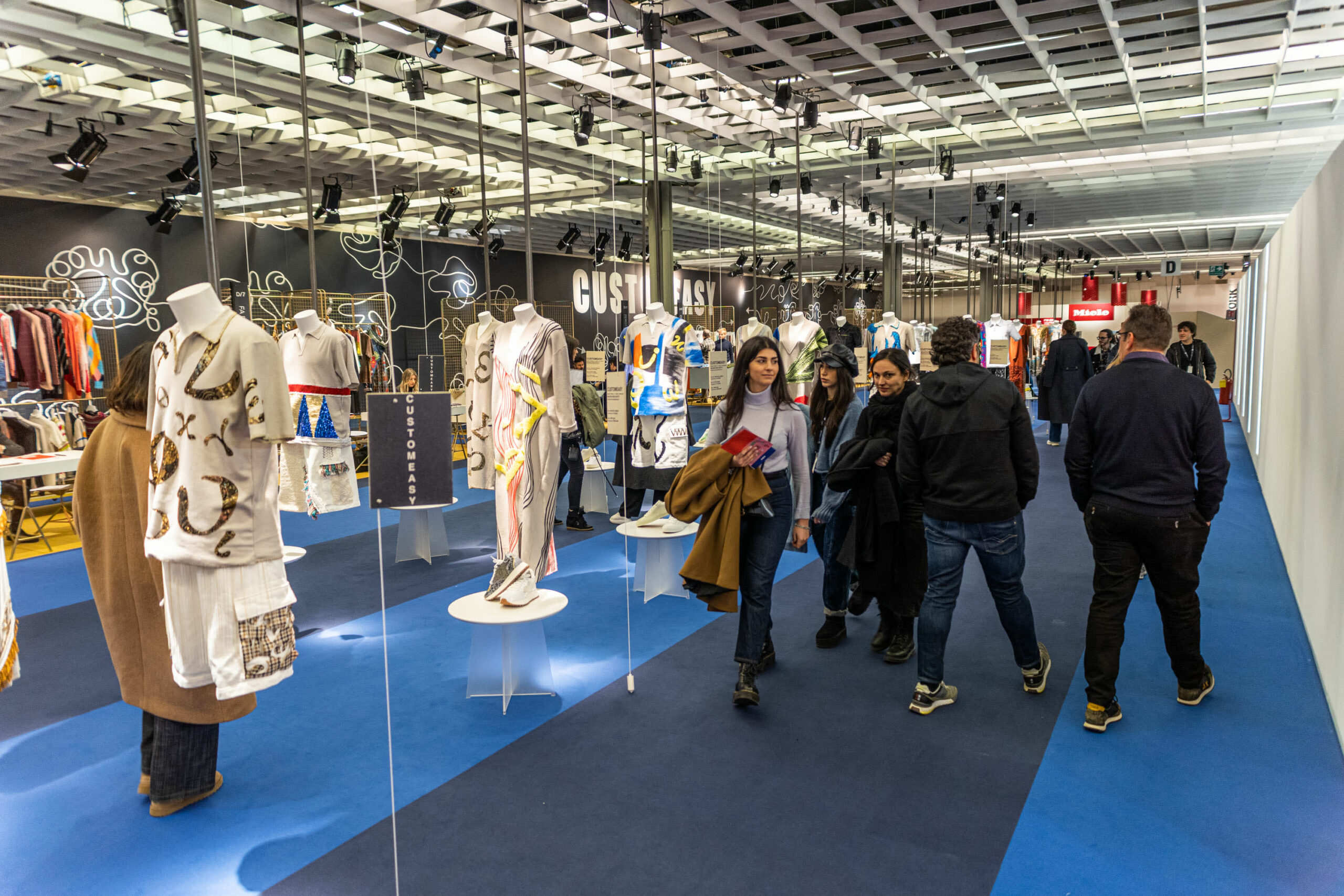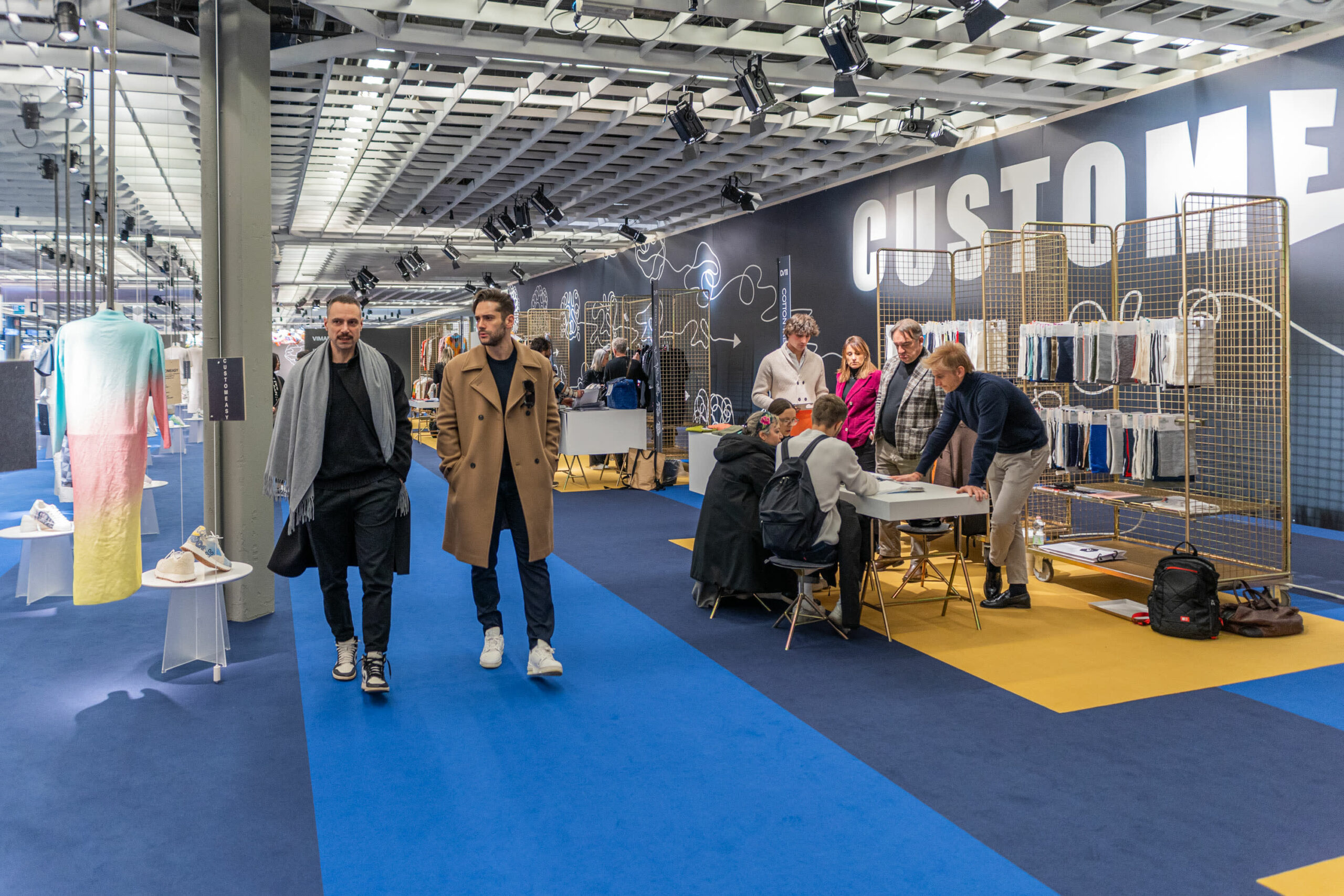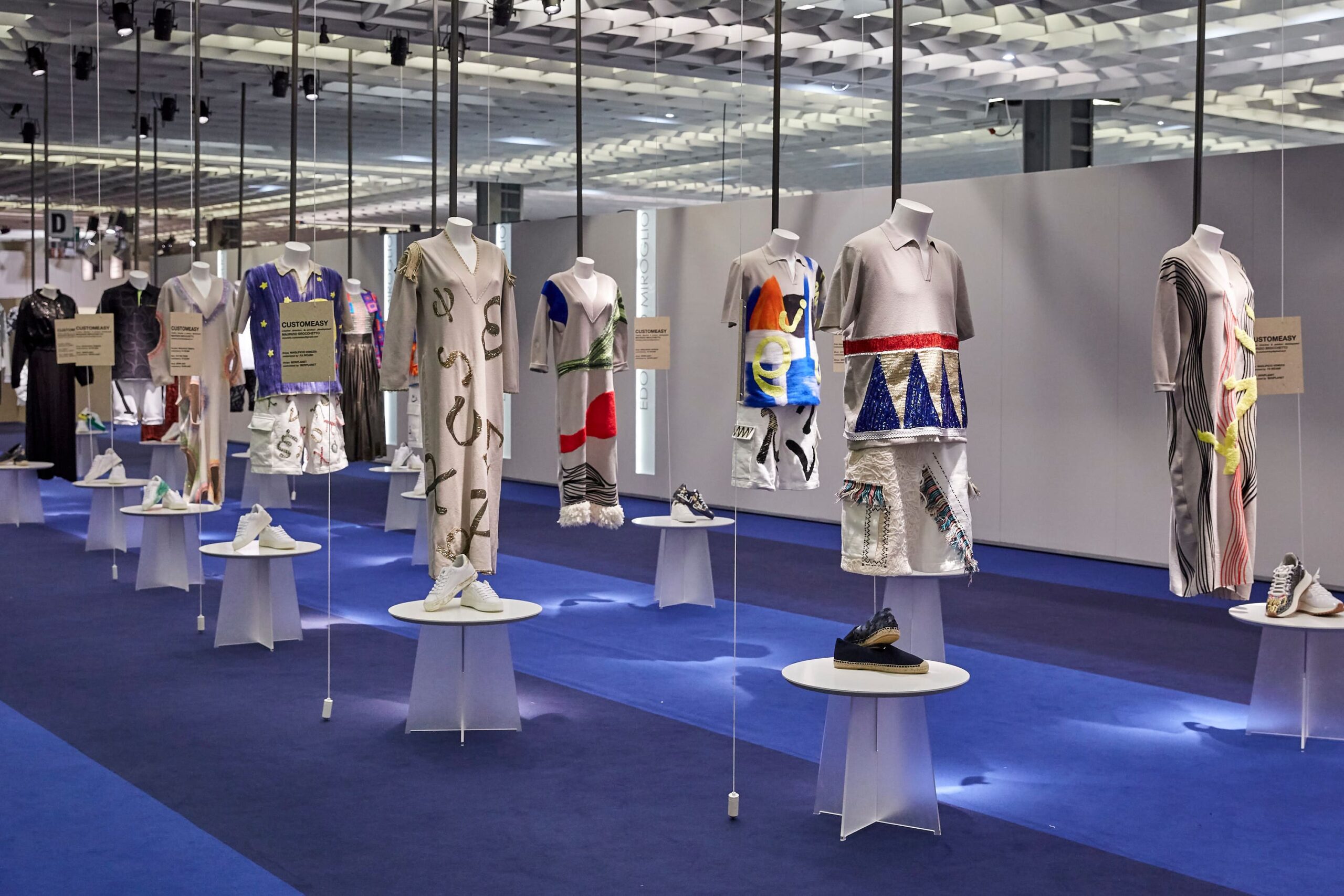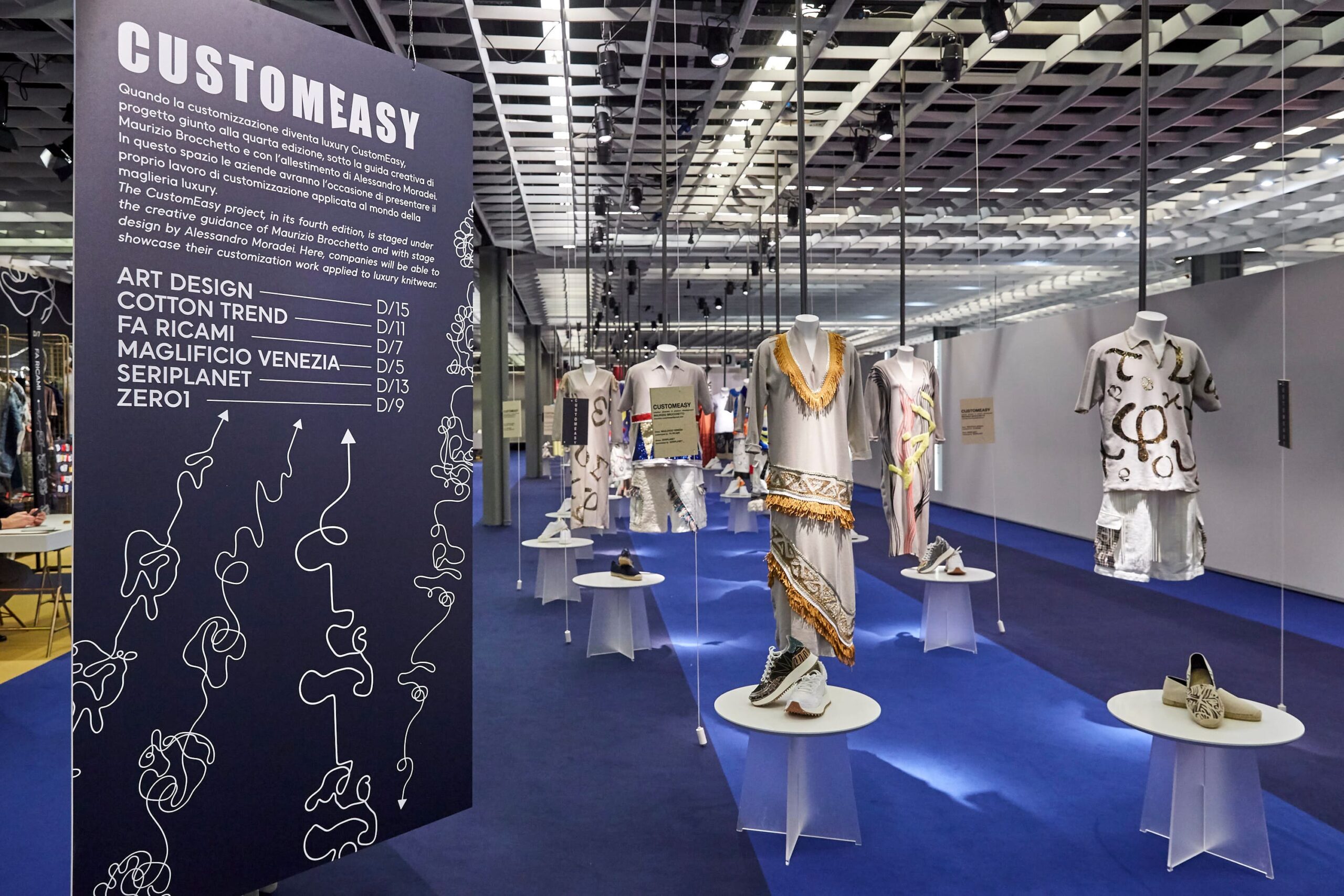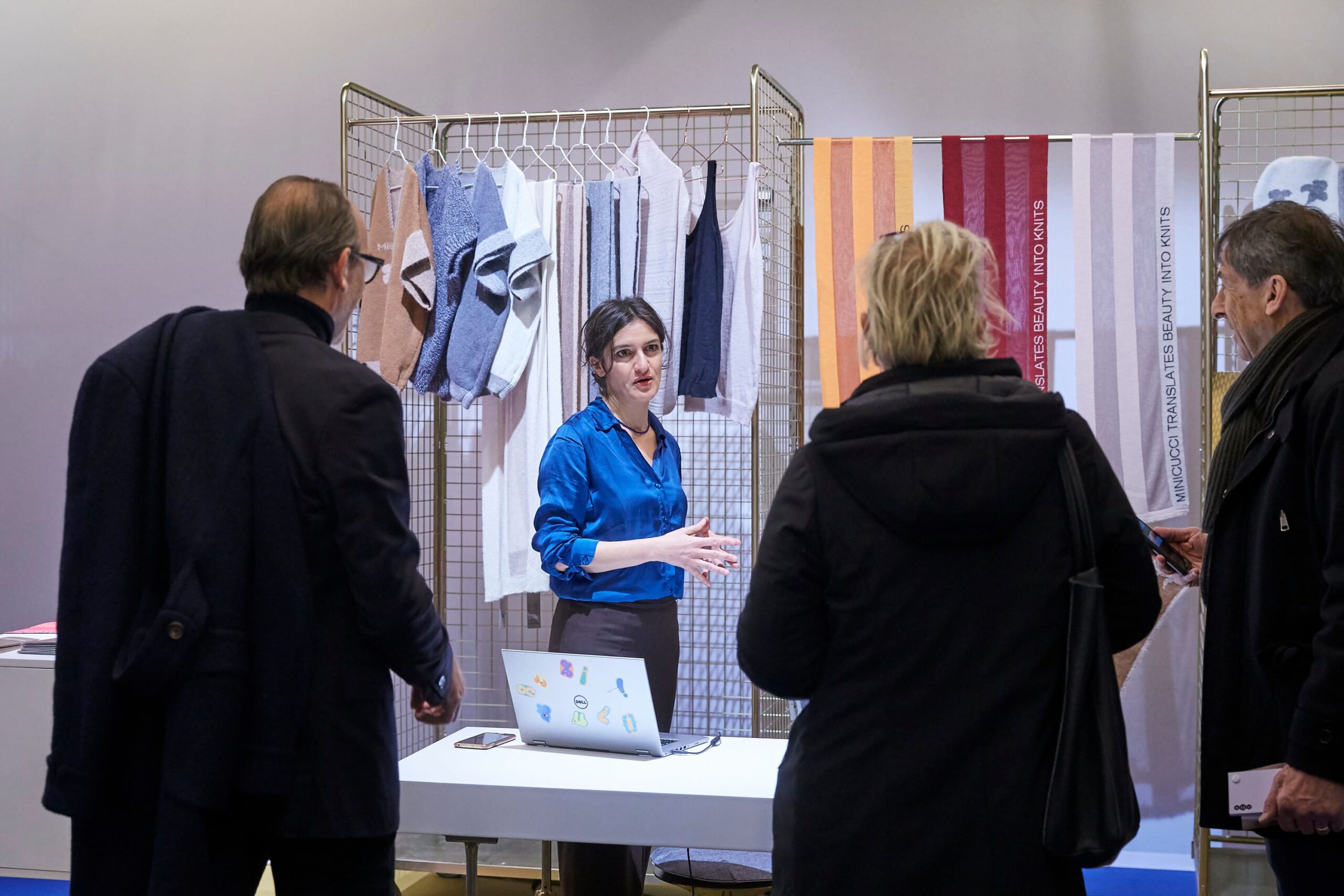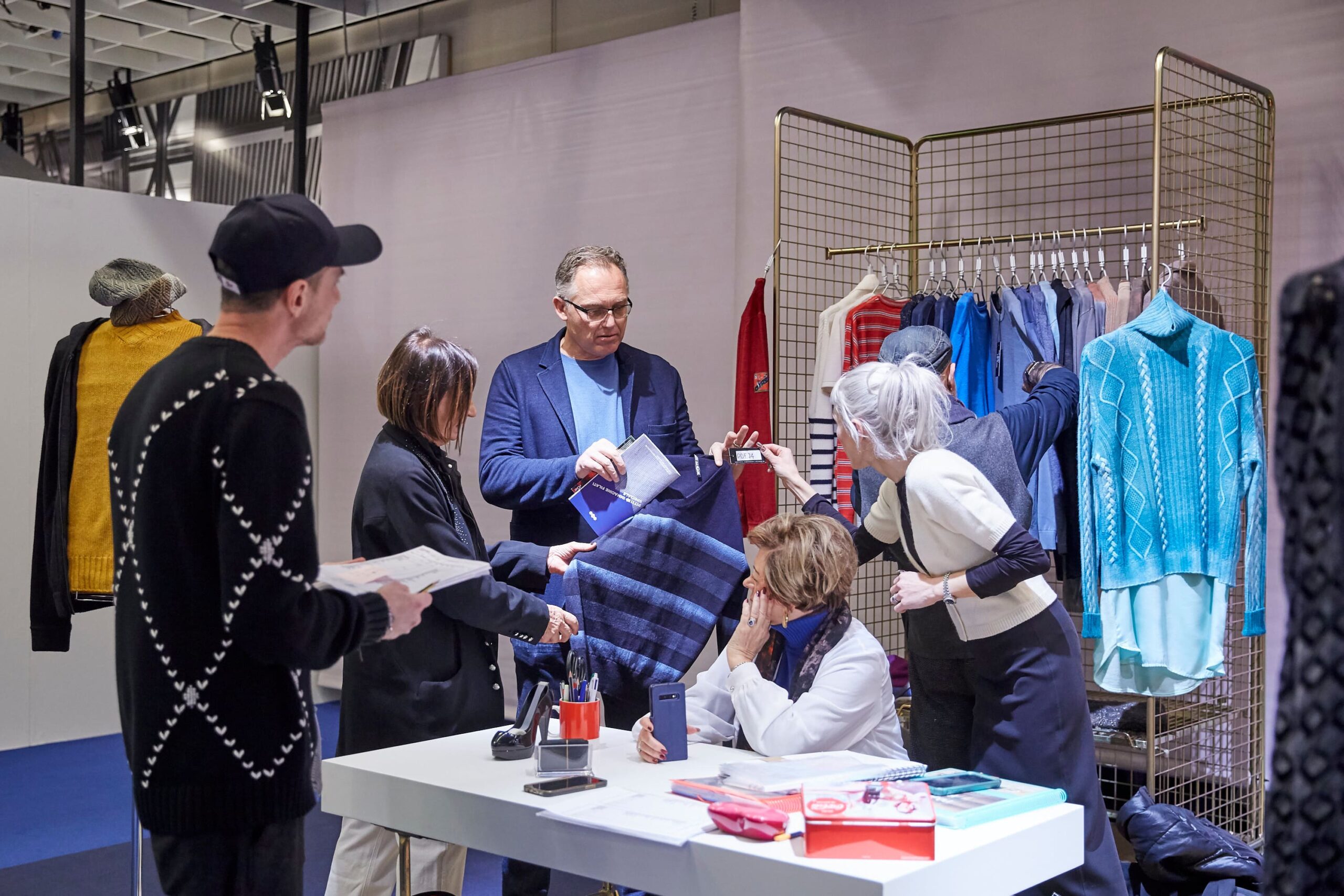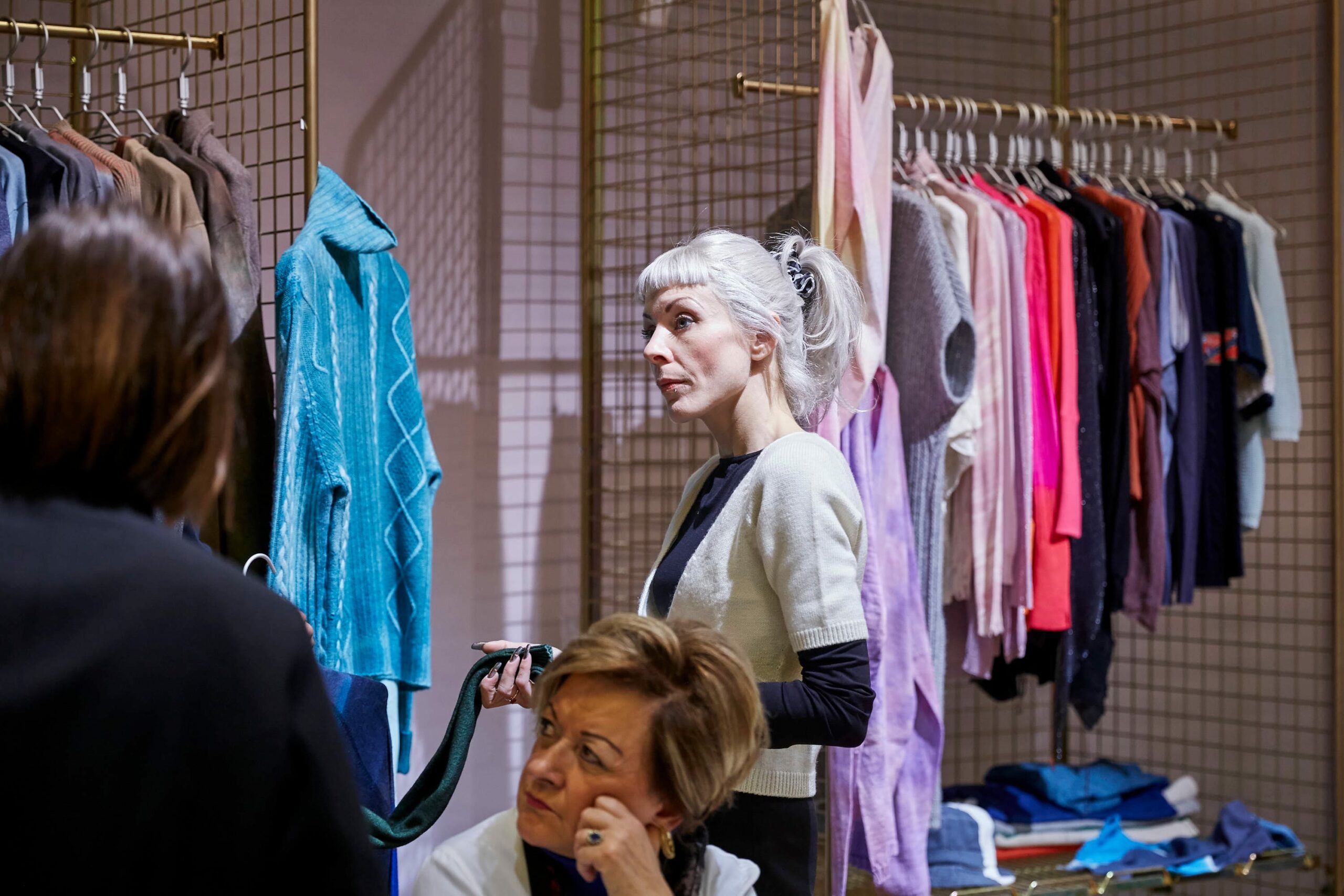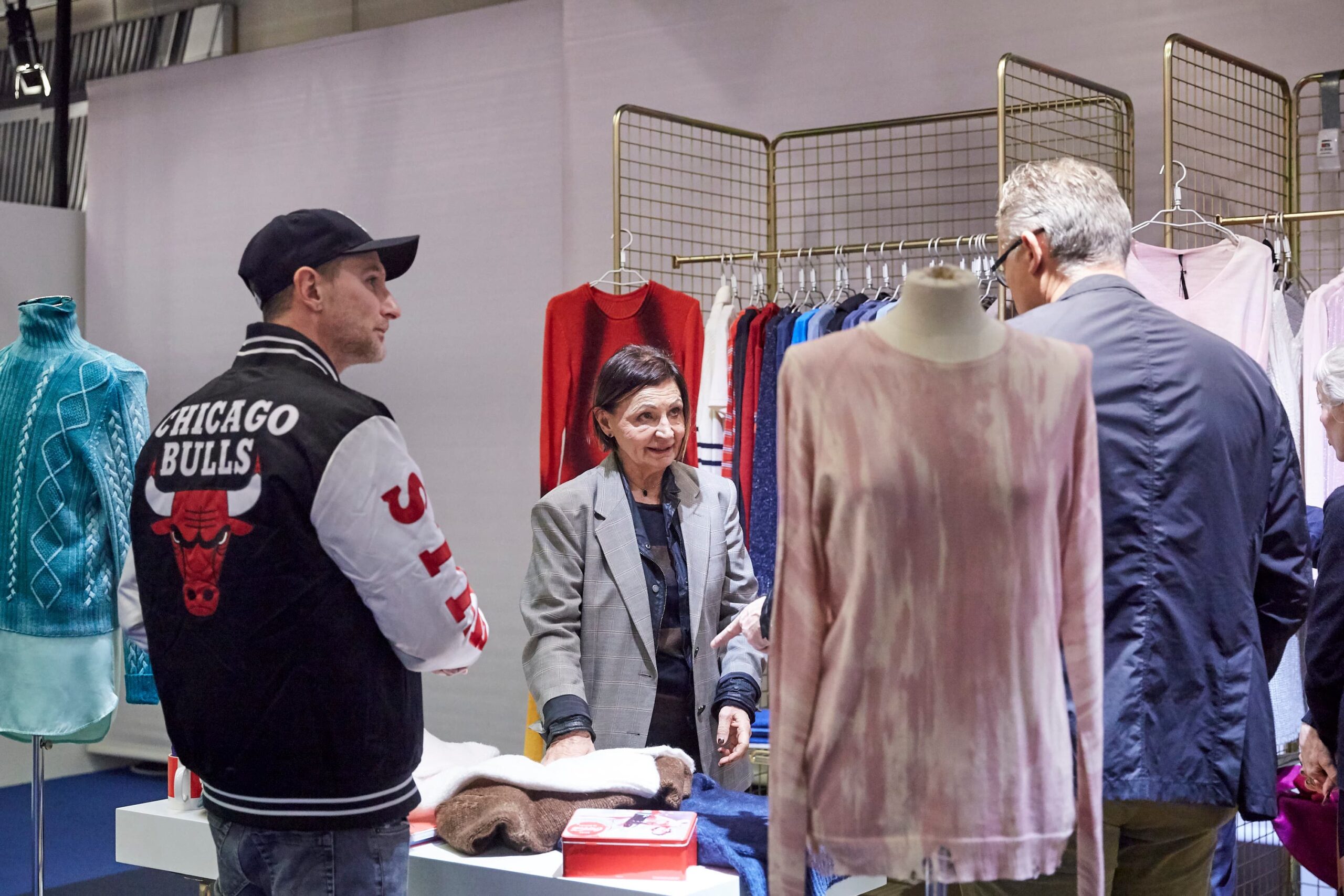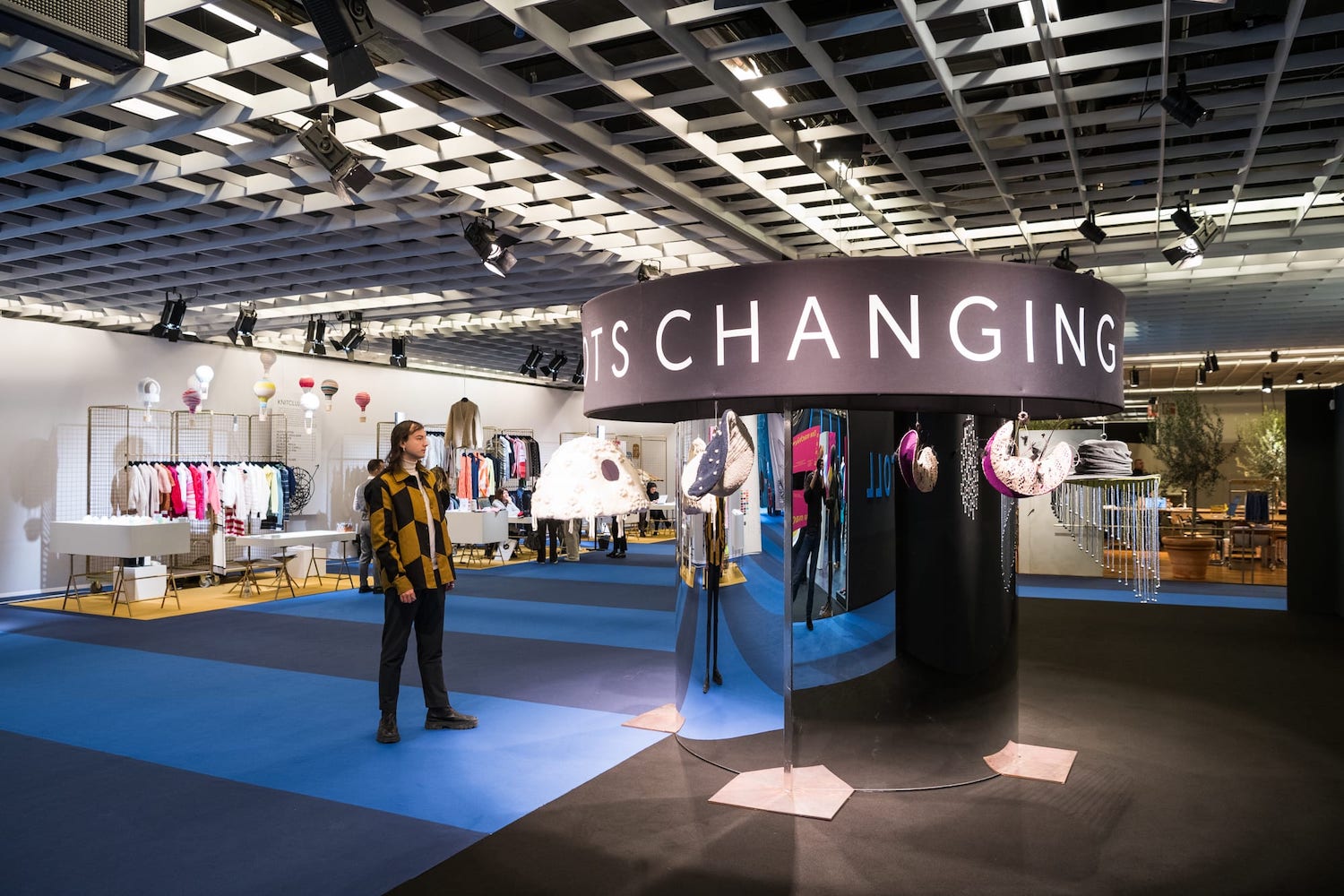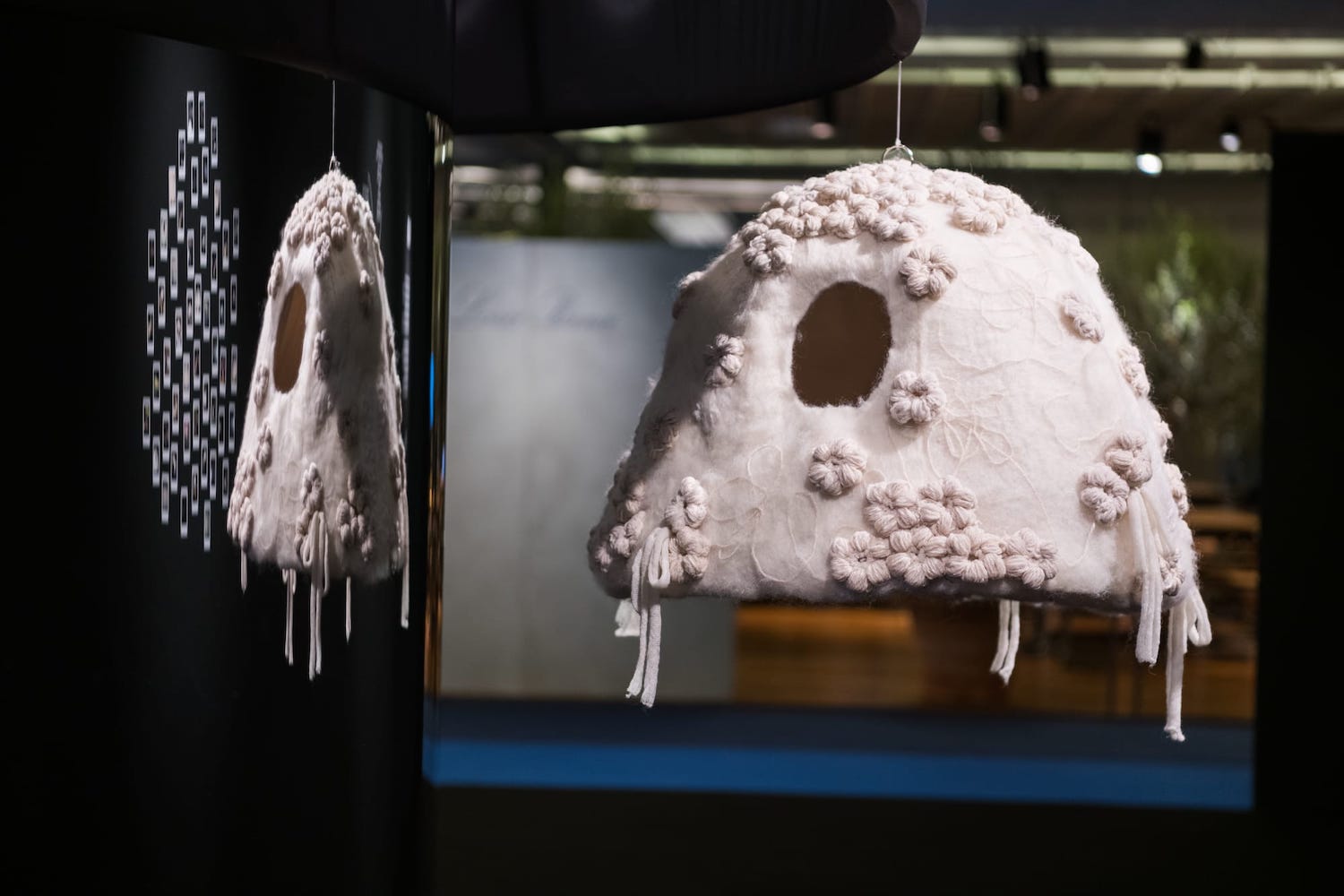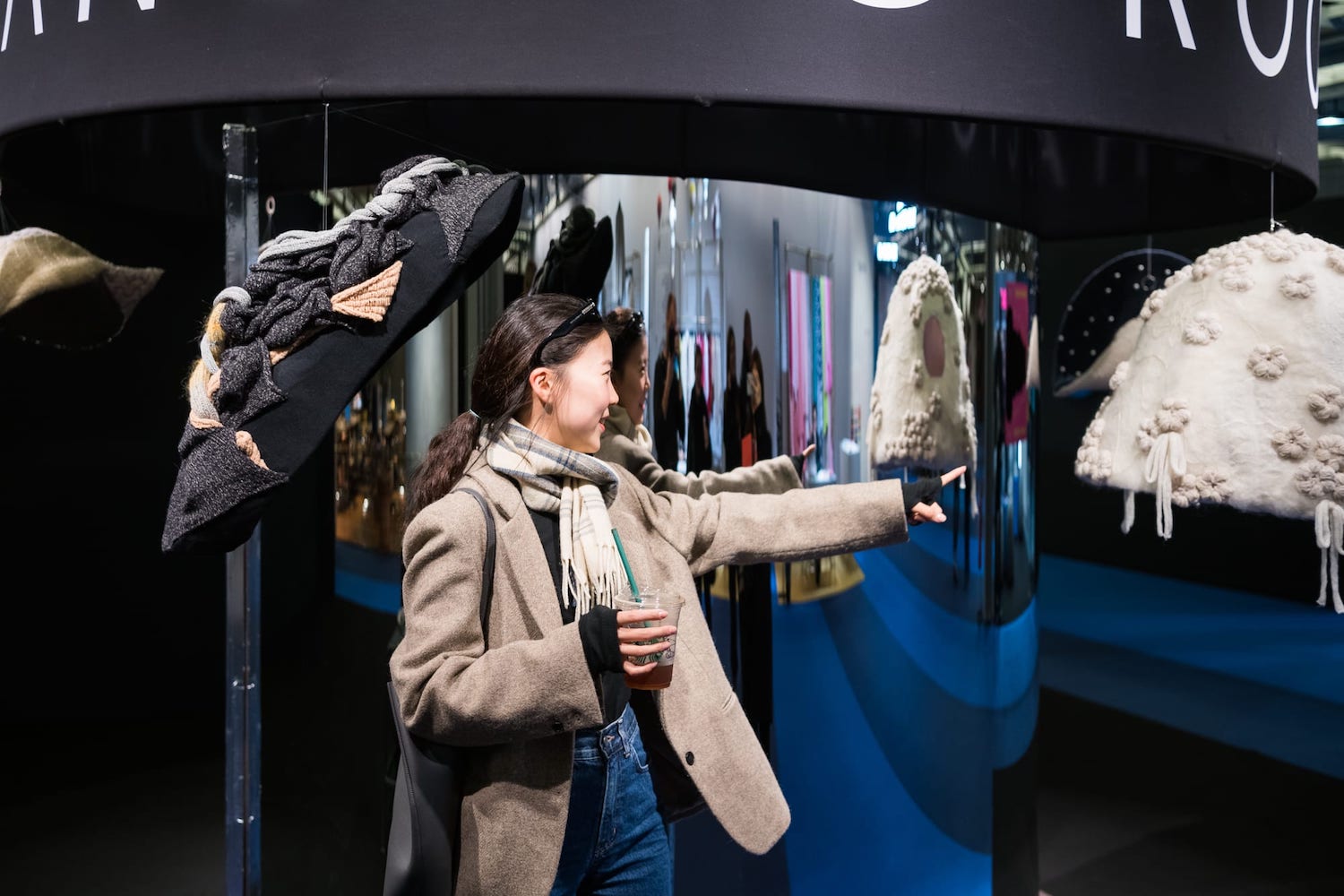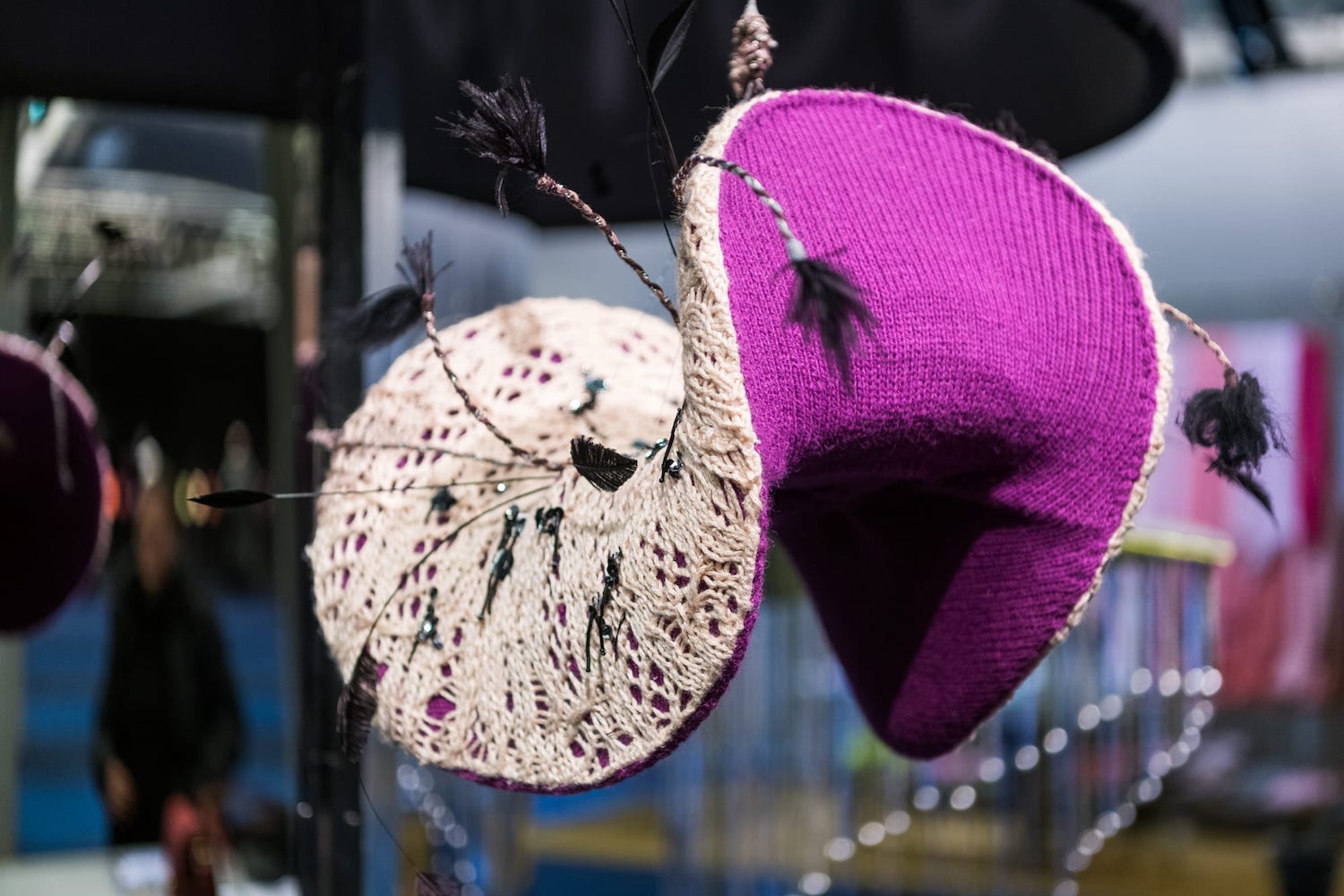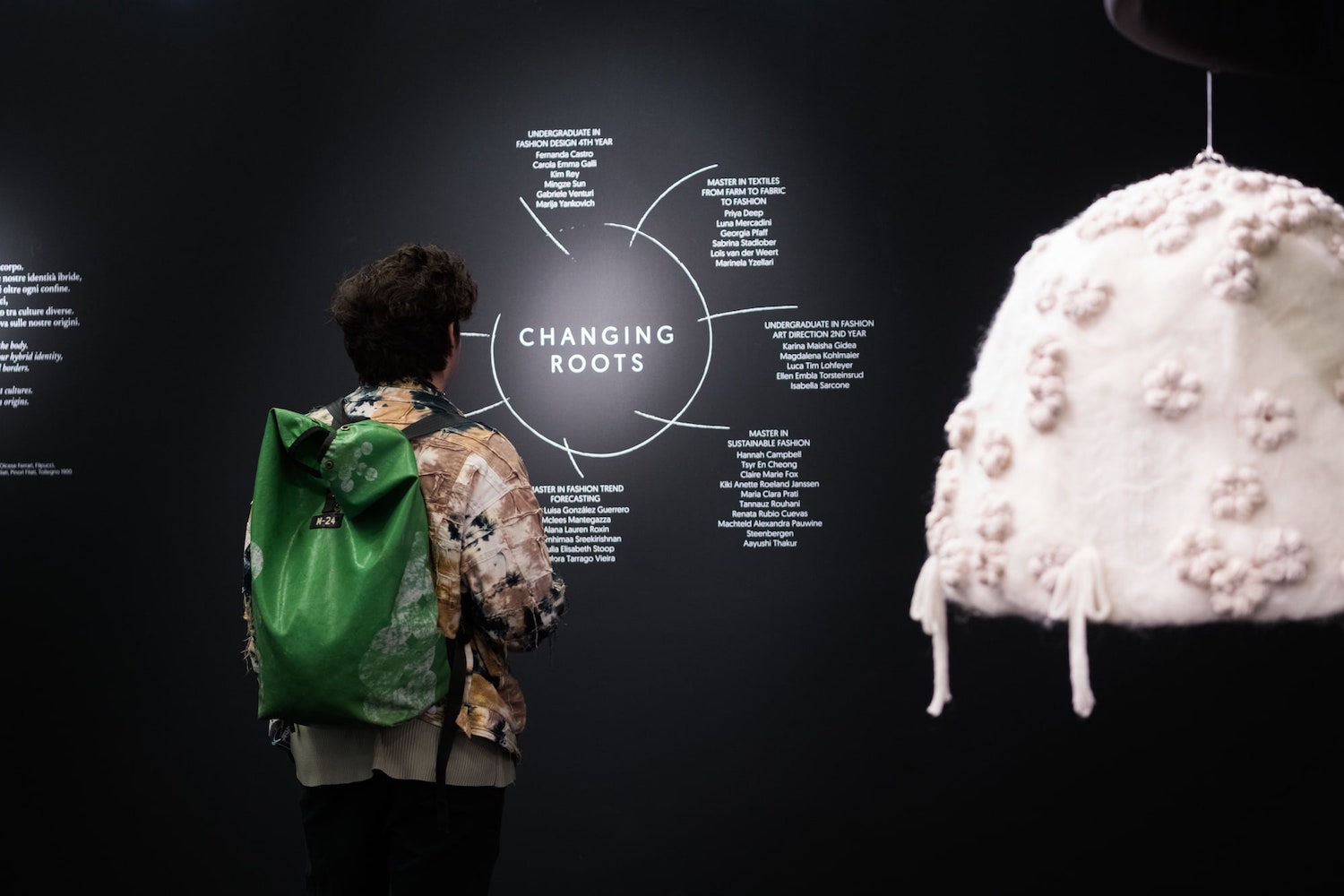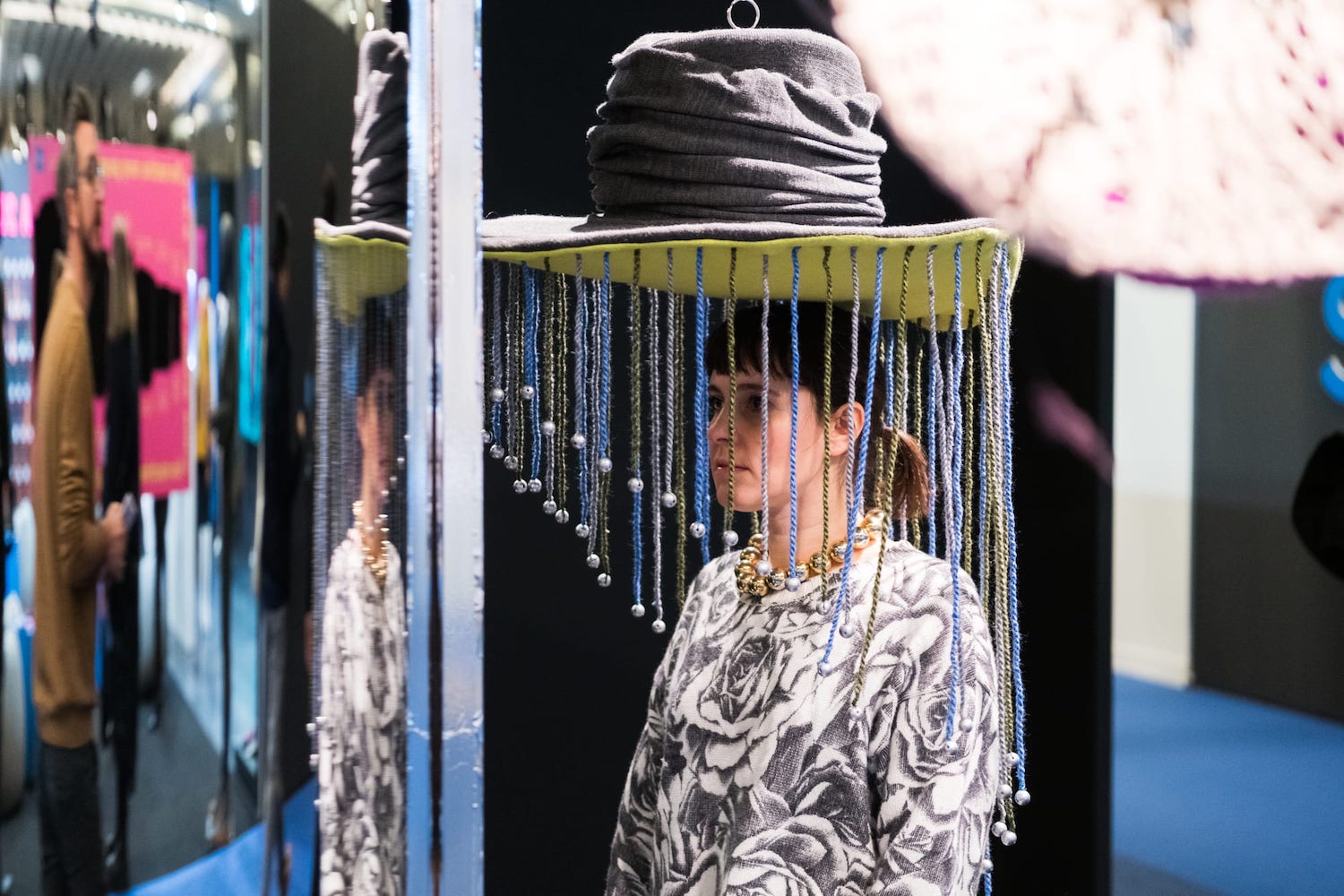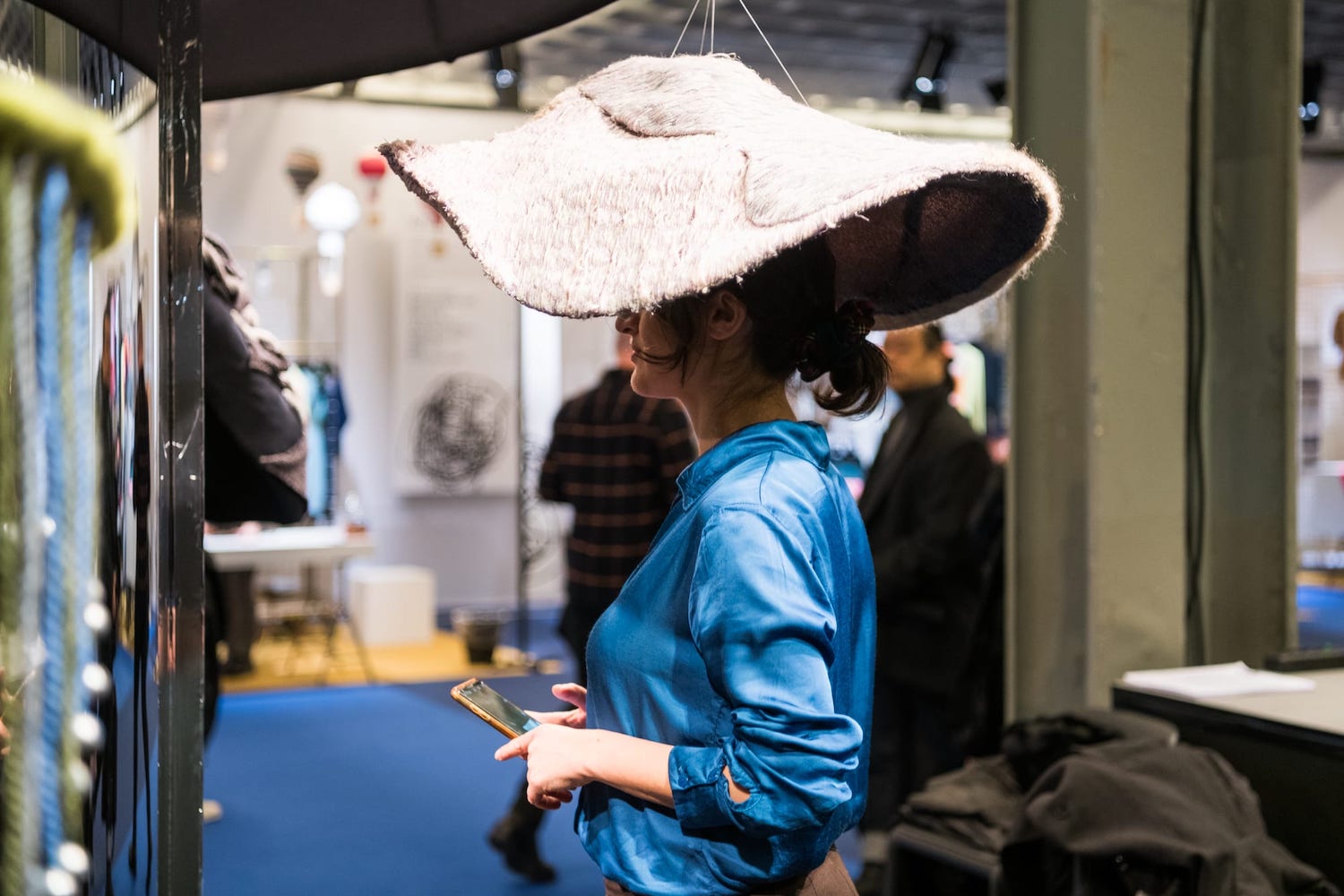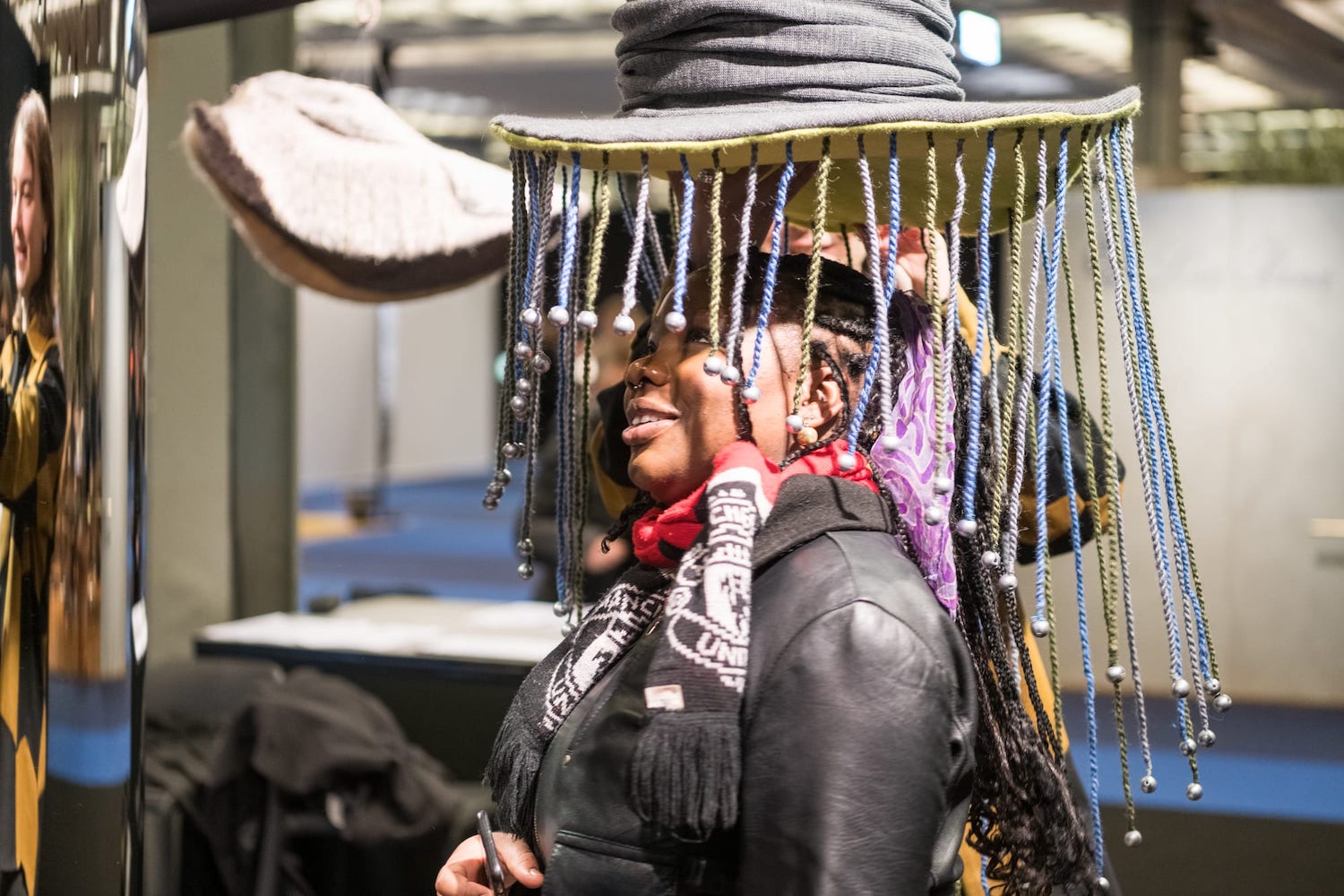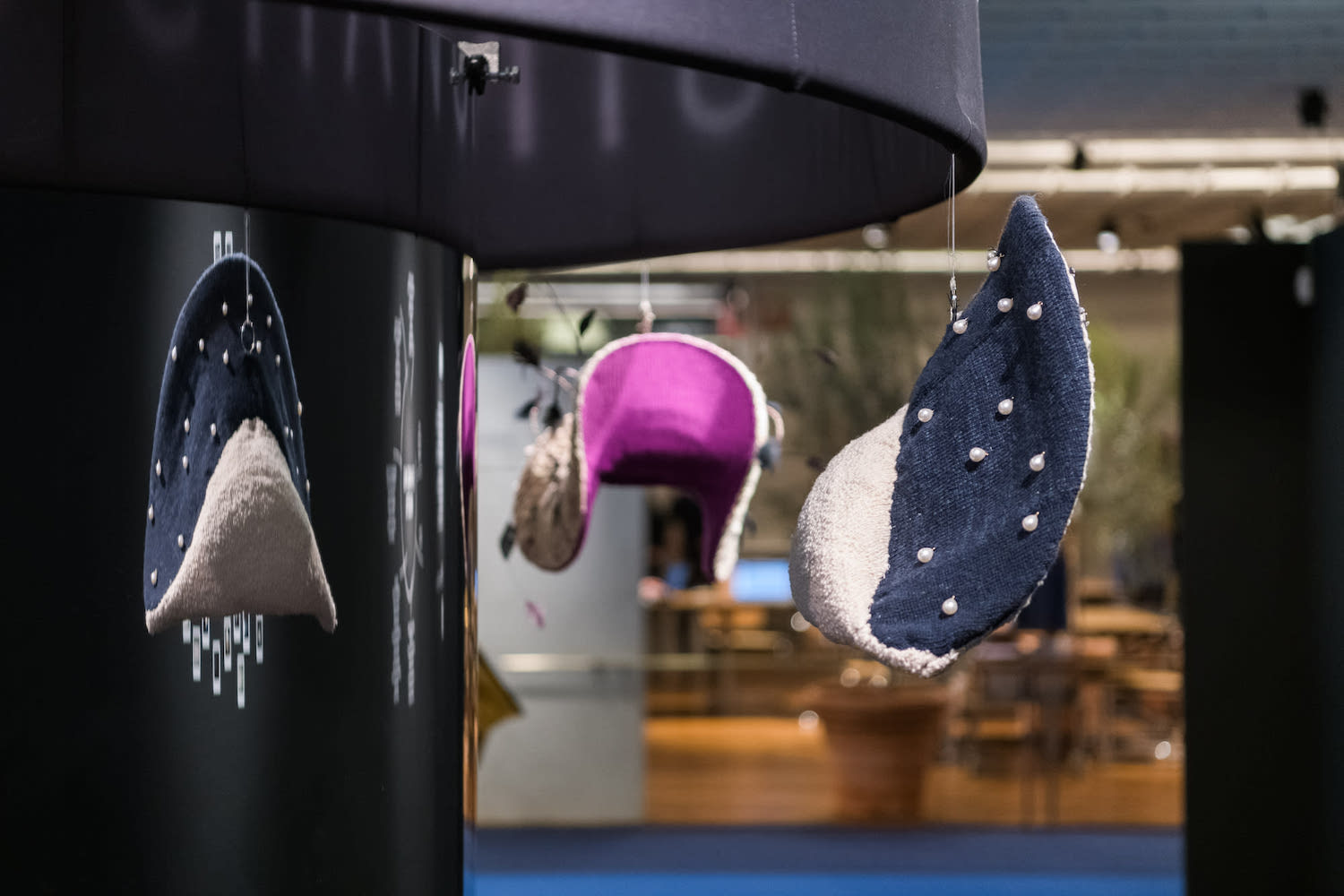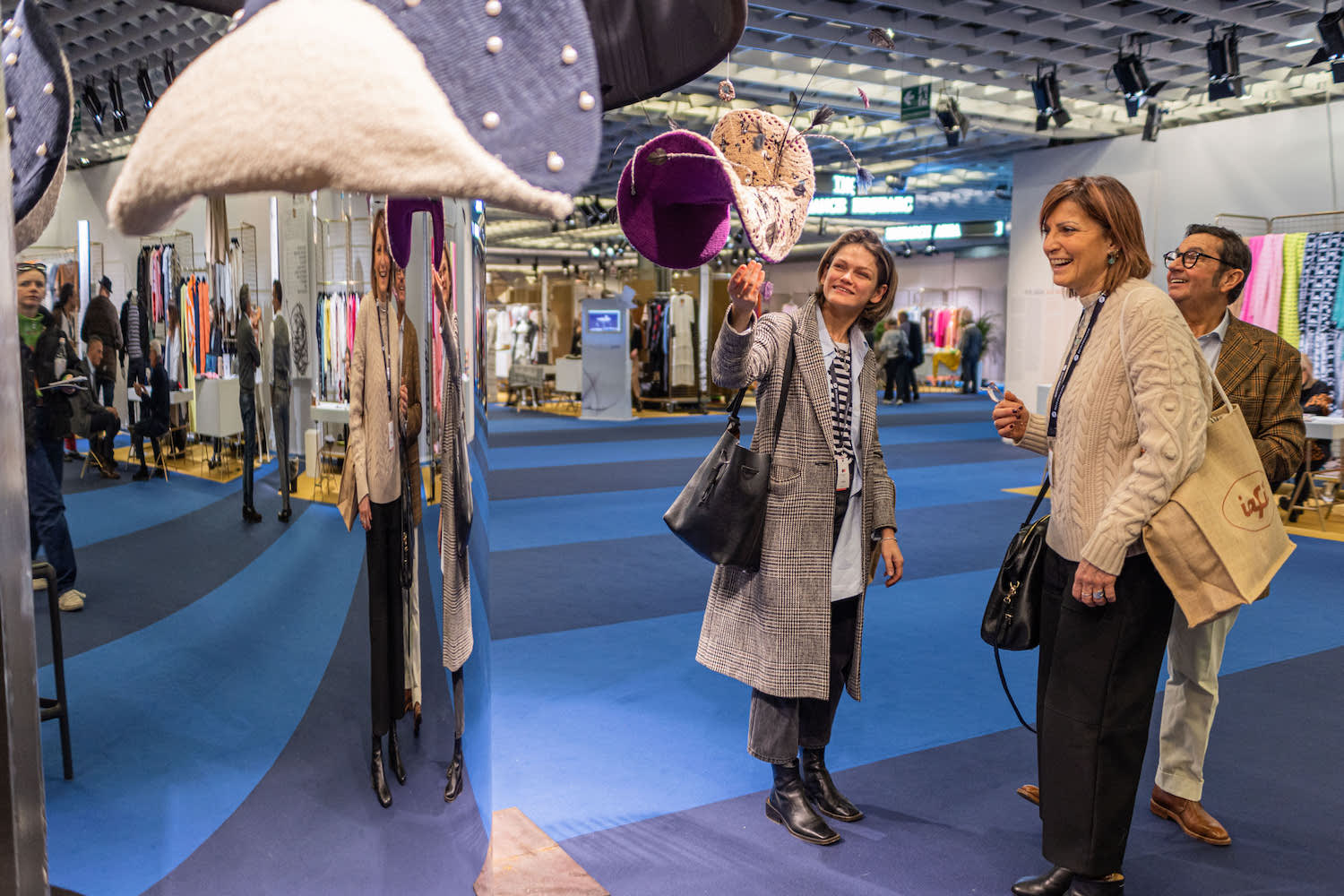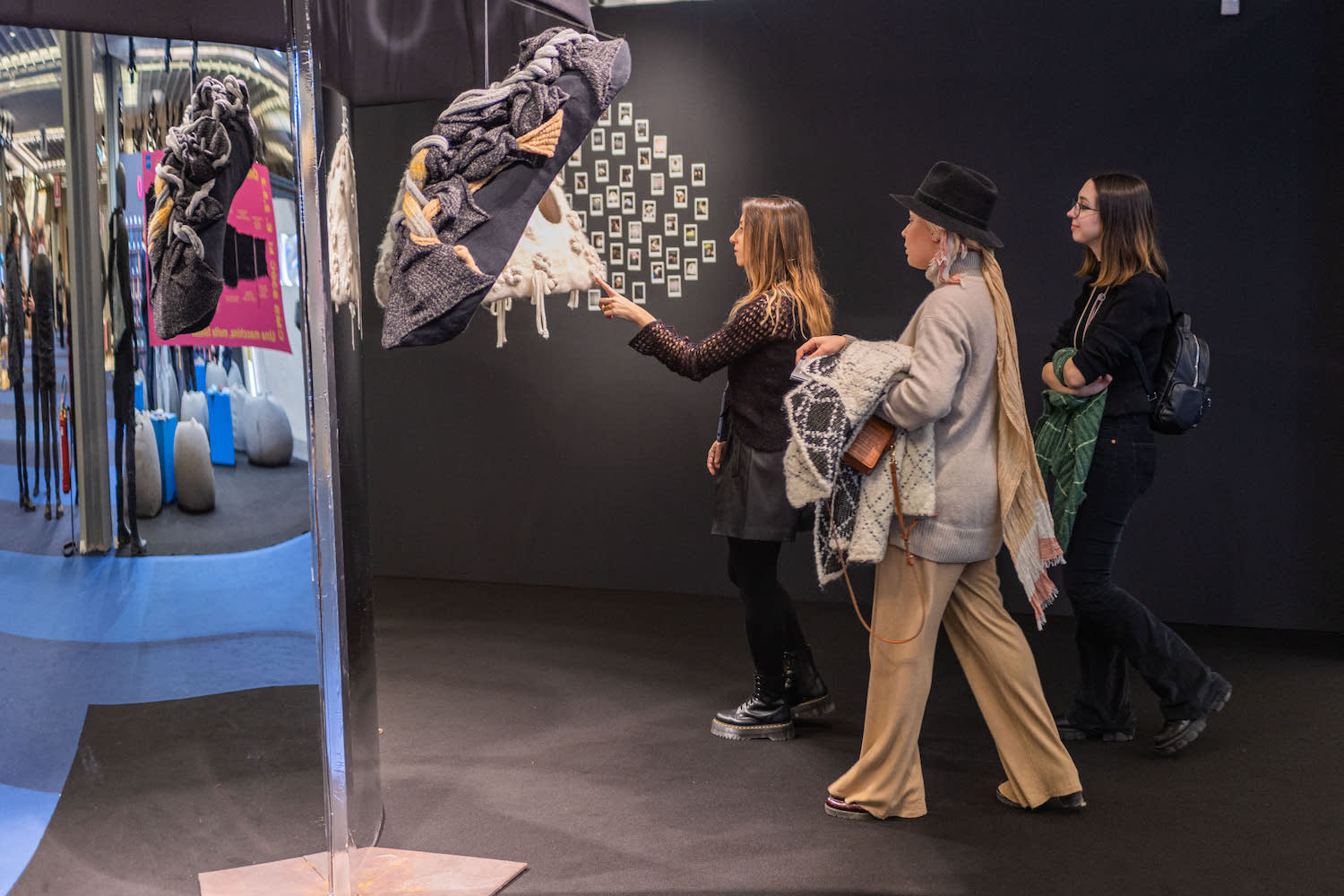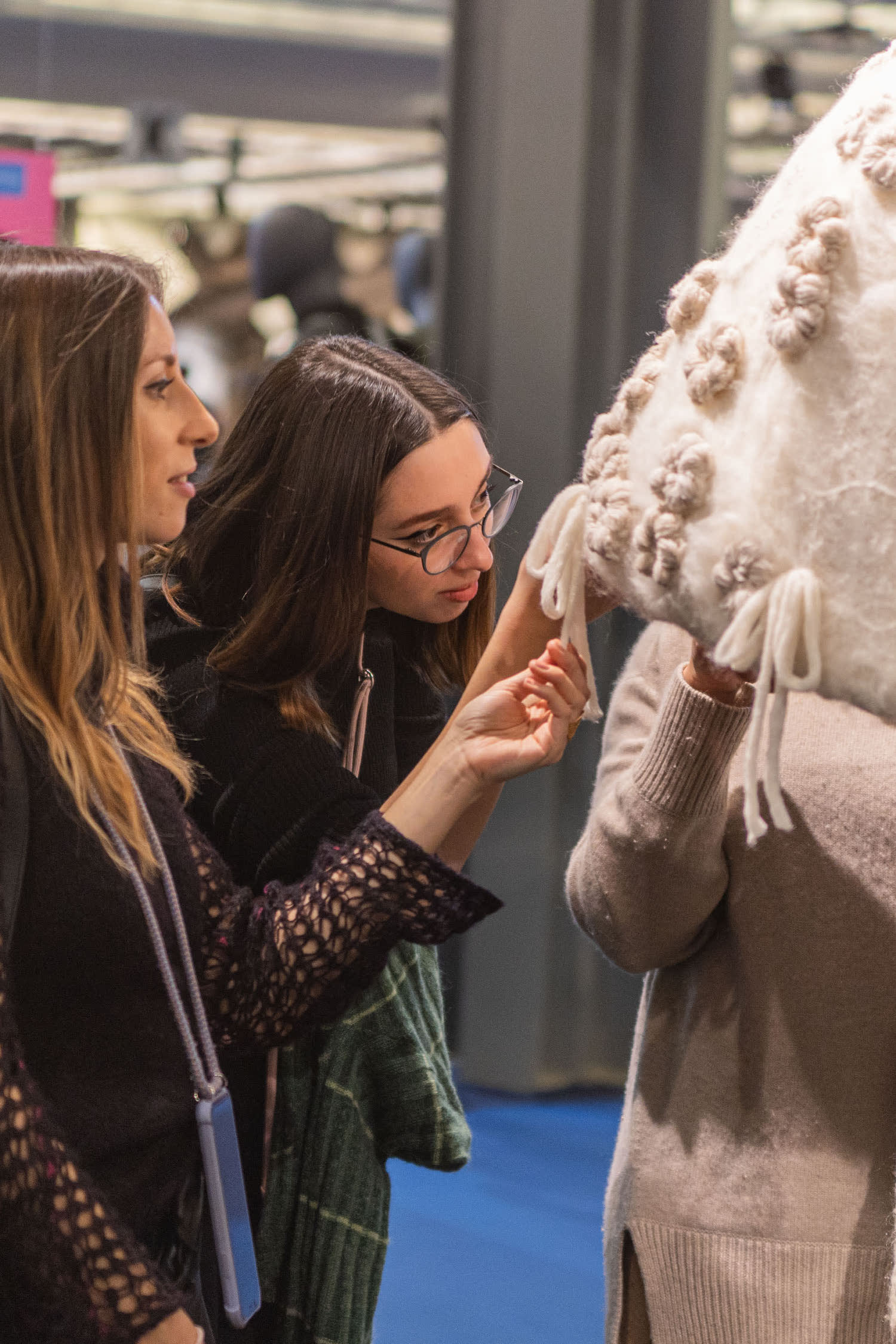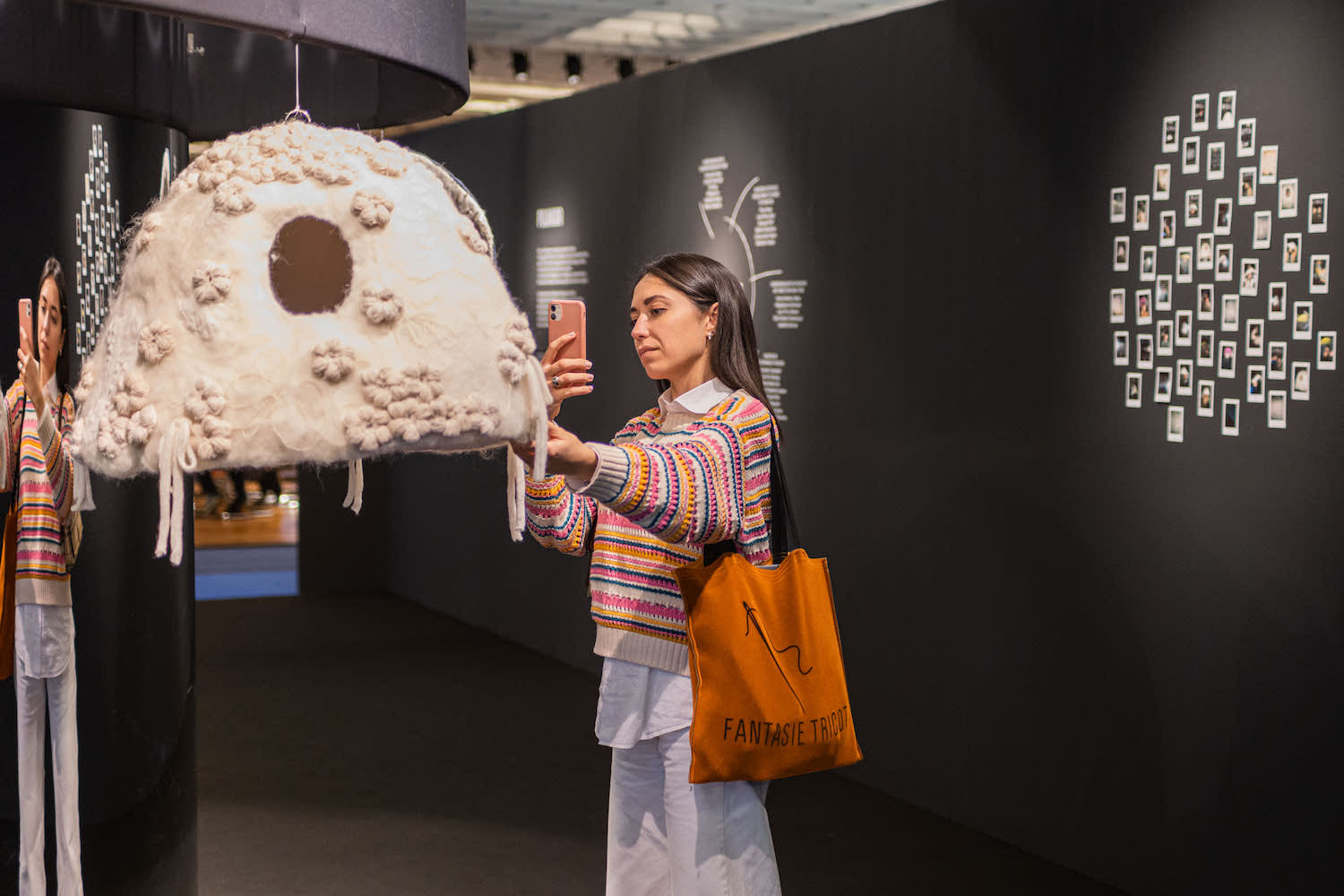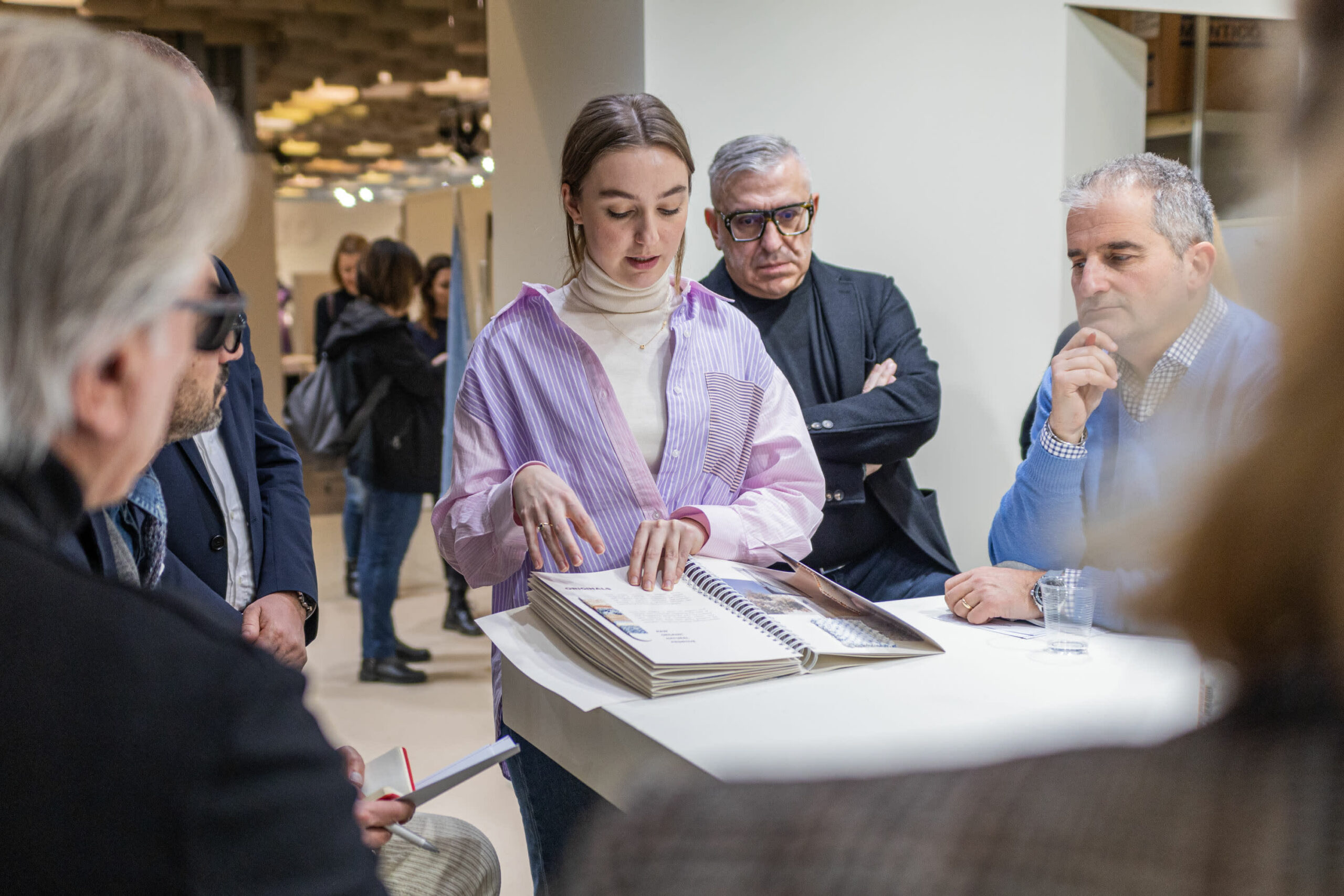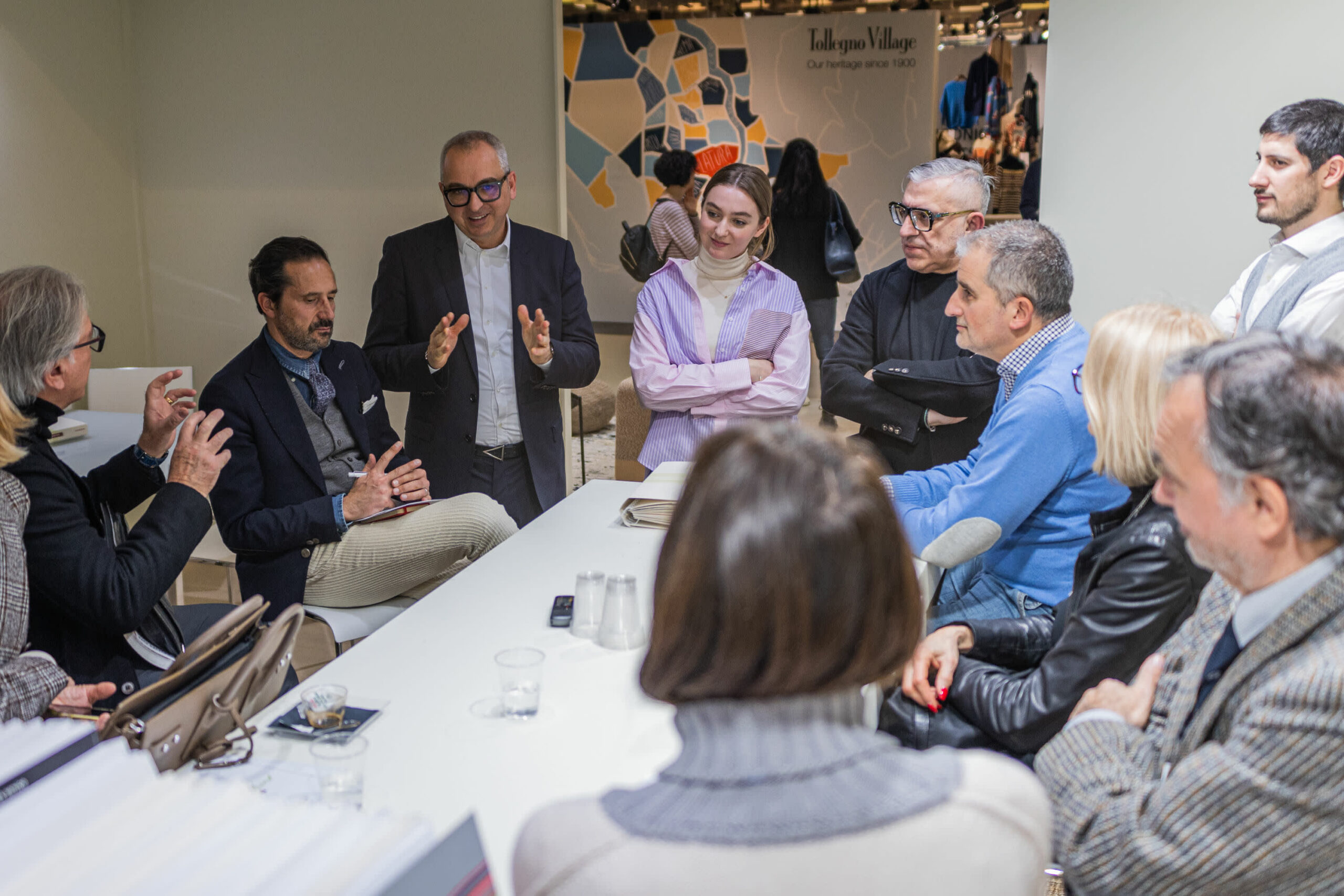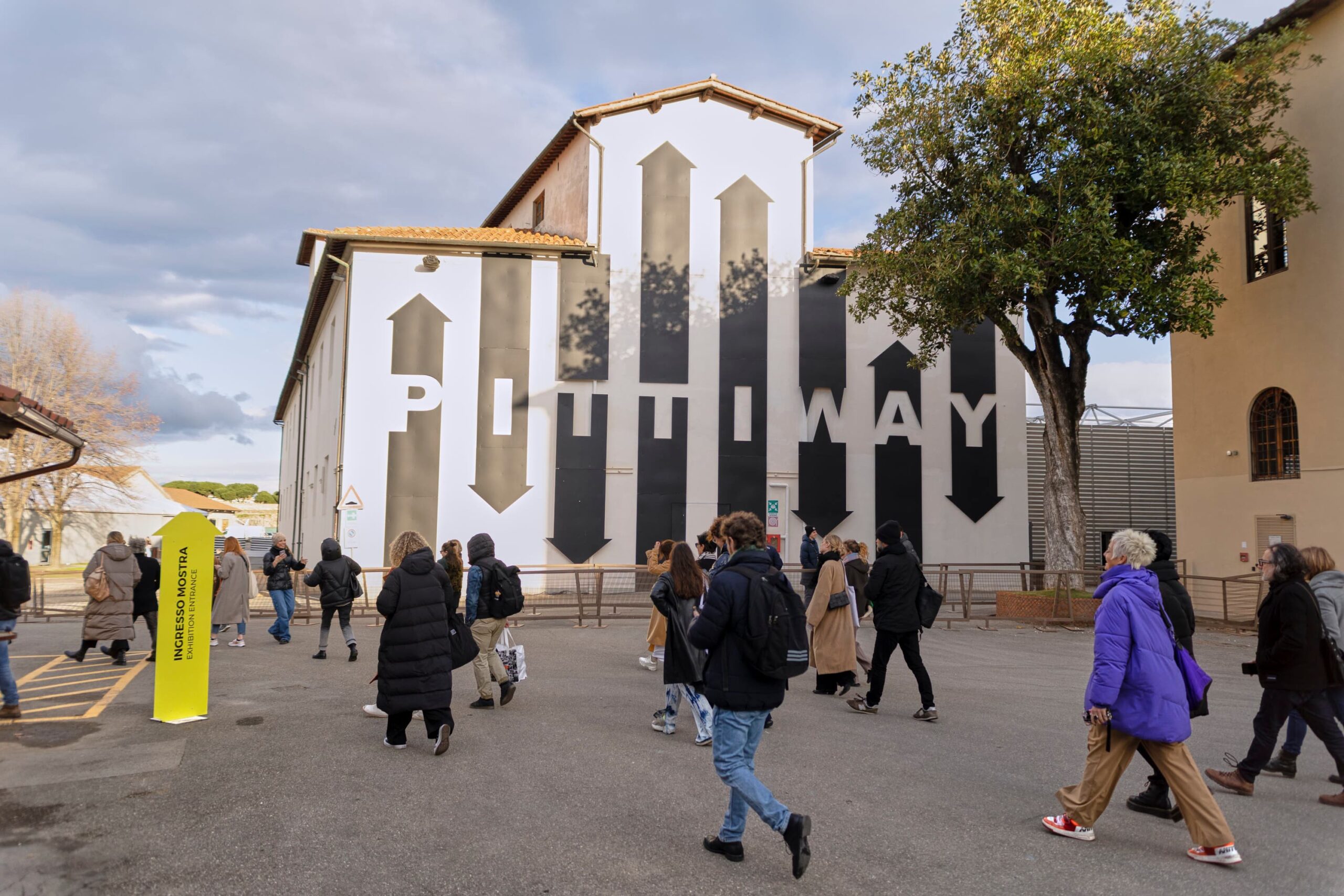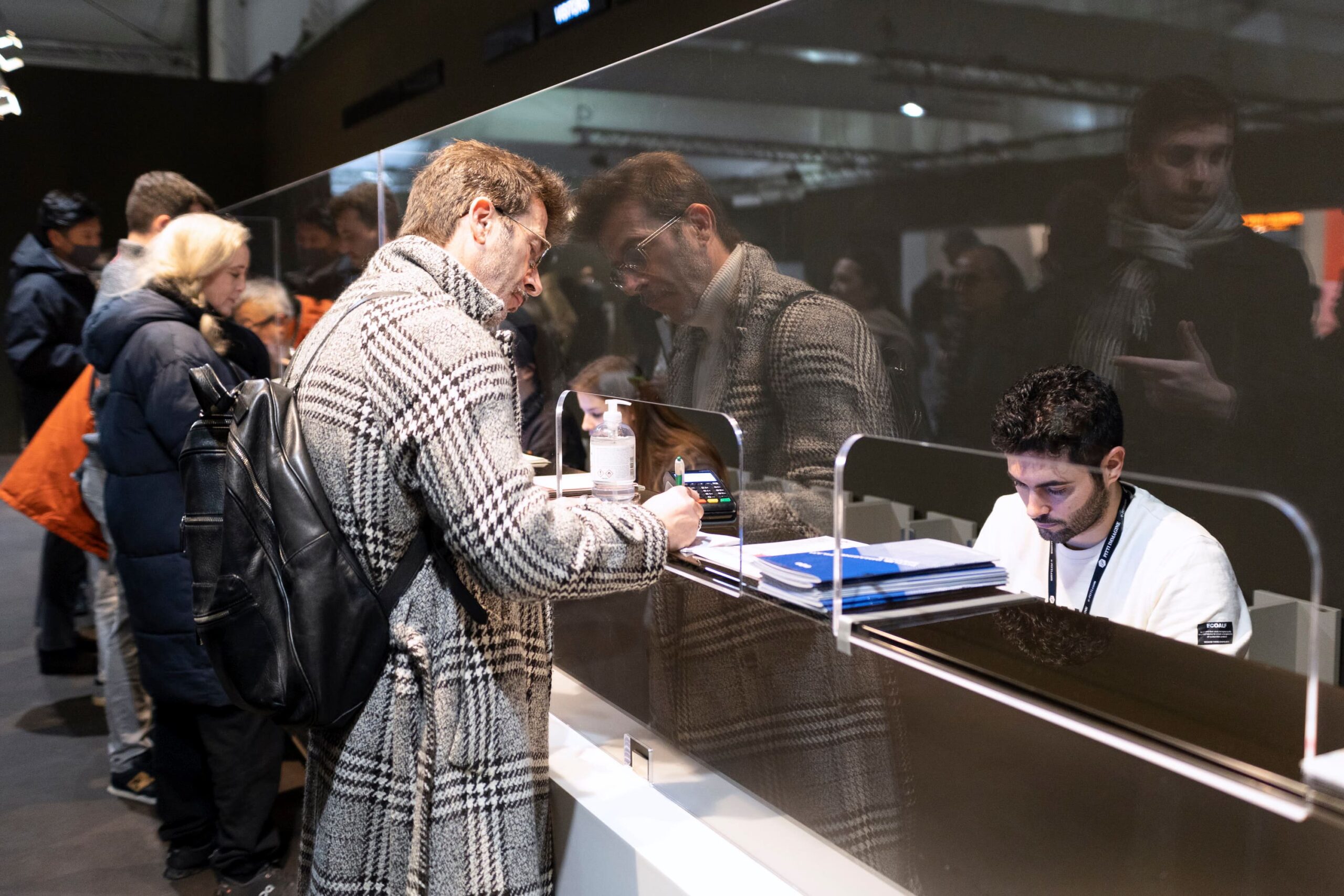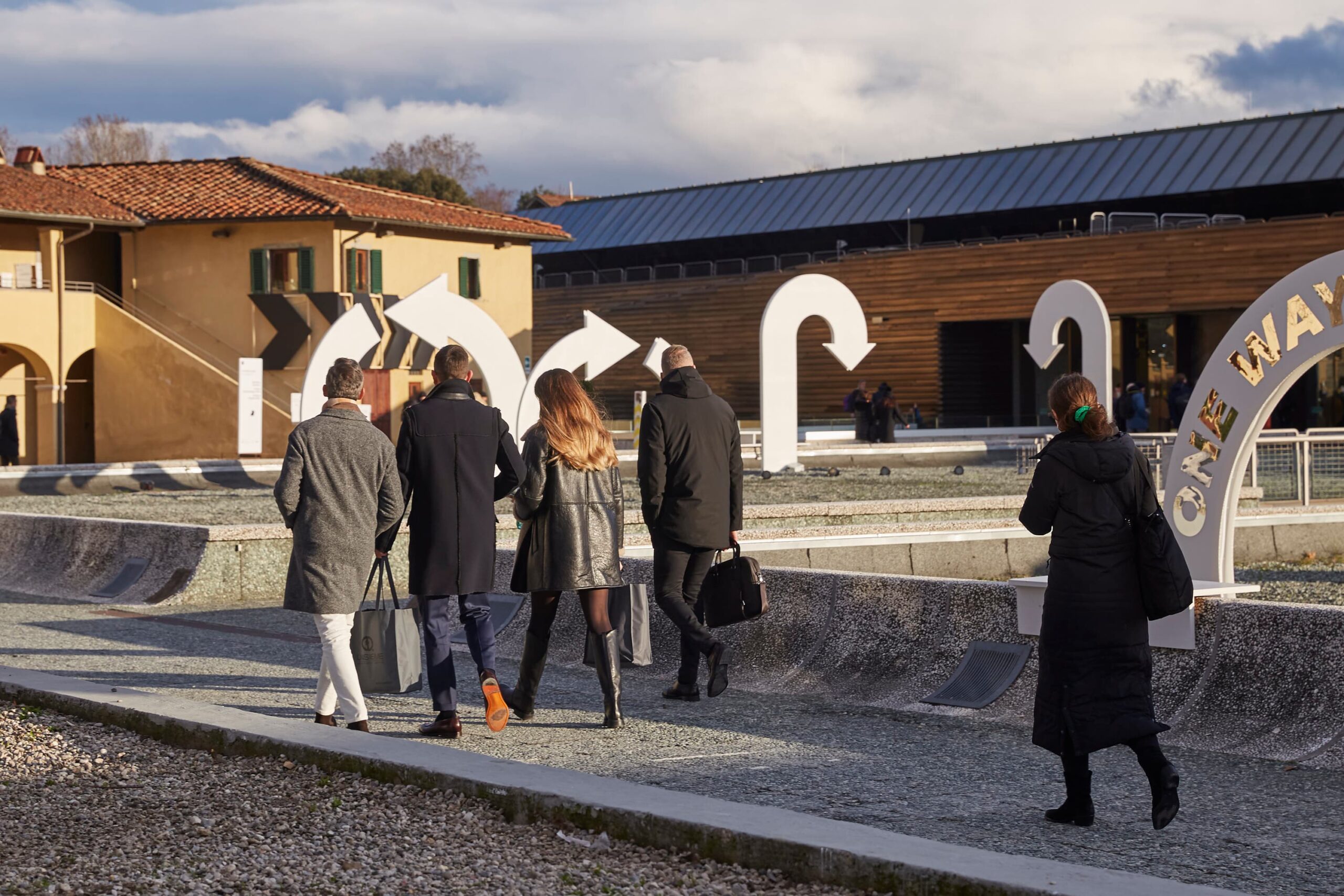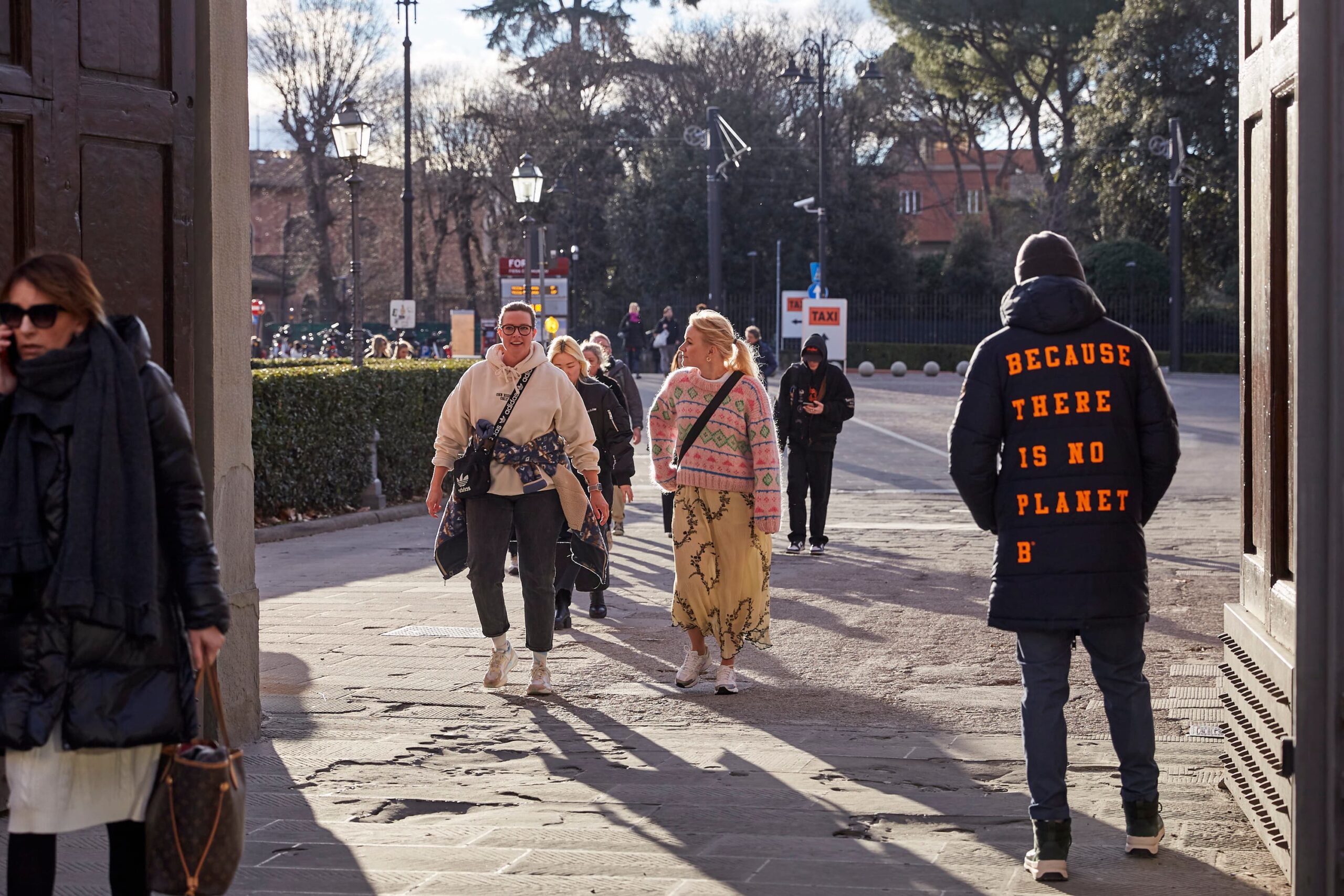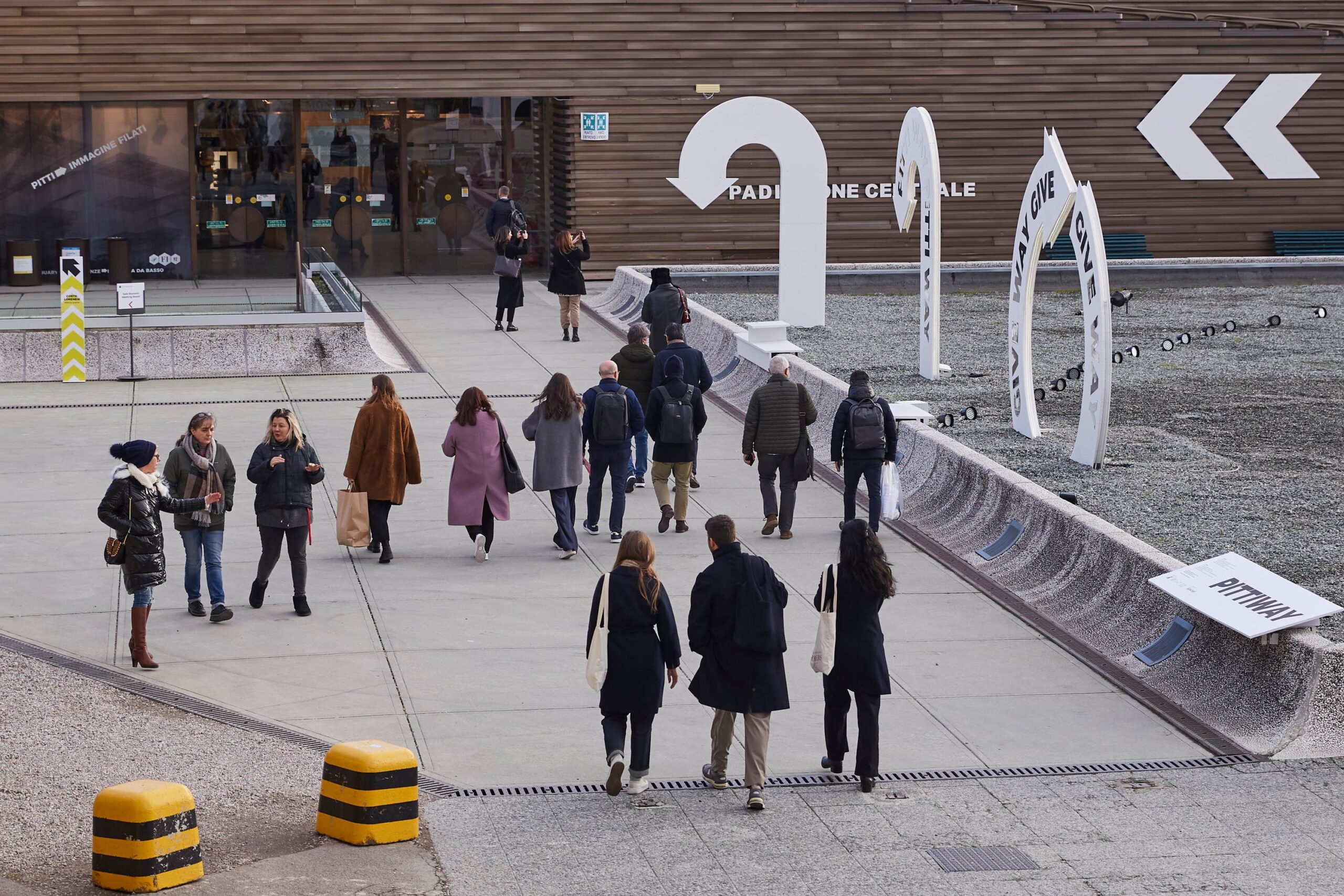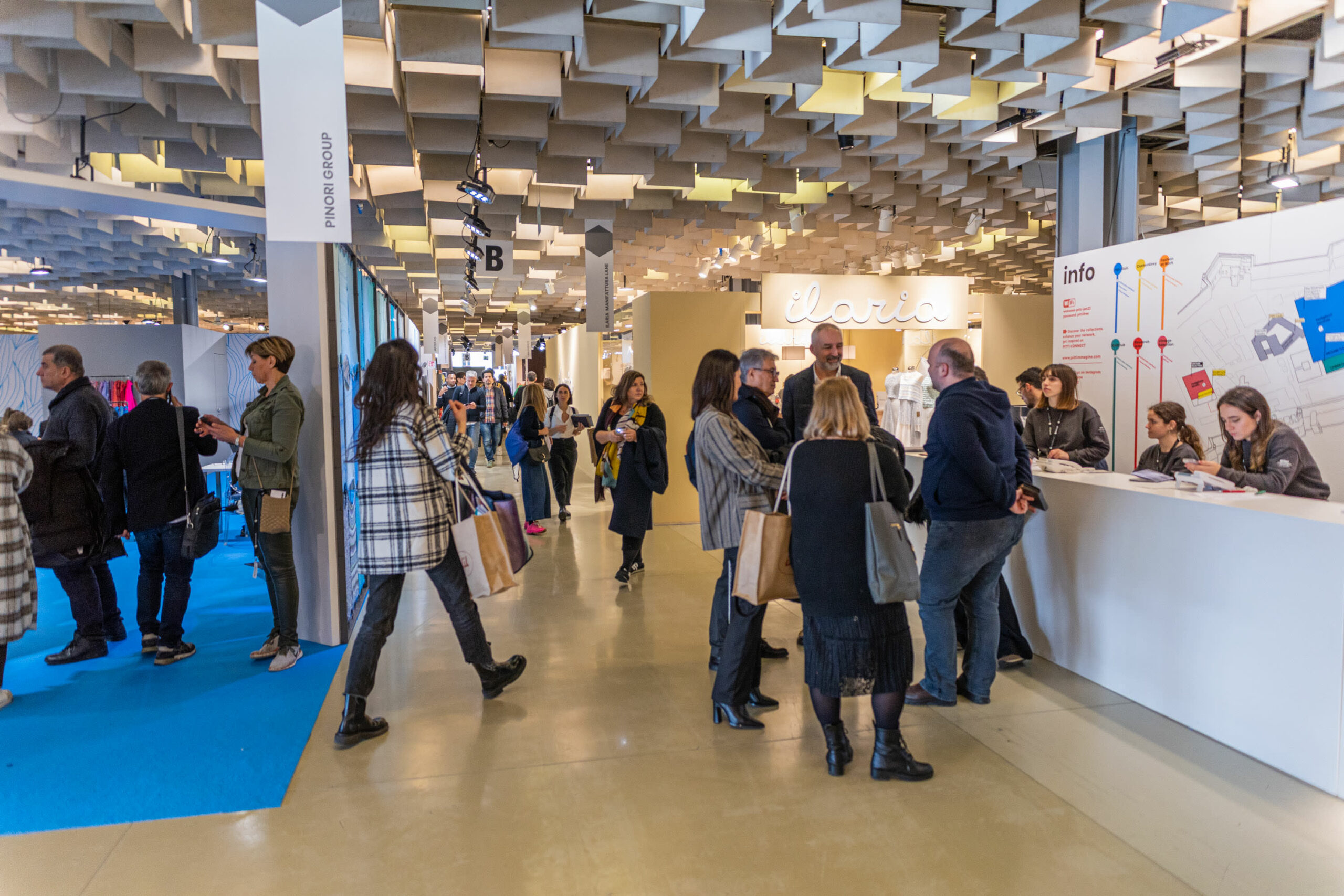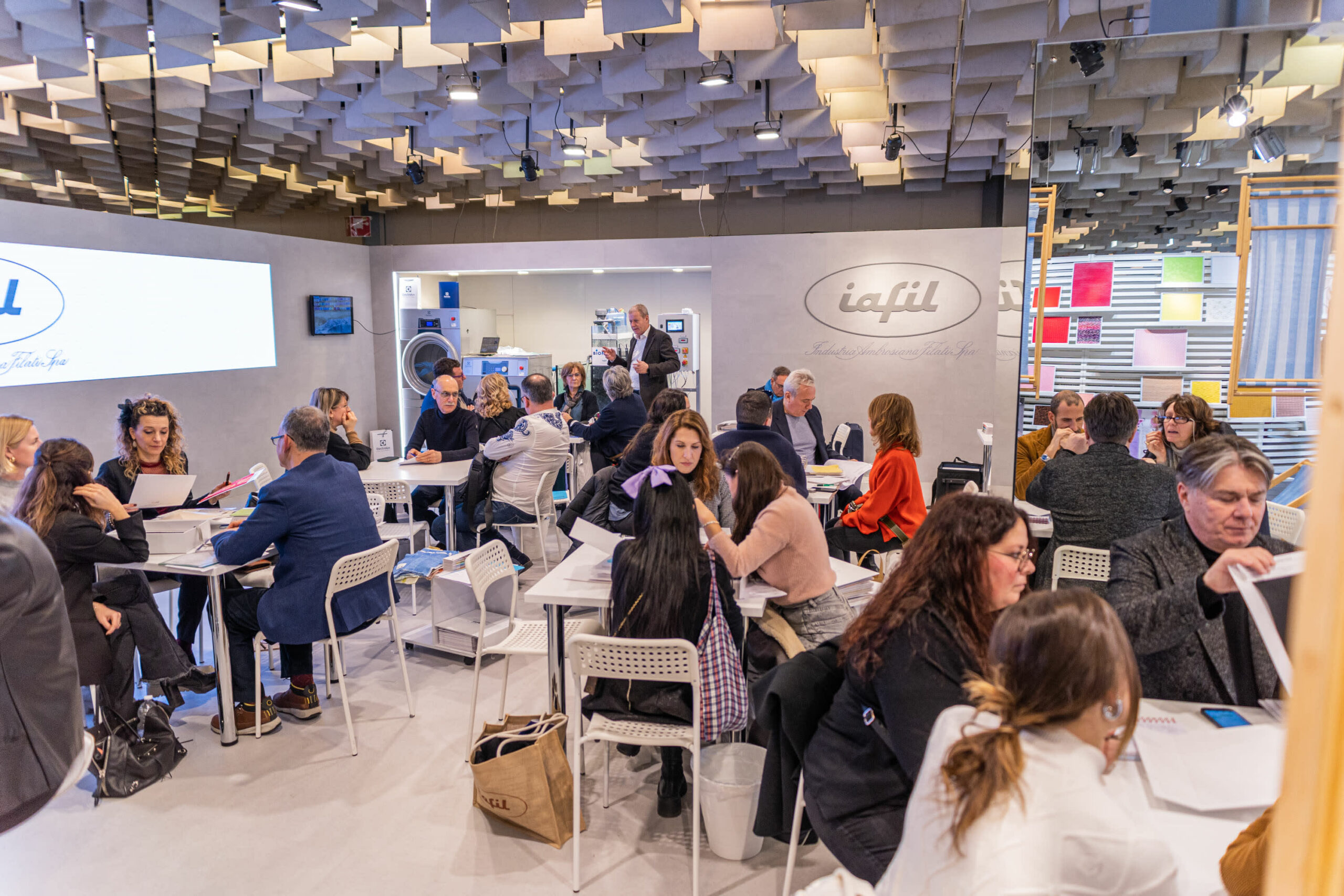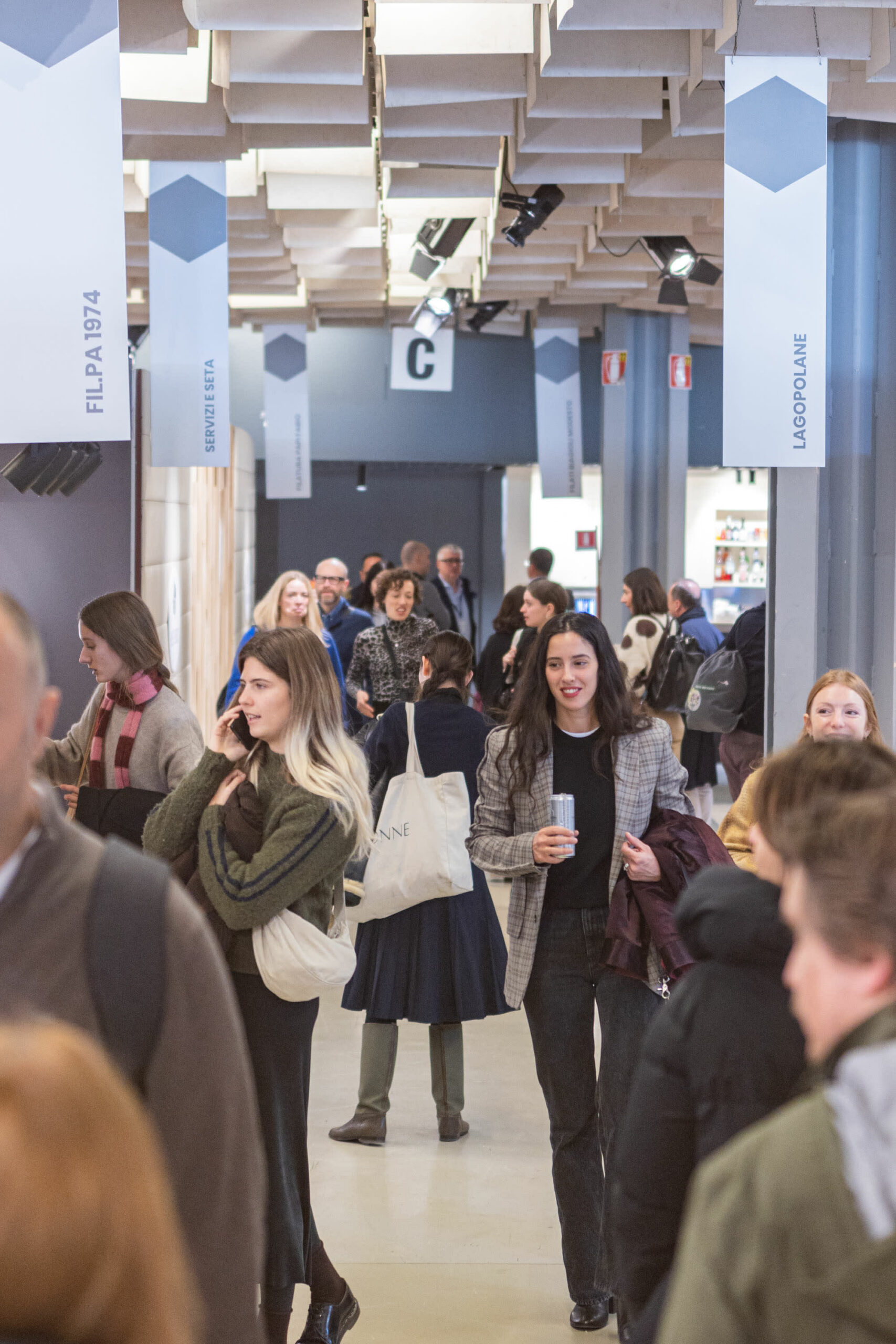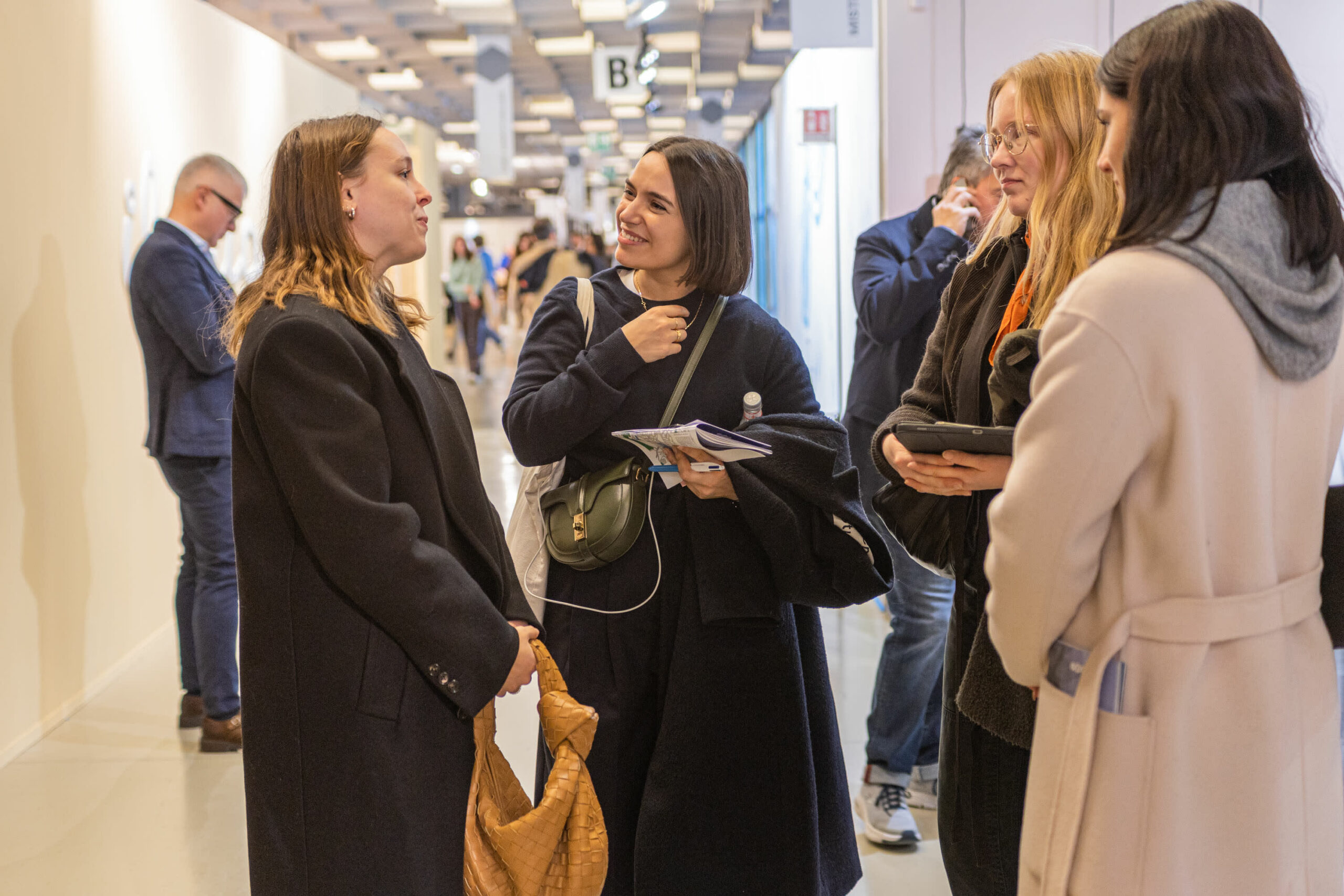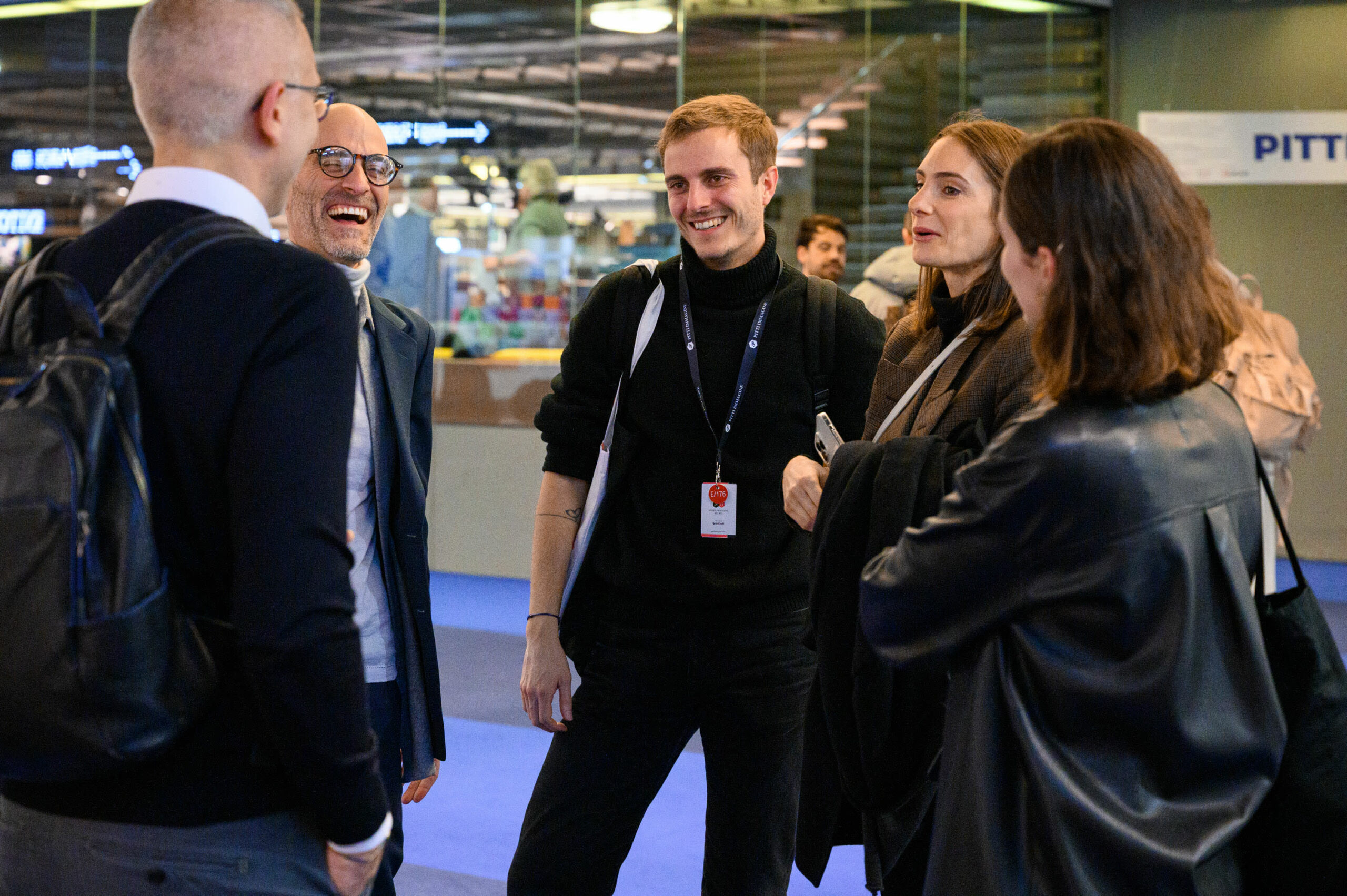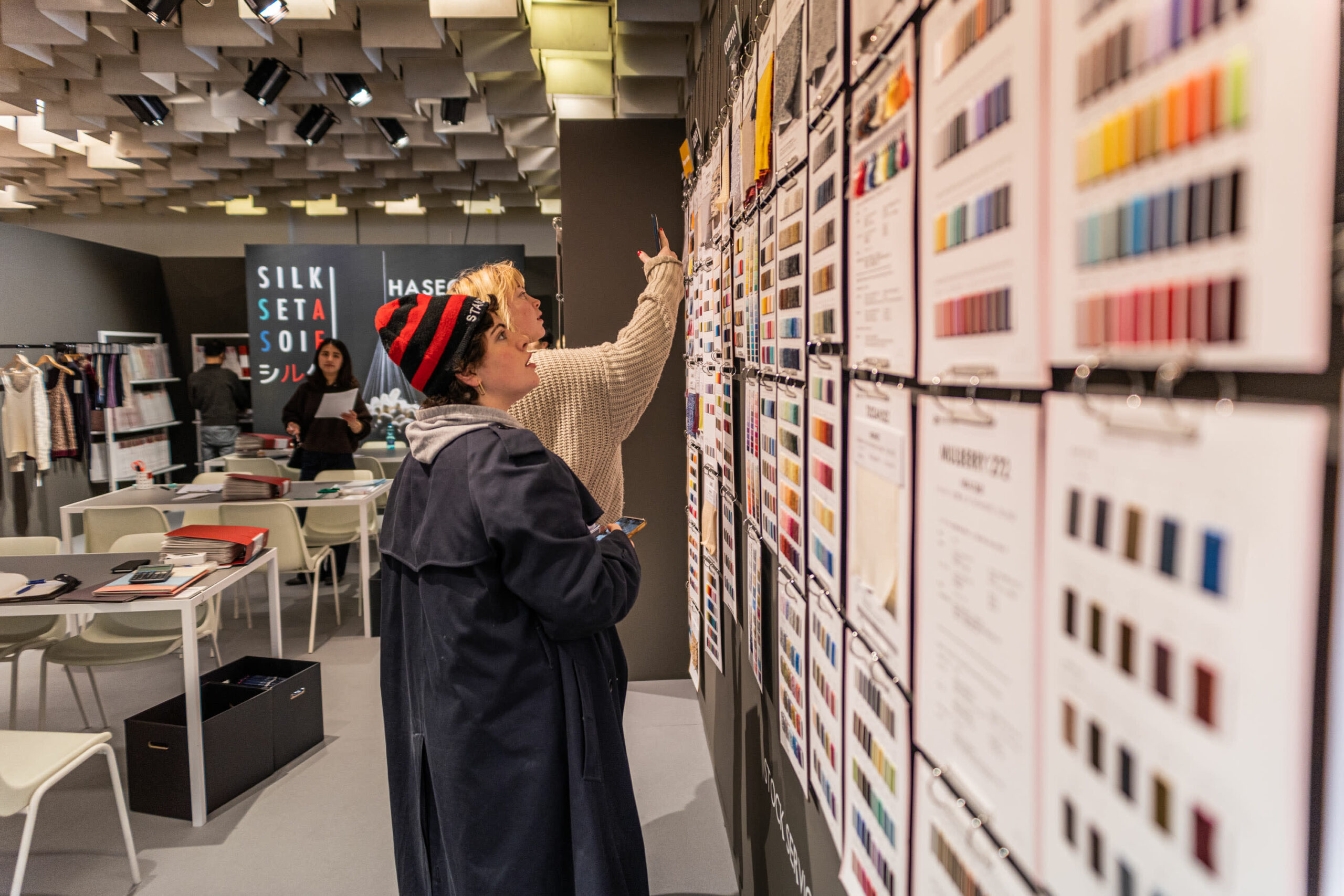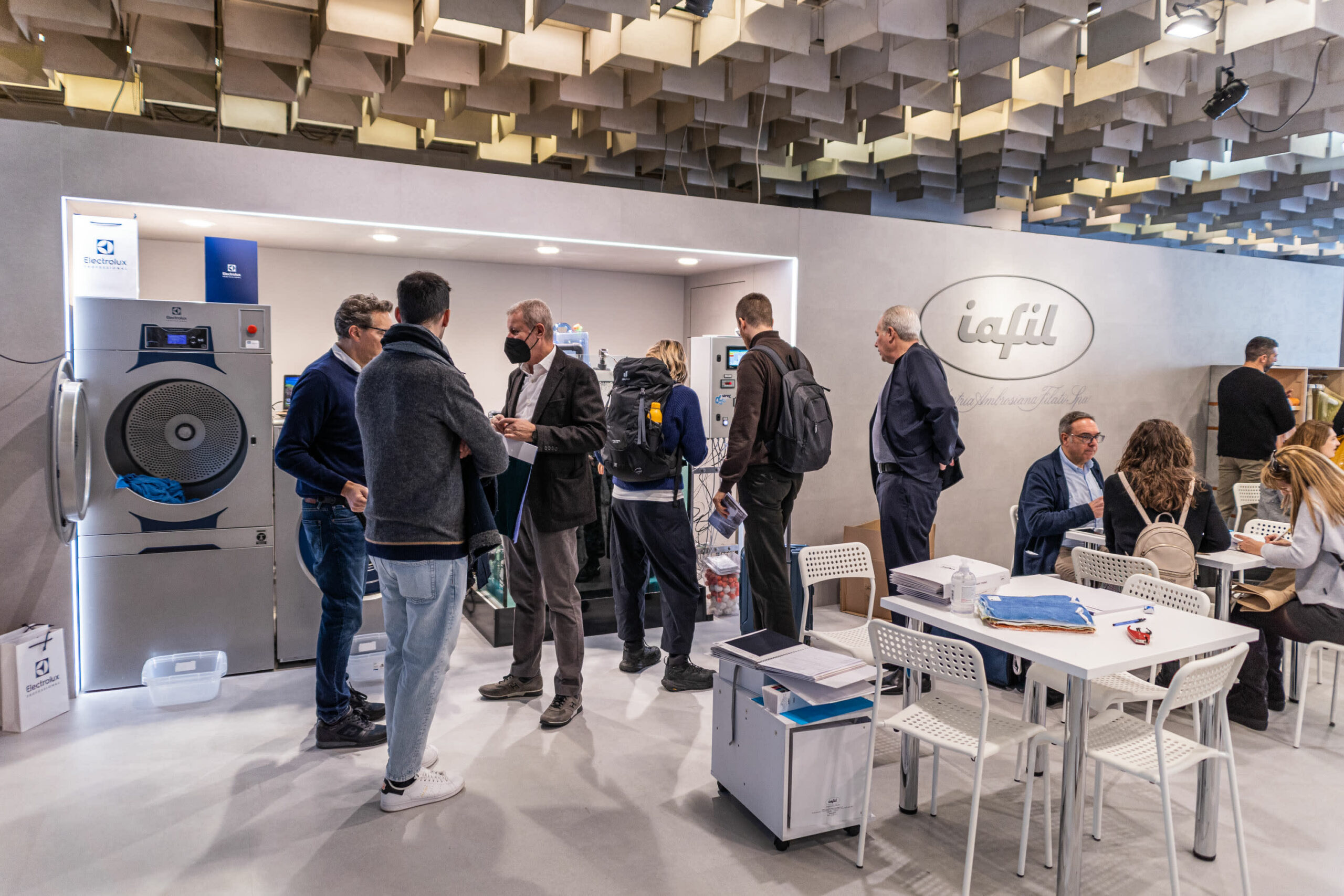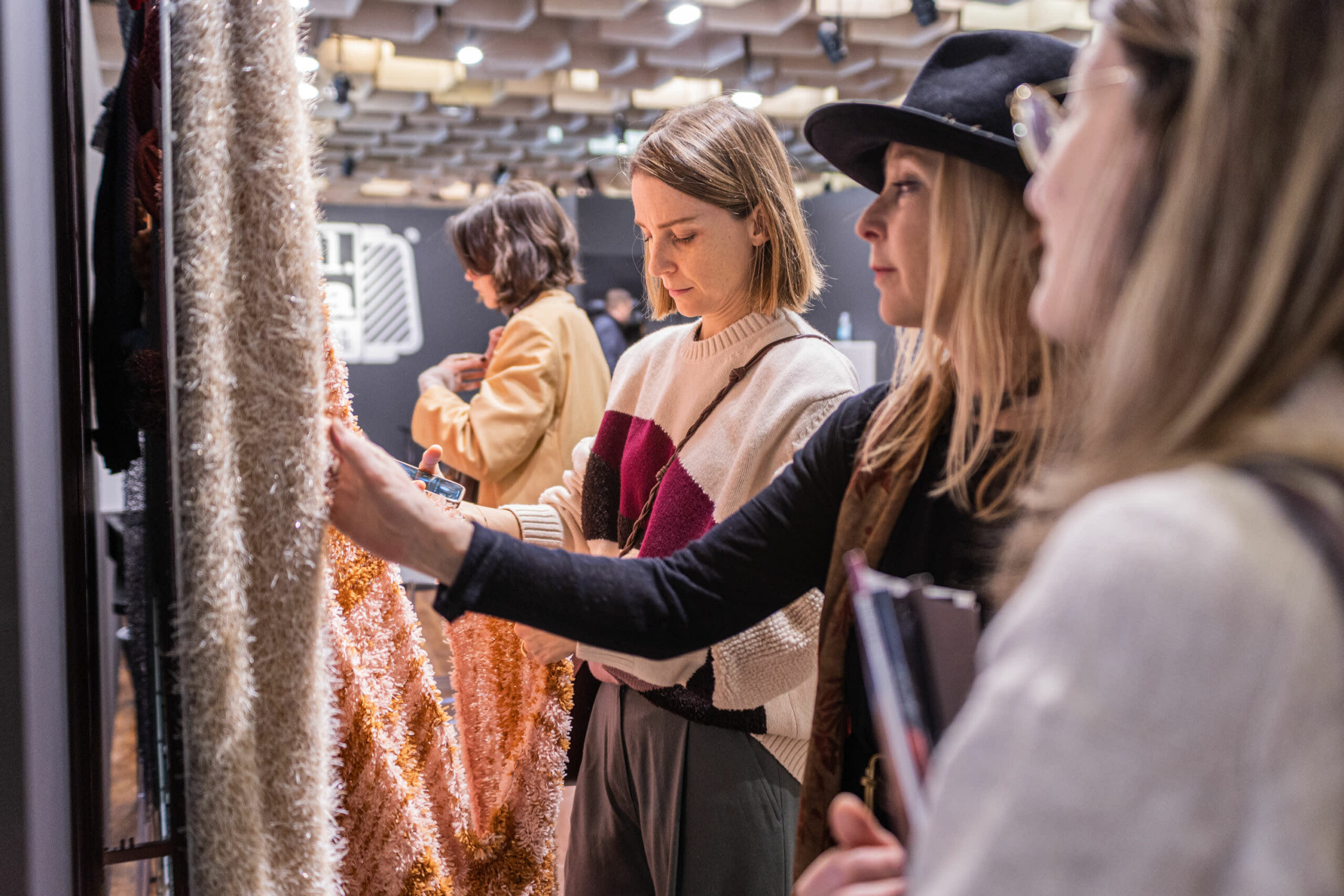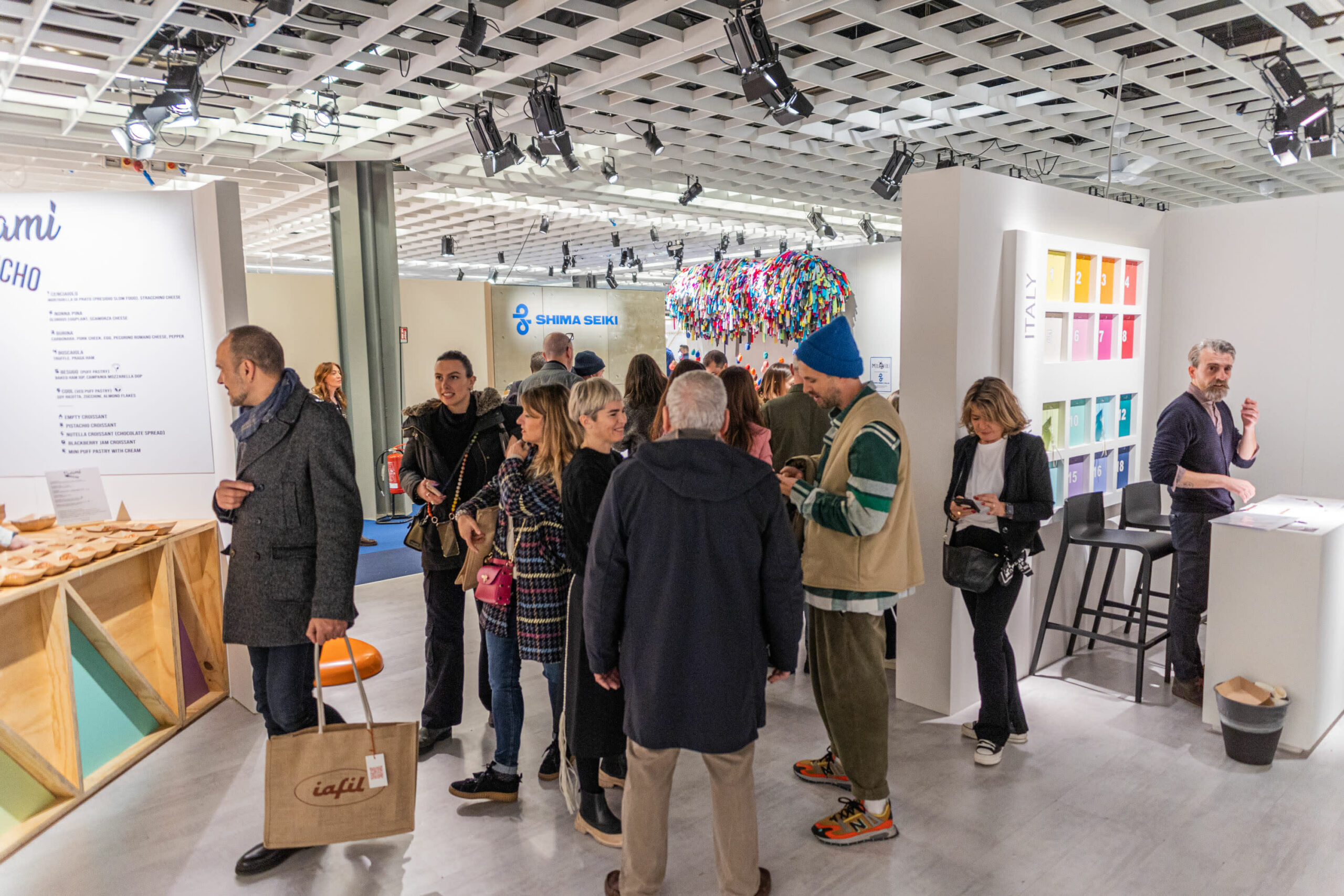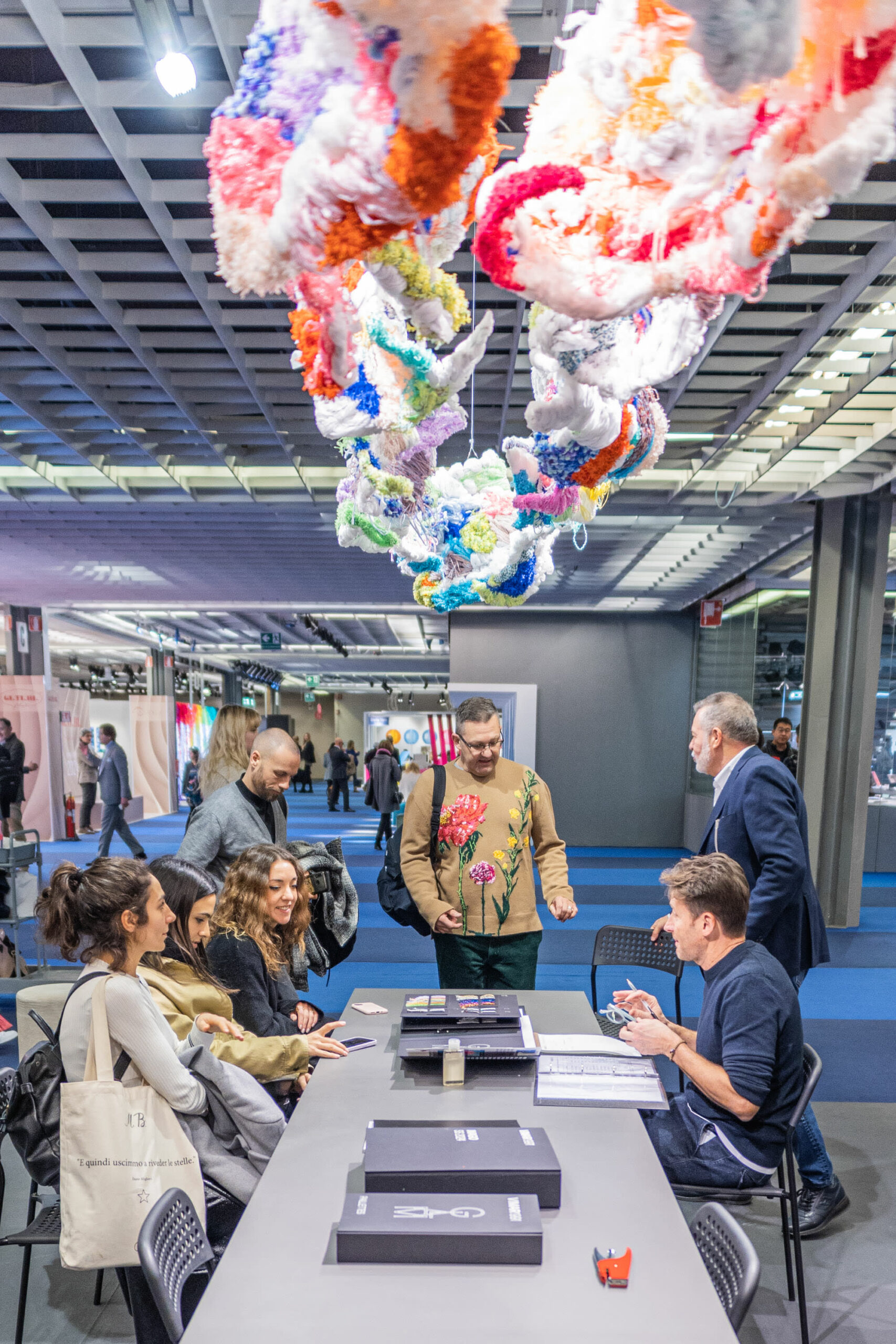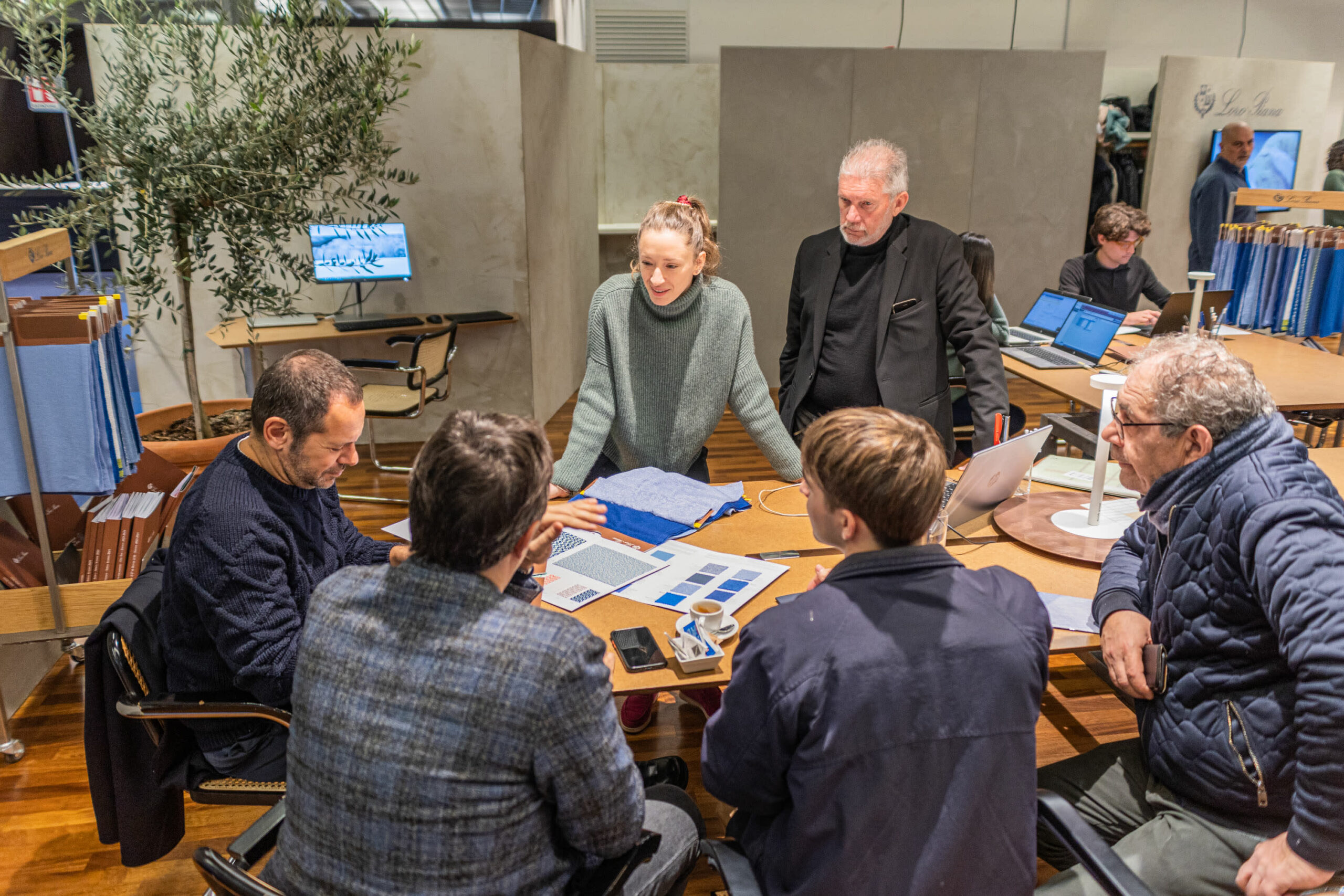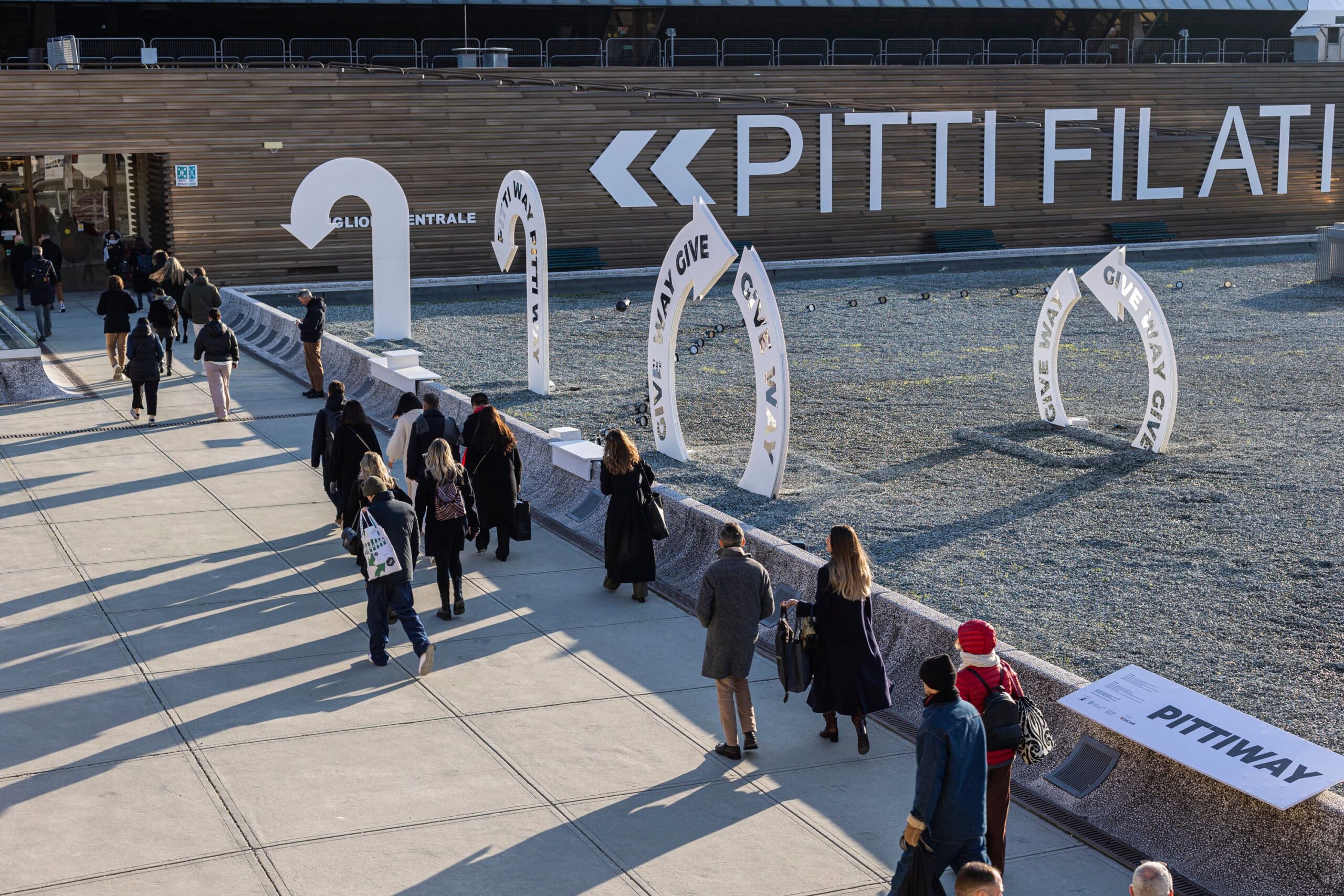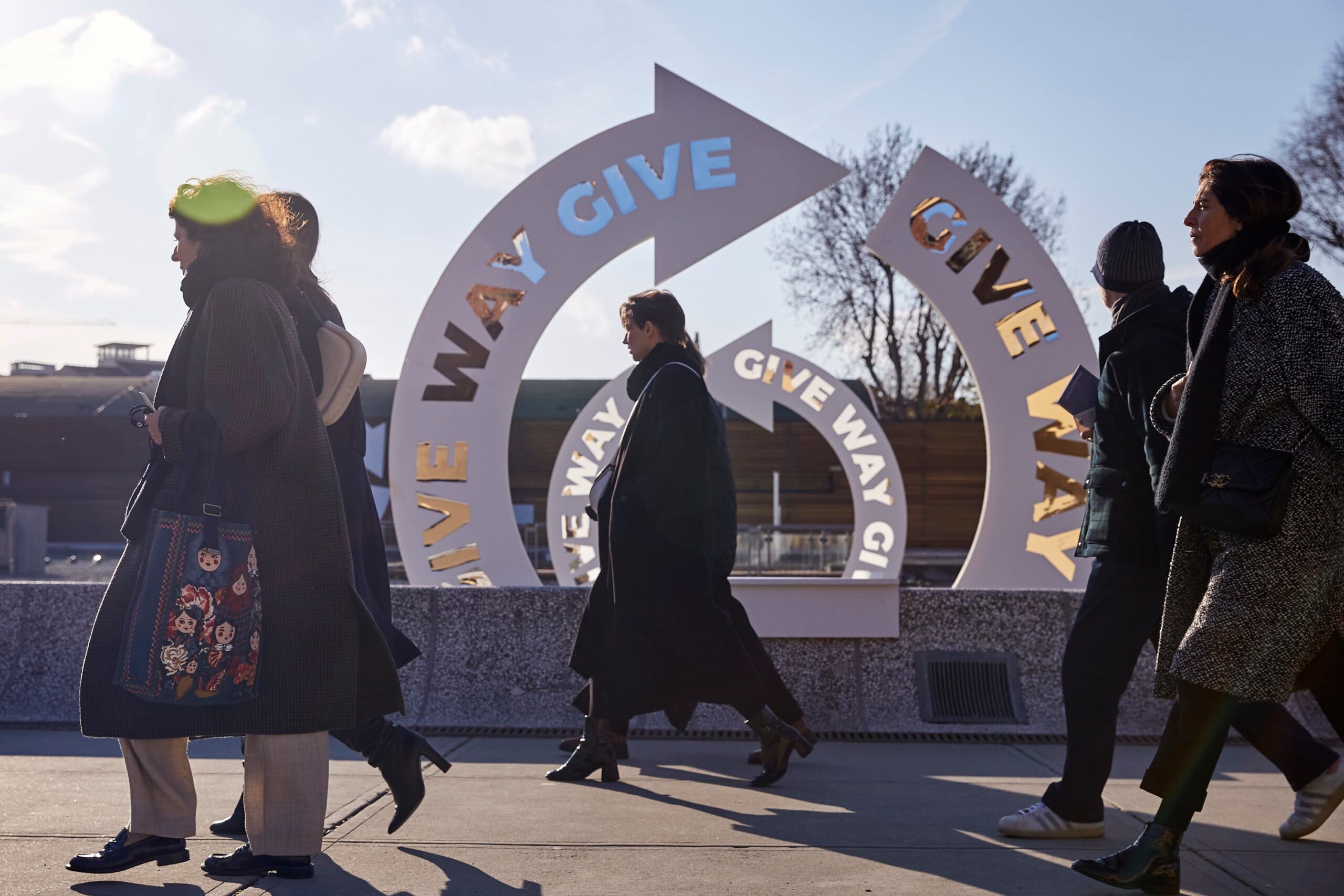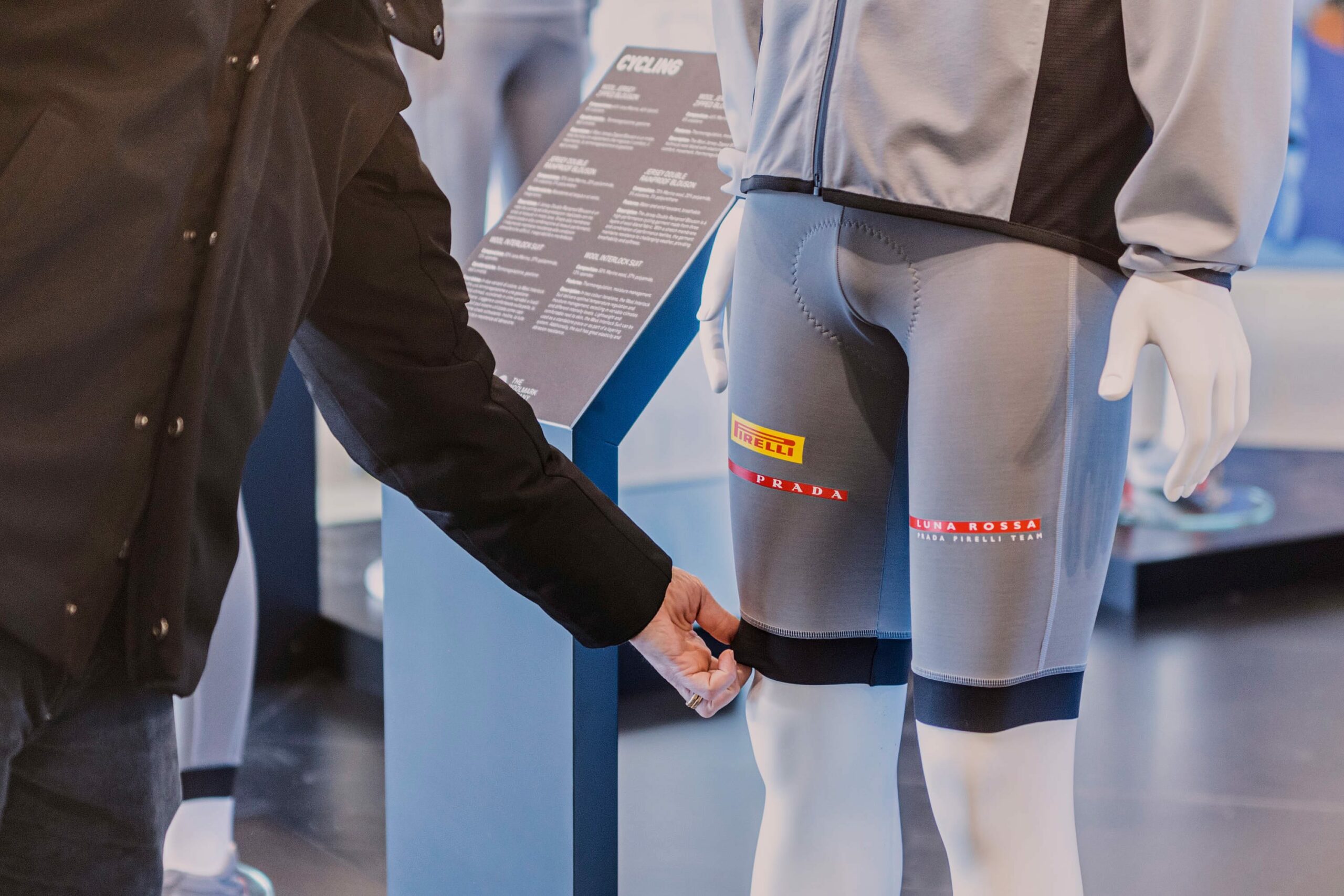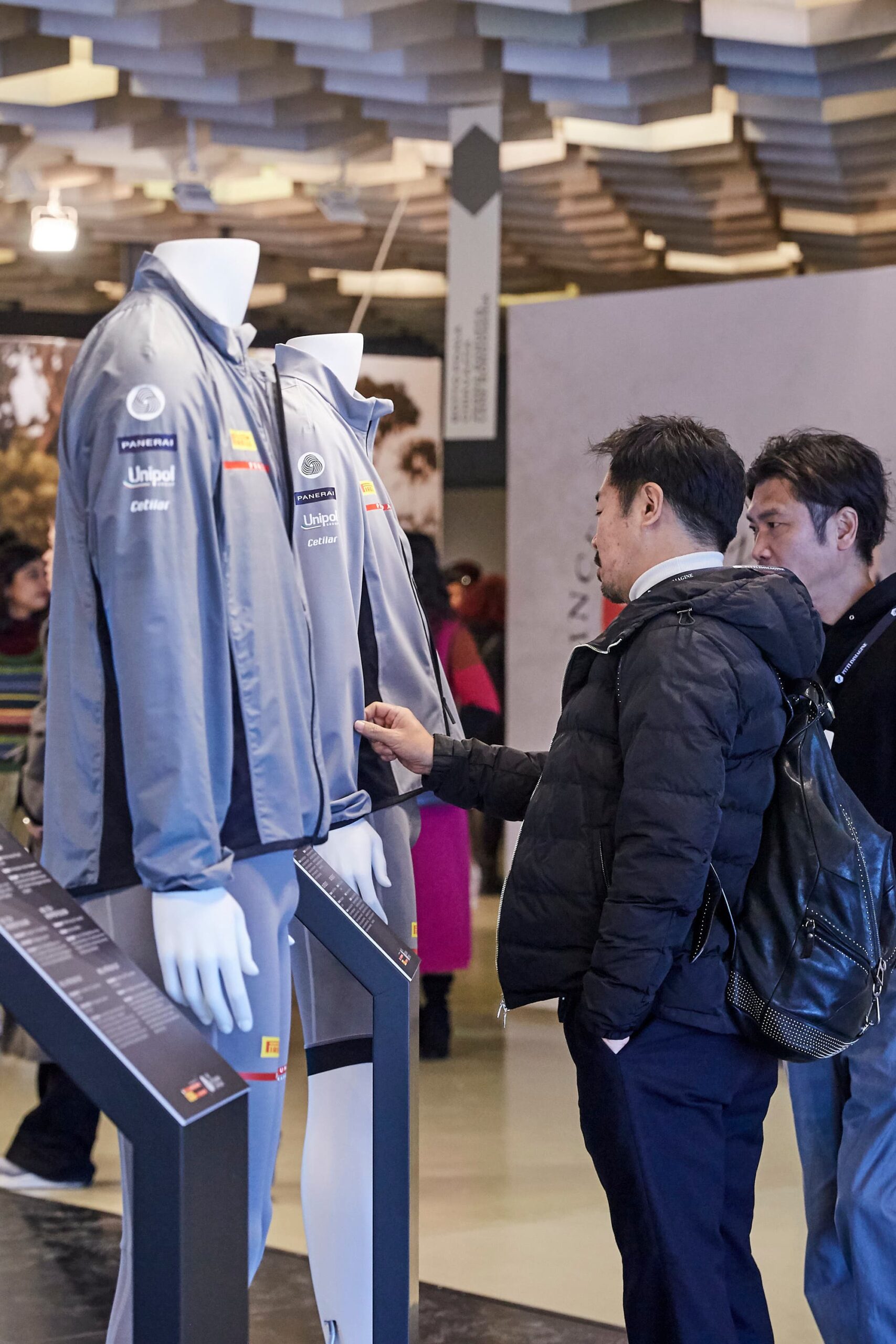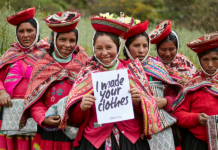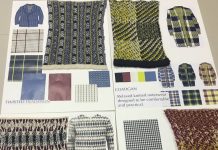Florence, Italy
Mills aim for colour and low environmental impact in upbeat Florence showcase.
Attendance at the first restriction free edition of Pitti Filati in Florence almost reached pre-Covid numbers, which pleased the organisers. The opportunity to restart and renew contacts was obviously very welcome to exhibiting spinners and international visitors entering a colourful fair.
Colour is a major factor in the season, evident from the first sight of the stands. Yarns are bright but refined and colours unusually mixed, with blues, lime green, and pale yellow with various degrees of shine and melange. Fancy crochet effects and irregular constructions give an extra decorative, sometimes punk look.
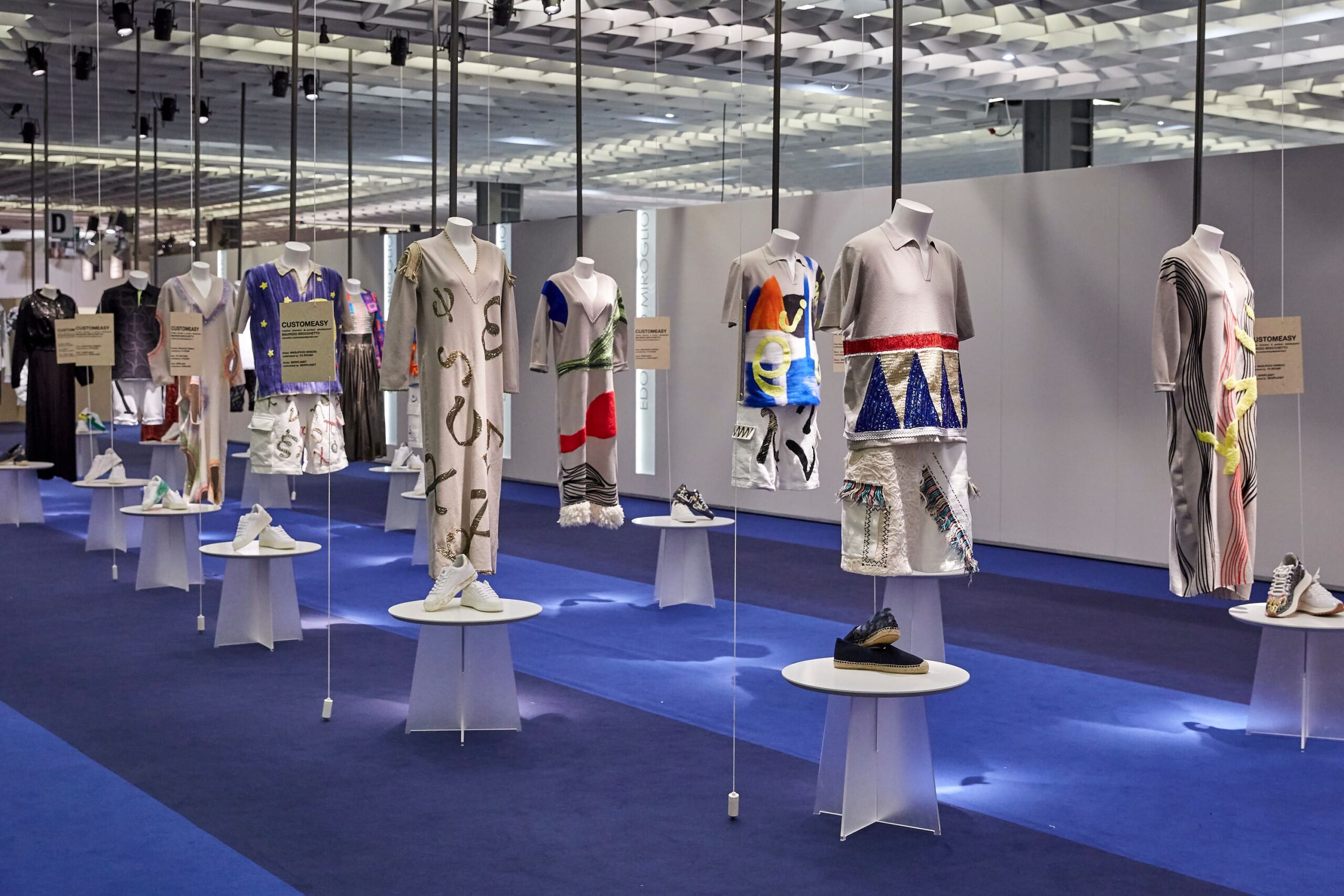
Nearly all yarns came with eco credentials. Natural fibres were to the fore for summer; fine wool, alpaca, cashmere including cashmere with silk or cotton. Certification is routinely expected with assurances about manufacture and the re-use of natural resources in the brochures of most companies.
Details of Alphabet- Spazio Ricerca
The major descriptor of yarns this season is colour, emphasising the progress made in sustainable dyeing techniques and circularity of systems. There is a mixture of interesting blends of natural raw materials and bright and shiny yarns, sometimes with recycled manmade fibres. Natural biodegradable fibres included silk, European flax, linen, Merino, RWS wool, GOTS cotton and Bemberg Cupro and animal fibres.
CustomEasy
Ancillary areas of the exhibition are expanding. CustomEasy has helped to revive the art of stitch development, adding printing on knits, embroidery and applique, lending, stitching and experimenting.
Knit Club
Knit Club featuring Italian luxury and bespoke knitting companies is a significant draw for many visitors. The Spazio Ricerca philosophy conjured for each edition by Angelo Figus and Nicola Miller interpreted in a number of arresting interpretations. They chose Alphabet to show the range of ideas and aesthetics, writing that they were flagging the importance of dialogue and communication in a profoundly changed world.
Vintage Selection was also back in force, past inspiration treated with professional seriousness by designers, buyers and influencers.
The evolution of yarns with ecological references continues in line with climate change issues. Greenhouse is Zegna Baruffa Lane Borgosesia’s new Spring/ Summer 2024 collection, wool yarn designed for all seasons, all weathers, many easy care, many dyes certified for minimal water use or re-use. Here Branchwool NM 2/48s a 100% all season Merino had a dry feel, available in machine washable and total easy care, like FILIX NM 2/60 extra-fine crepe performance Merino yarn, also machine washable
The Woolmark Company stand underlined the growing area of operation and opportunities for the innate qualities of wool, evident in Merino being identified as a technical partner for high profile Luna Rossa America’s Cup team, with Pirelli and Prada, demonstrating the possibilities of co-operation to maximise fibre potential, especially in the area of serious protective clothing. Now The Woolmark Company has worked closely with the Luna Rossa product development team to expand the current kit to include performance-first apparel for cycling, running and gym-based training activities, focusing on technical performance.
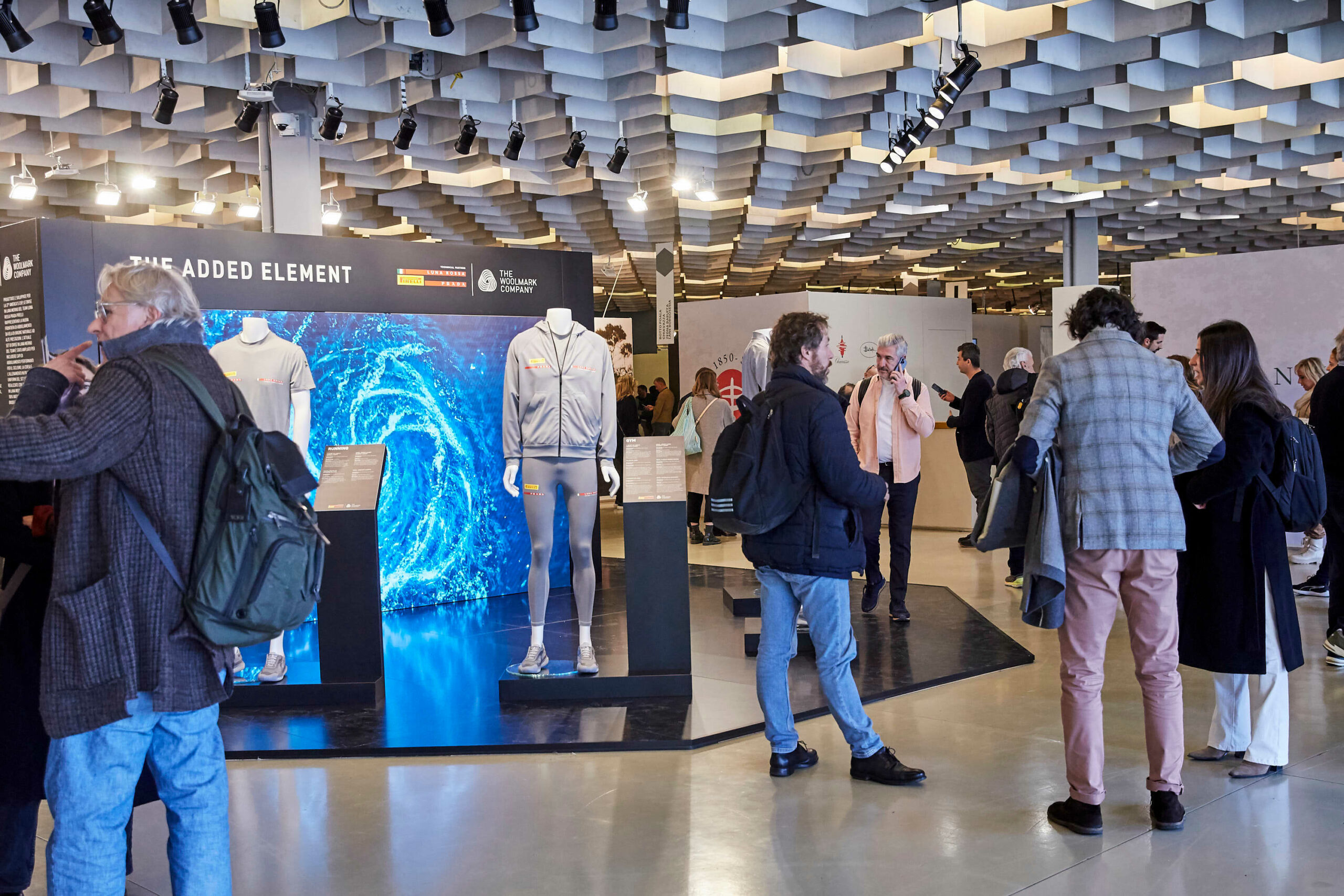
Lanificio dell’Olivo chose different fibres to achieve specific colour effects including organic cotton, viscose and recycled polyester. Linen was selected as fitting a light collection in terms of both weight and structure, used with base and primary colours for colours such as lobster rose, lime, sea green and olive green, with luminous accents.
Todd & Duncan is renowned for producing the only cashmere yarn spun, coloured and crafted in Scotland, the colours often reflecting the soft Scottish countryside or based on artistic works. This year a collection of bright new cashmere colours turned heads including Purple Tang, pared back neutrals and stunning yet sophisticated brights contrasted with linen/cashmere blends Cashmere was a season’s lead fibre Cariaggi also blending some yarns.

Soft yarns were popular. Lana Gatto showed Catena Soft 40%cotton/37 extra fine Merino, and 23% baby alpaca choosing pure natural yarns and also blends with synthetics for glamour Some were dyed for a classic mélange effect, wool yarns for skiing and apres ski.
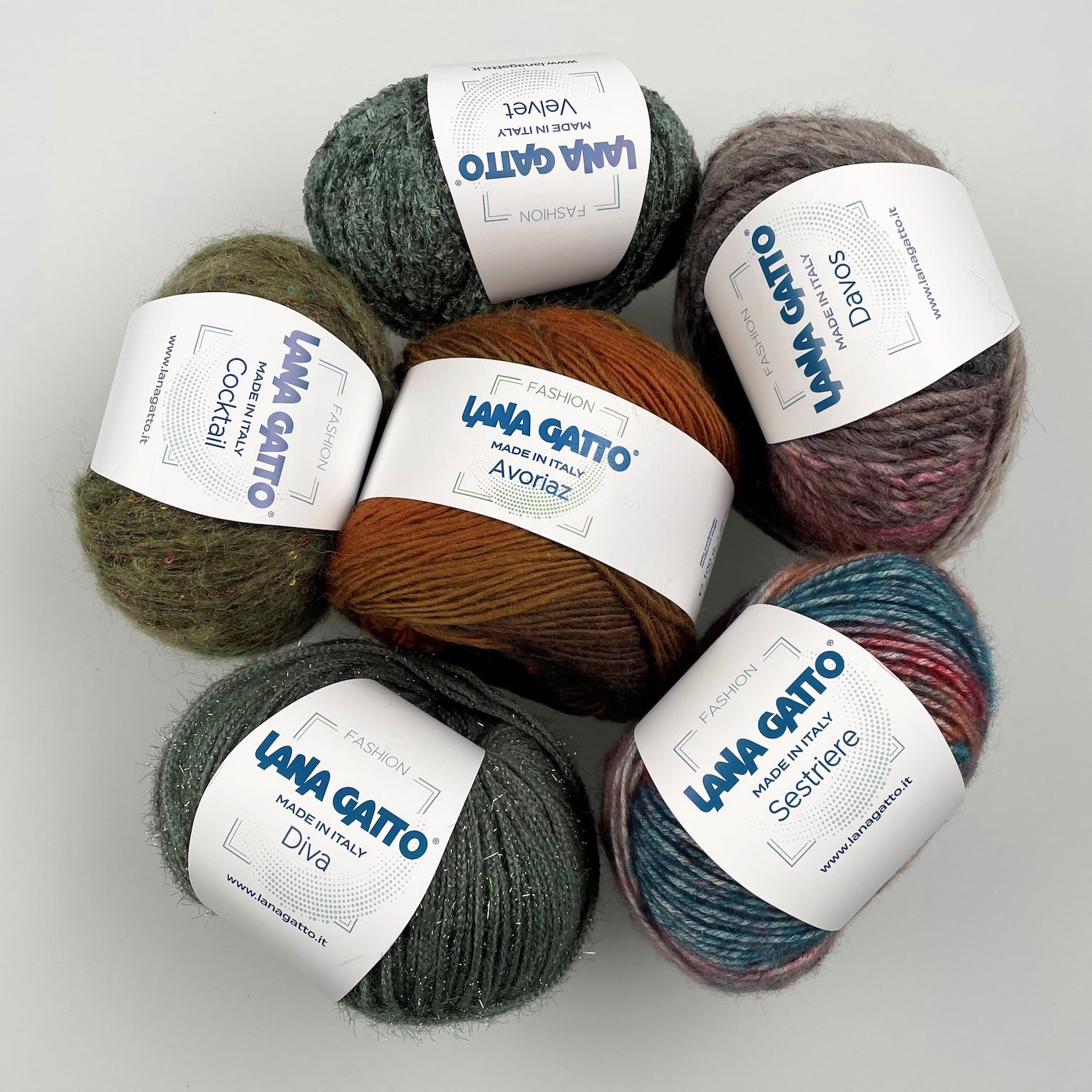
While white, cream and pale pastel looks are on trend for summer fabrics though many felt that the strict demarcation between seasons is waning. Silvio Botto Paola of Luigi Botto described silk as ‘the absolute main player.’ He saw transitional collections to be interchangeable from winter to summer, with a consequent lower environmental impact. A selection of new yarns interpreted the concept of transience.
Cotton blends were central at the Filidea collection, which is mostly GOTS certified, together with European flax, linen and silk. Bemberg Cupro is the RCS-certified regenerated cellulose which Filidea has chosen for development of many knitting yarns both pure and blends, explaining that it takes colour very well, evoking the summer mood, with a prevalence of bright and strong chains.
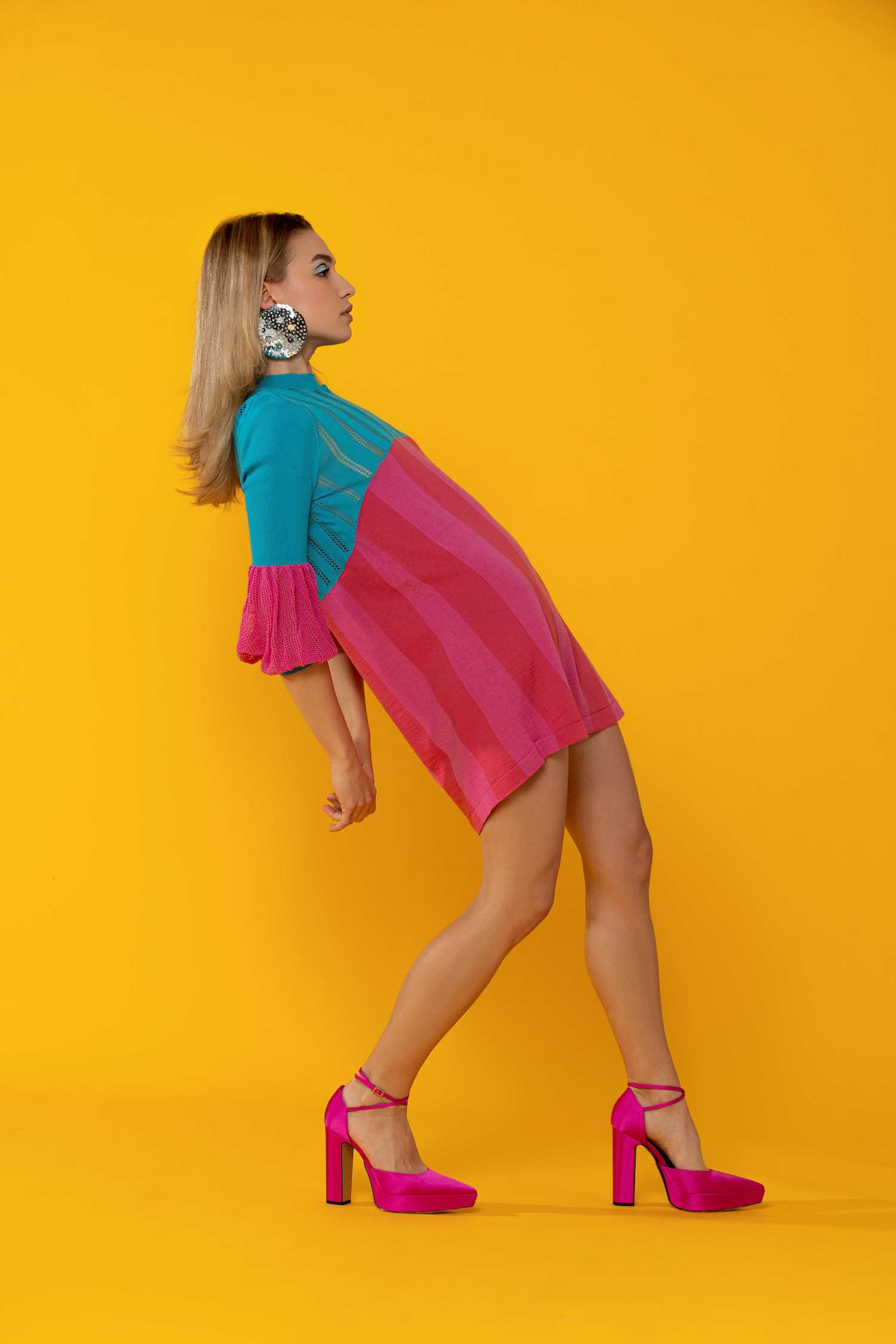
Biella Yarns showed lightweight garments designed by Thorsten Martins and made by Knitwear Lab Amsterdam with contrasting colours, knitted from pure light wool yarn and also blends of wool/linen/silk with a crisp and fresh handle. A variety of textures were interpreted for example a combination of knitting techniques like multi stepping as a way to create the volume for balloon sleeves, plating technique implemented in most parts of the garment as well as Stoll-weave-in knitting to imitate a woven effect overall.
Evidence of a growth in real companies working with educational groups to increase skills continues; co-operation with students of Polimoda from concept to design, called Changing Roots; Apaca del Peru is collaborating with academies in Peru and Italy to highlight eco sustainability and Peruvian cultural heritage with students in Biella. Also Feel the Green (formerly Feel the Yarn) continues its connections with Pitti Immagine and talented student designers on an international level.

Shima Seiki featured a new model for WHOLEGARMENT knitwear in the N.SVR series, using every other needle in ultrafine gauge. The computerised flat knitting machine aimed at entry-level WHOLEGARMENT production, as it possesses great versatility for flexible market demand. The booth drew many interested spectators.
More images from Pitti Filati 92…
Spinners continue to aim for yarns produced with systems that have low environmental impact and eco improvements.

Subscribe To Our Newsletter
Join our mailing list to receive the latest news and updates from our team.


